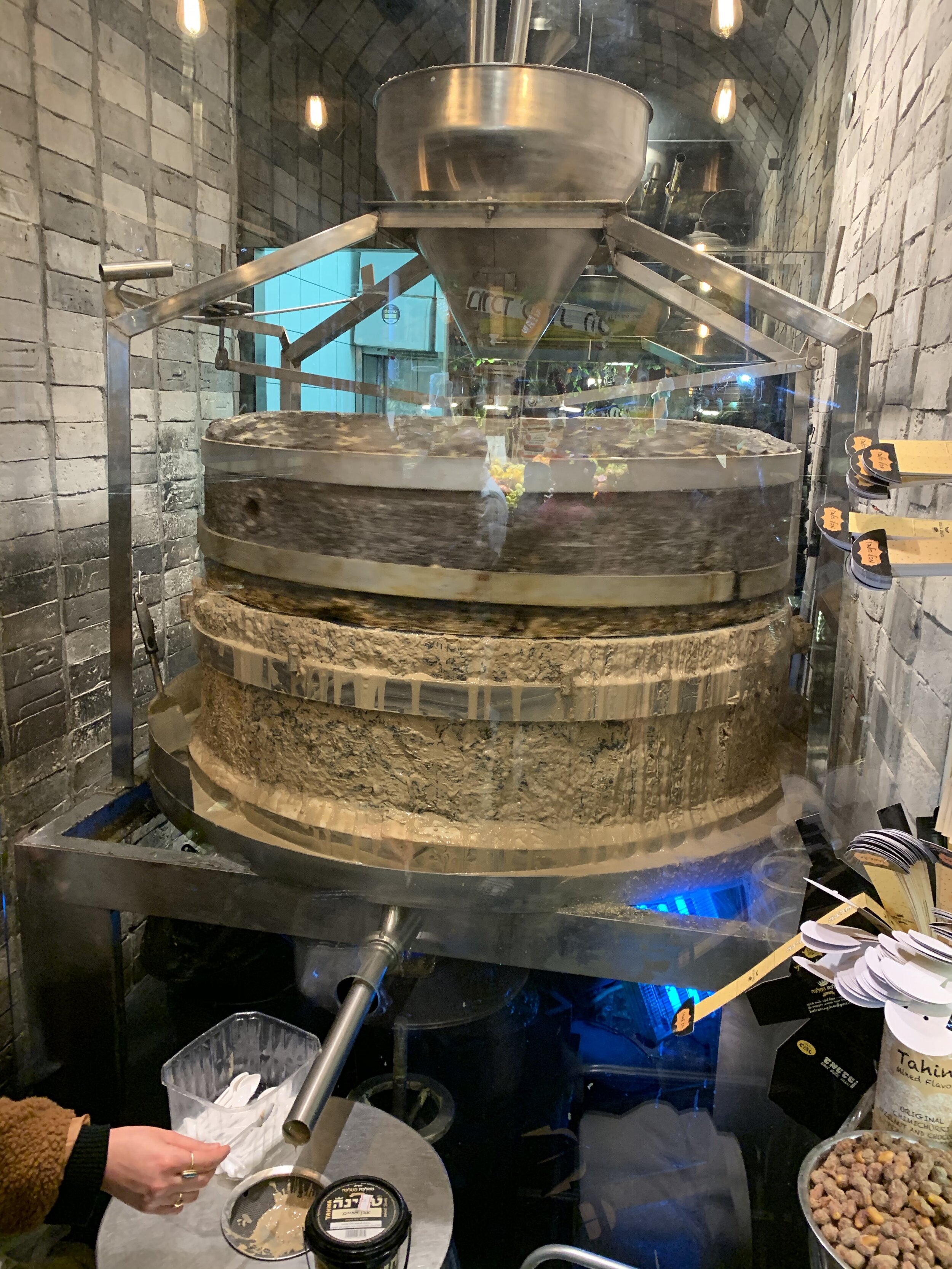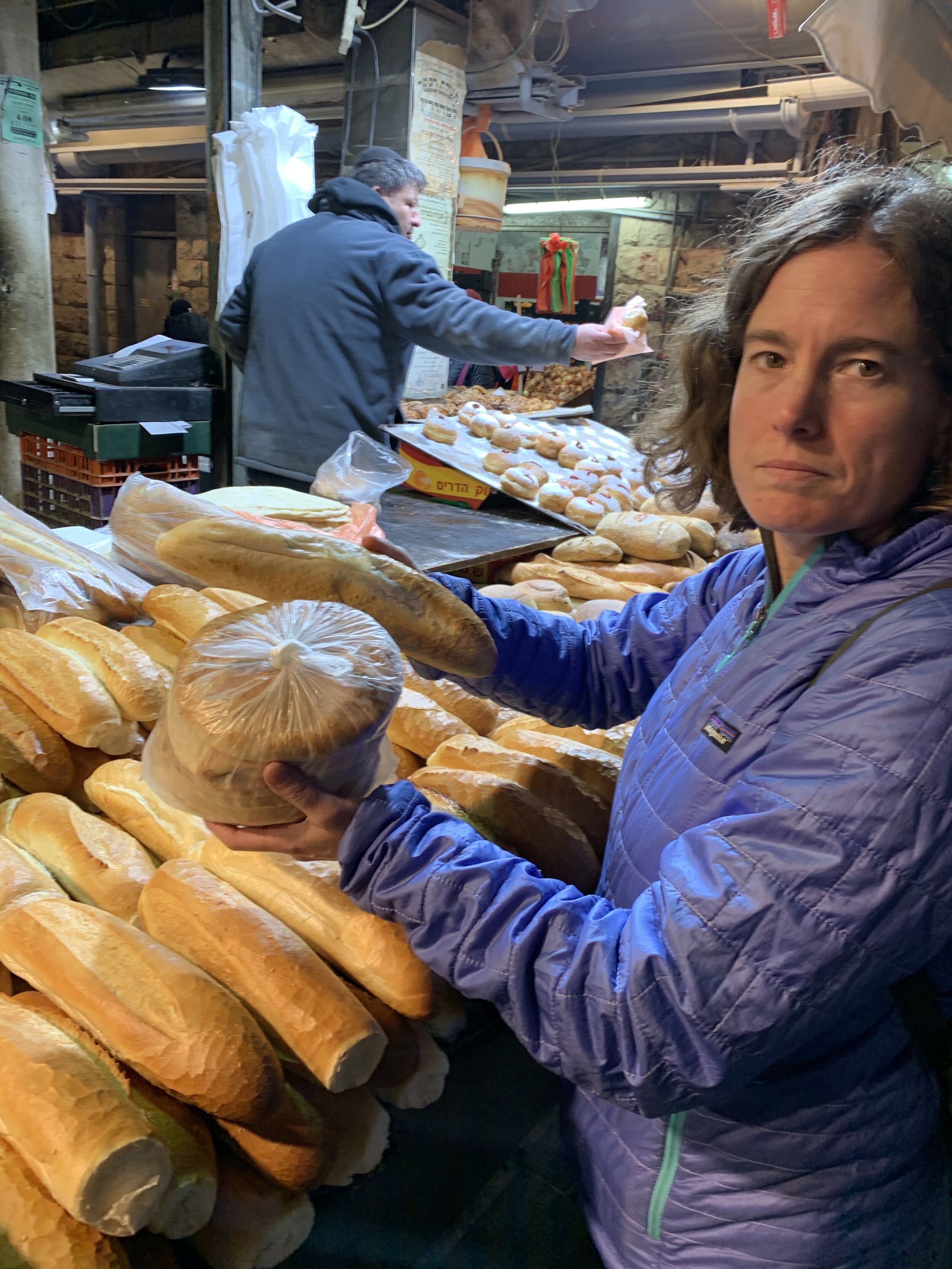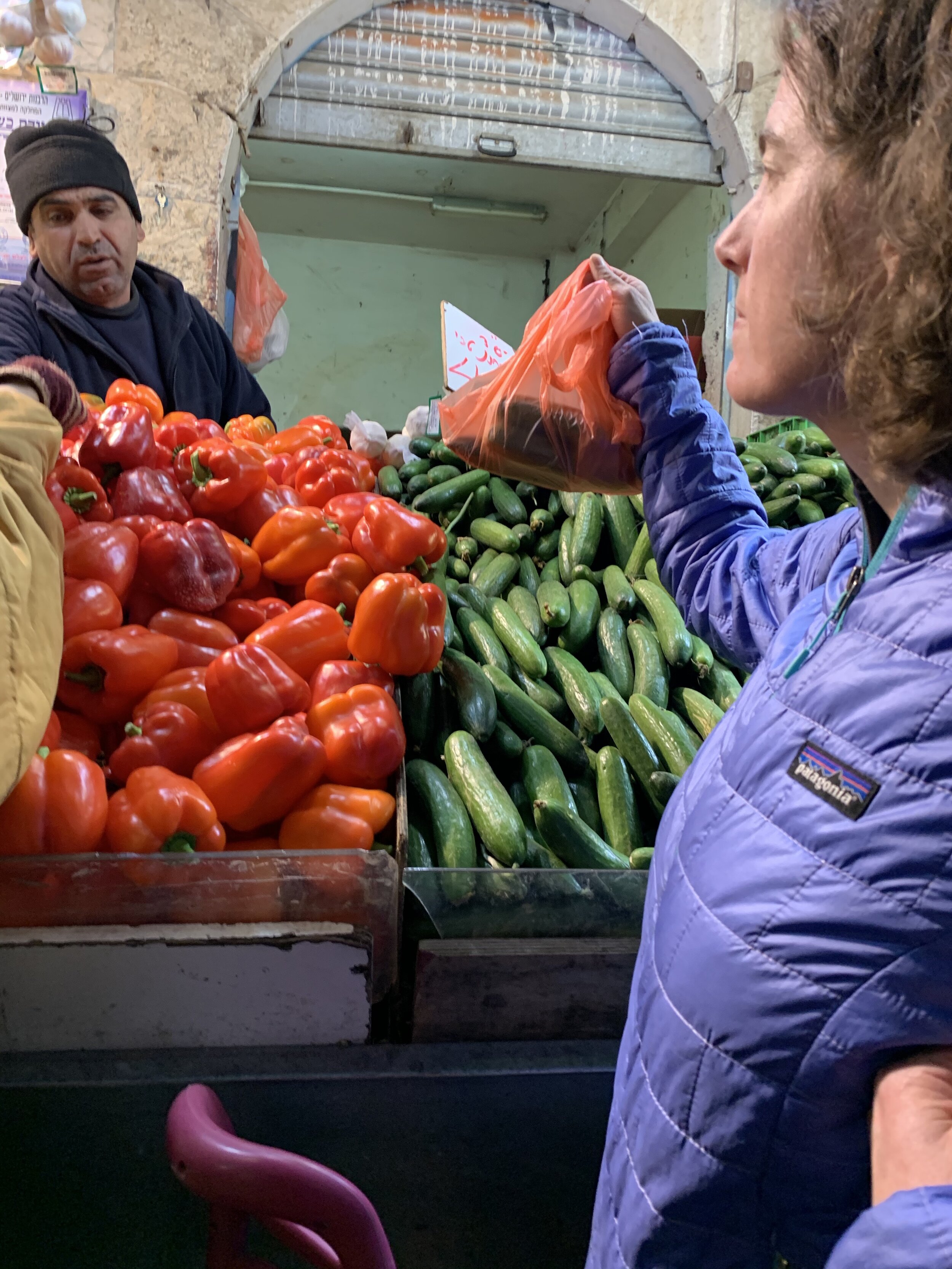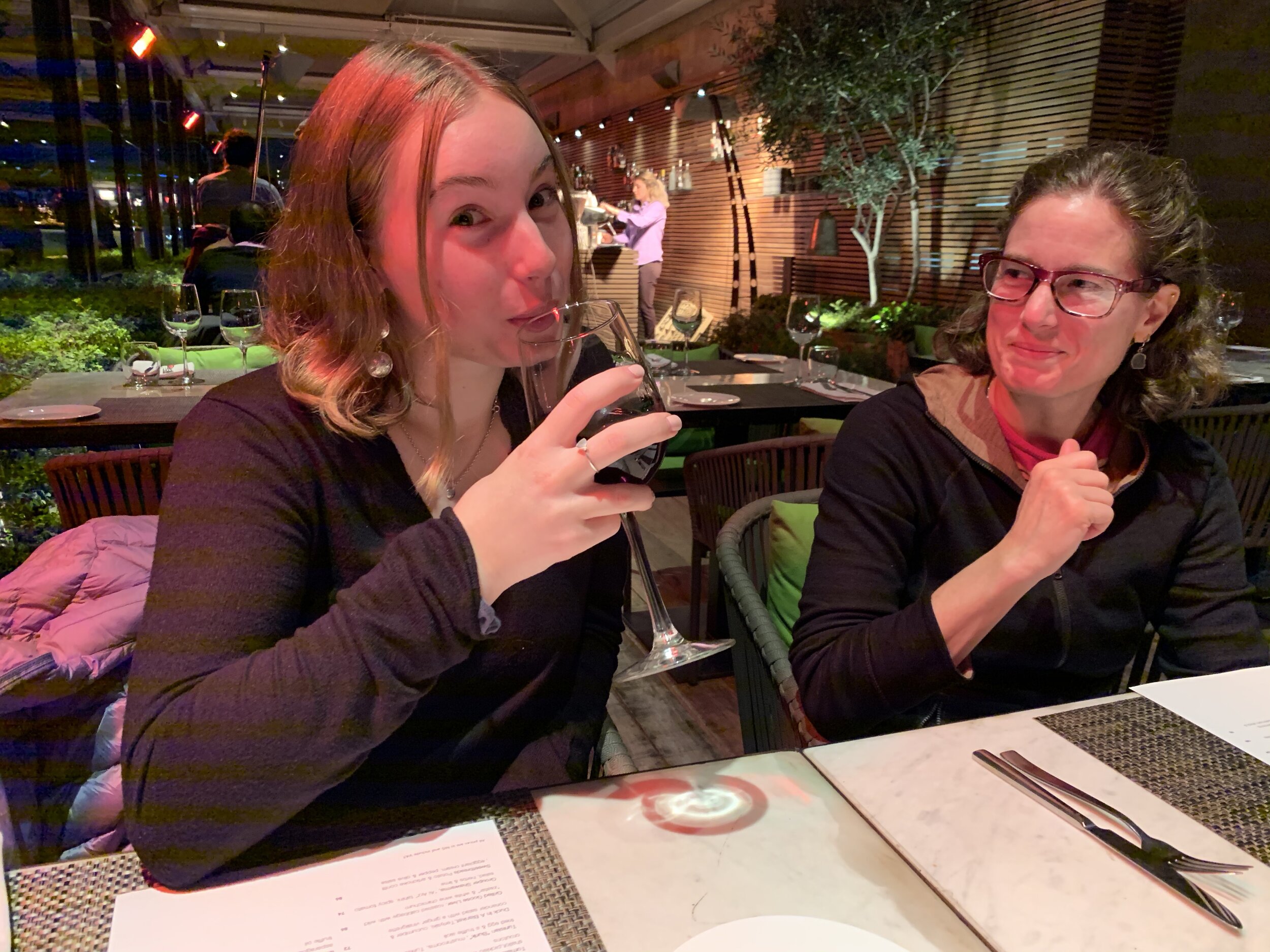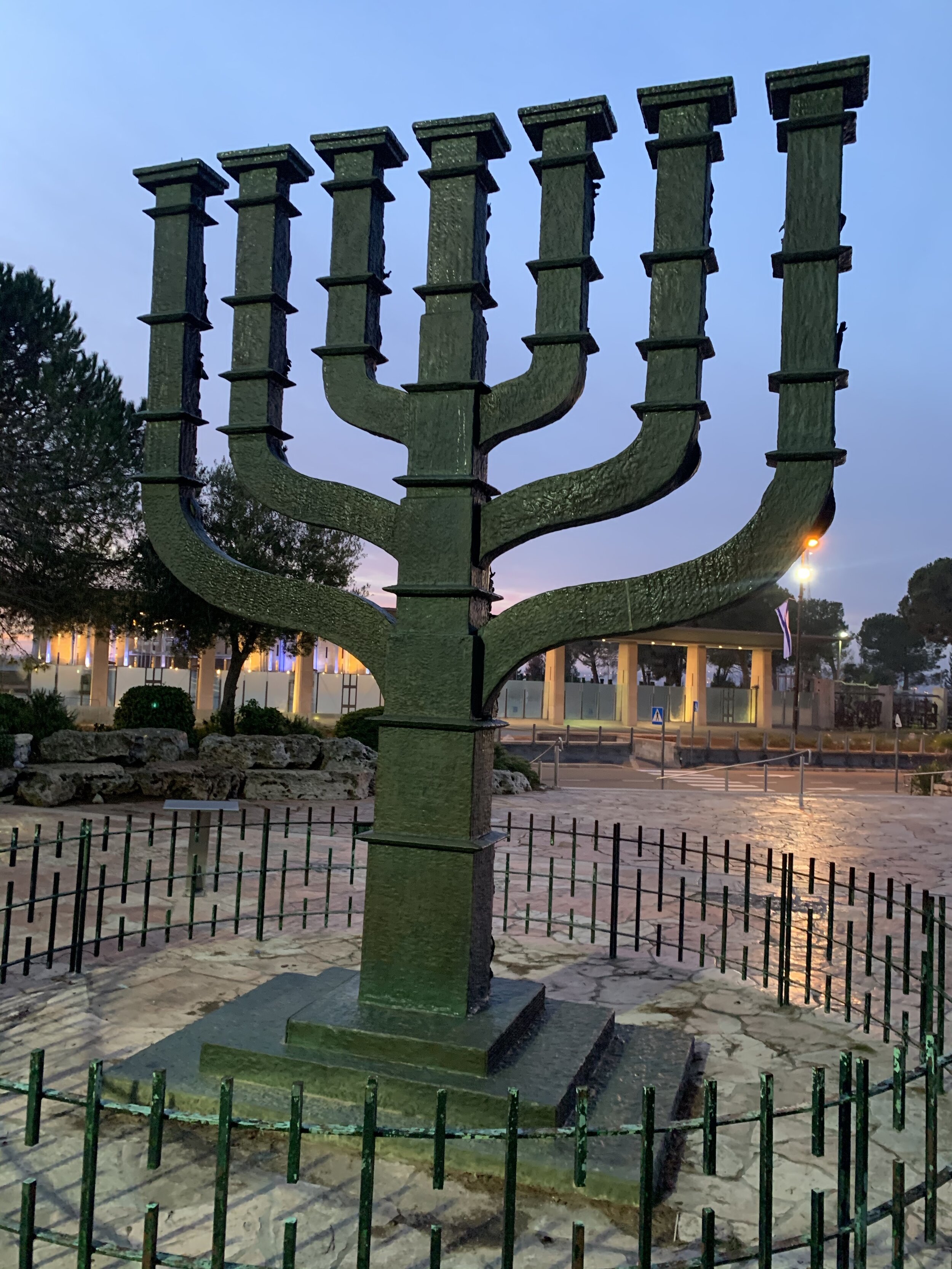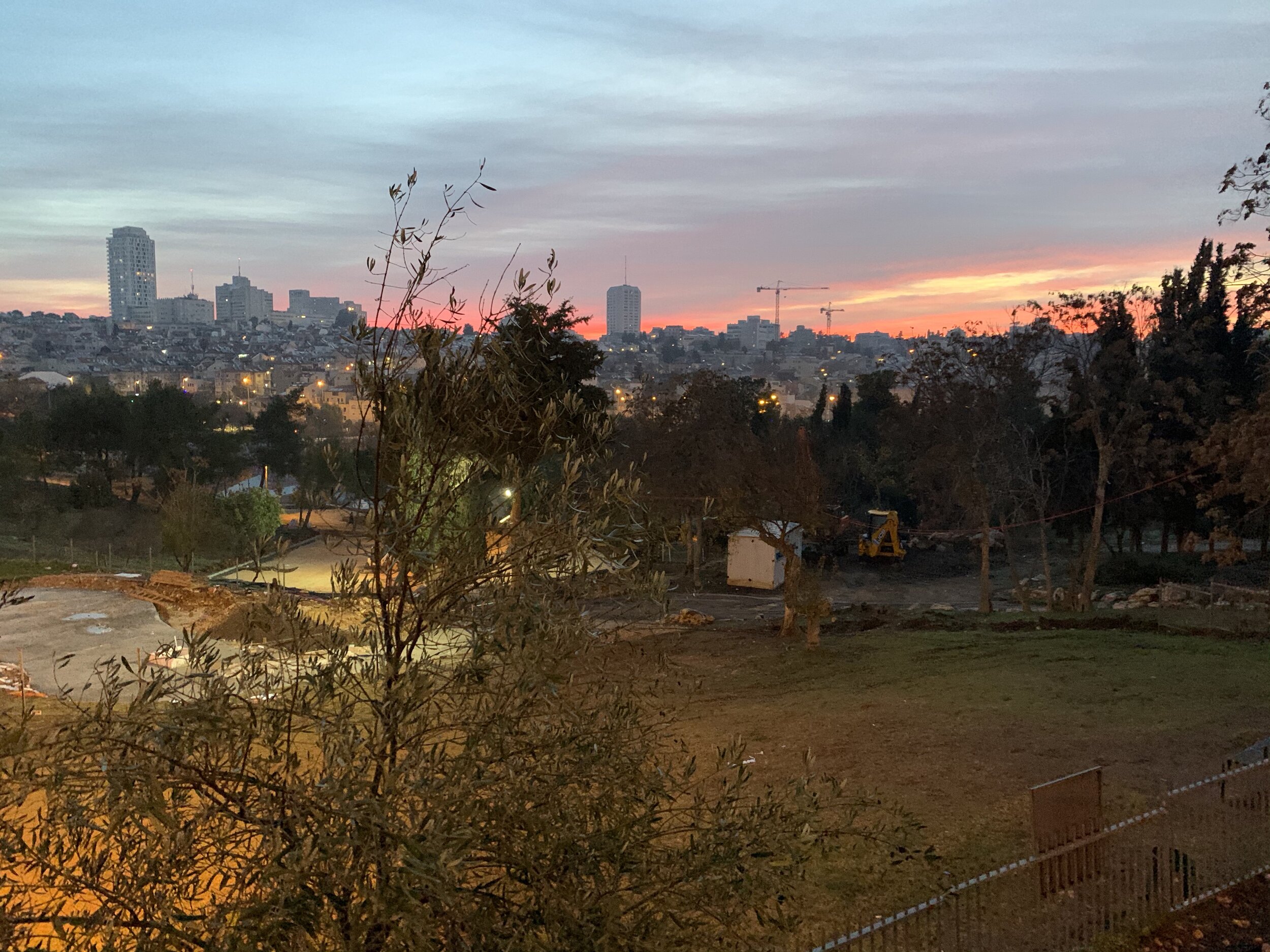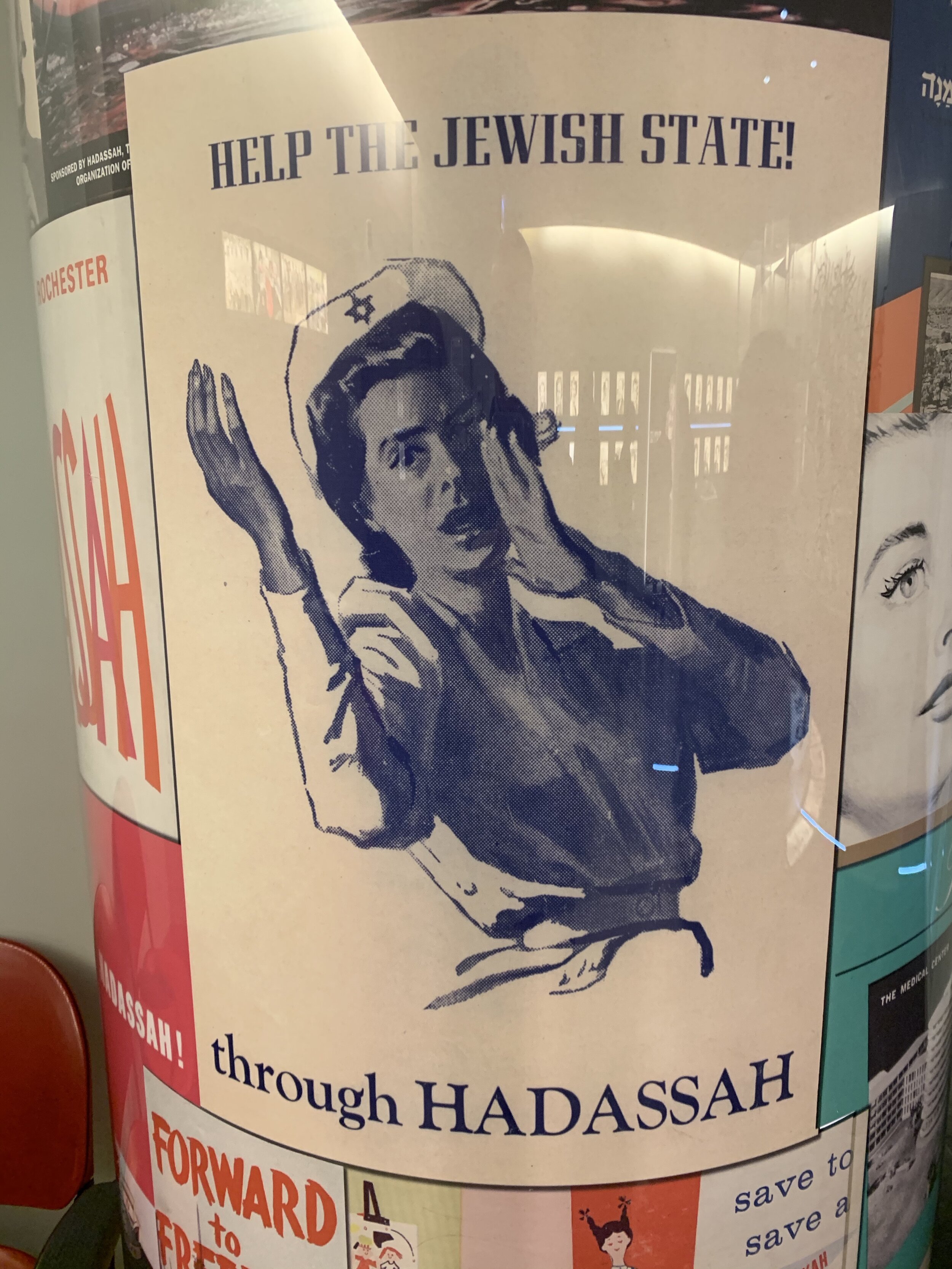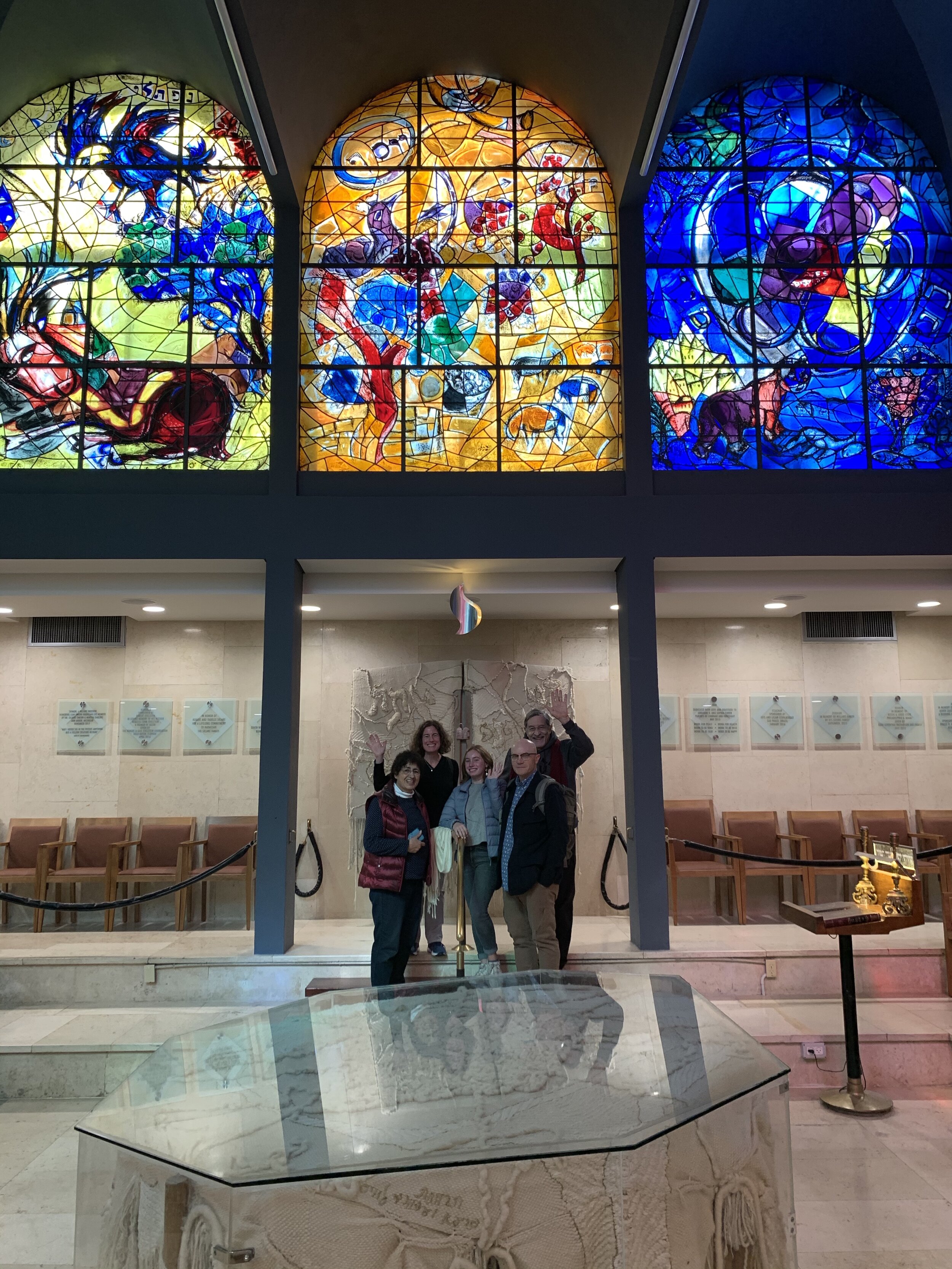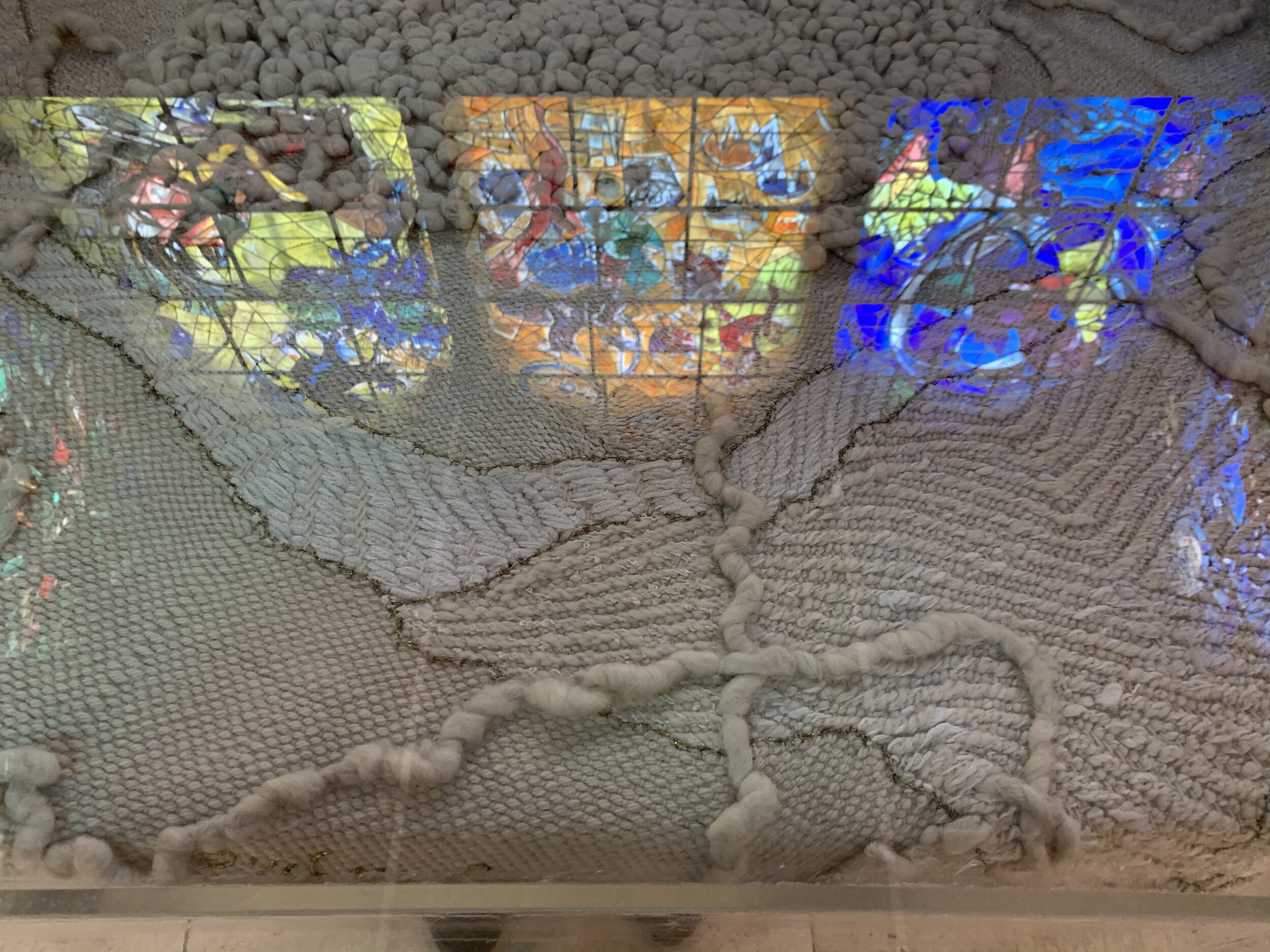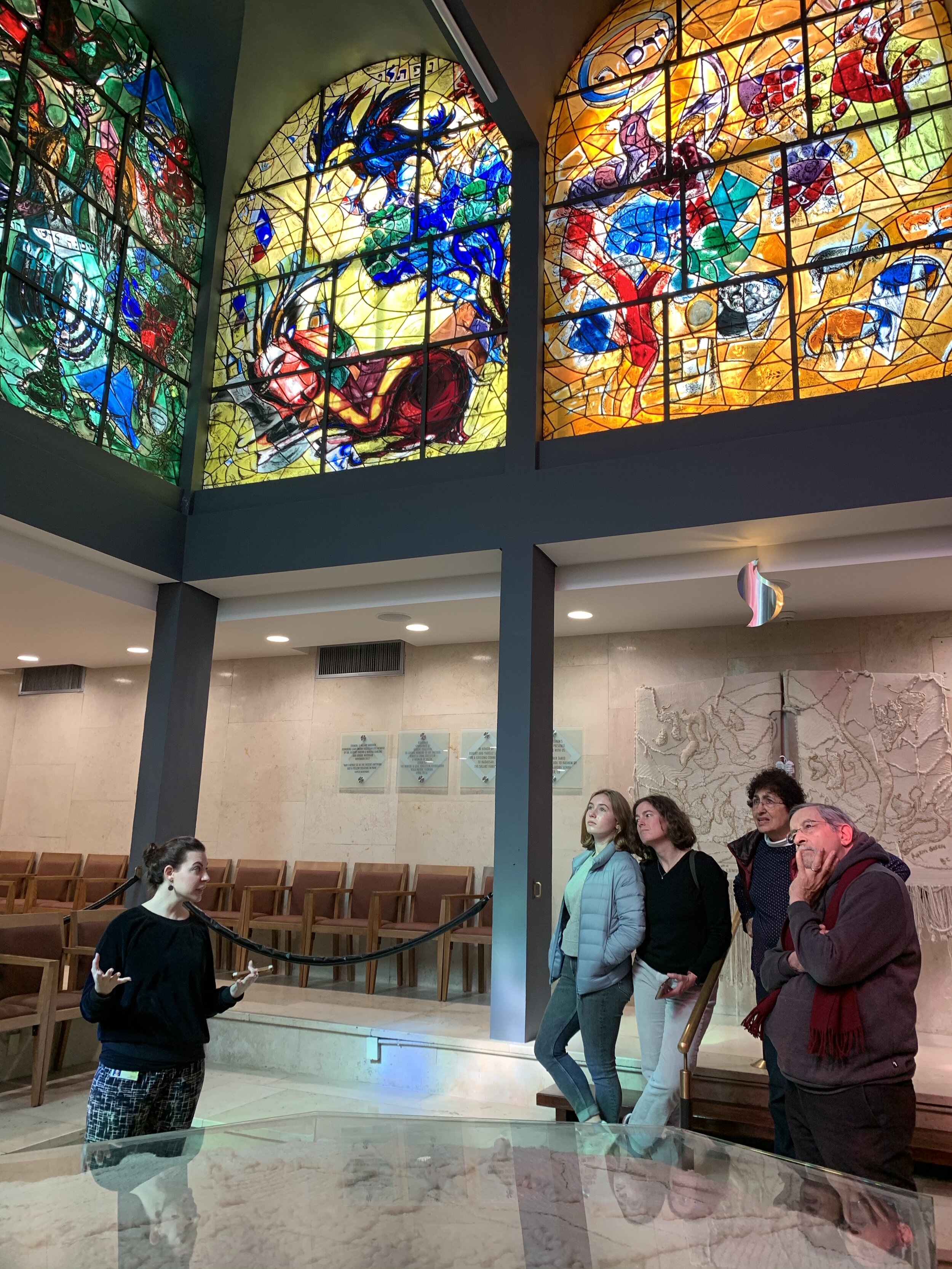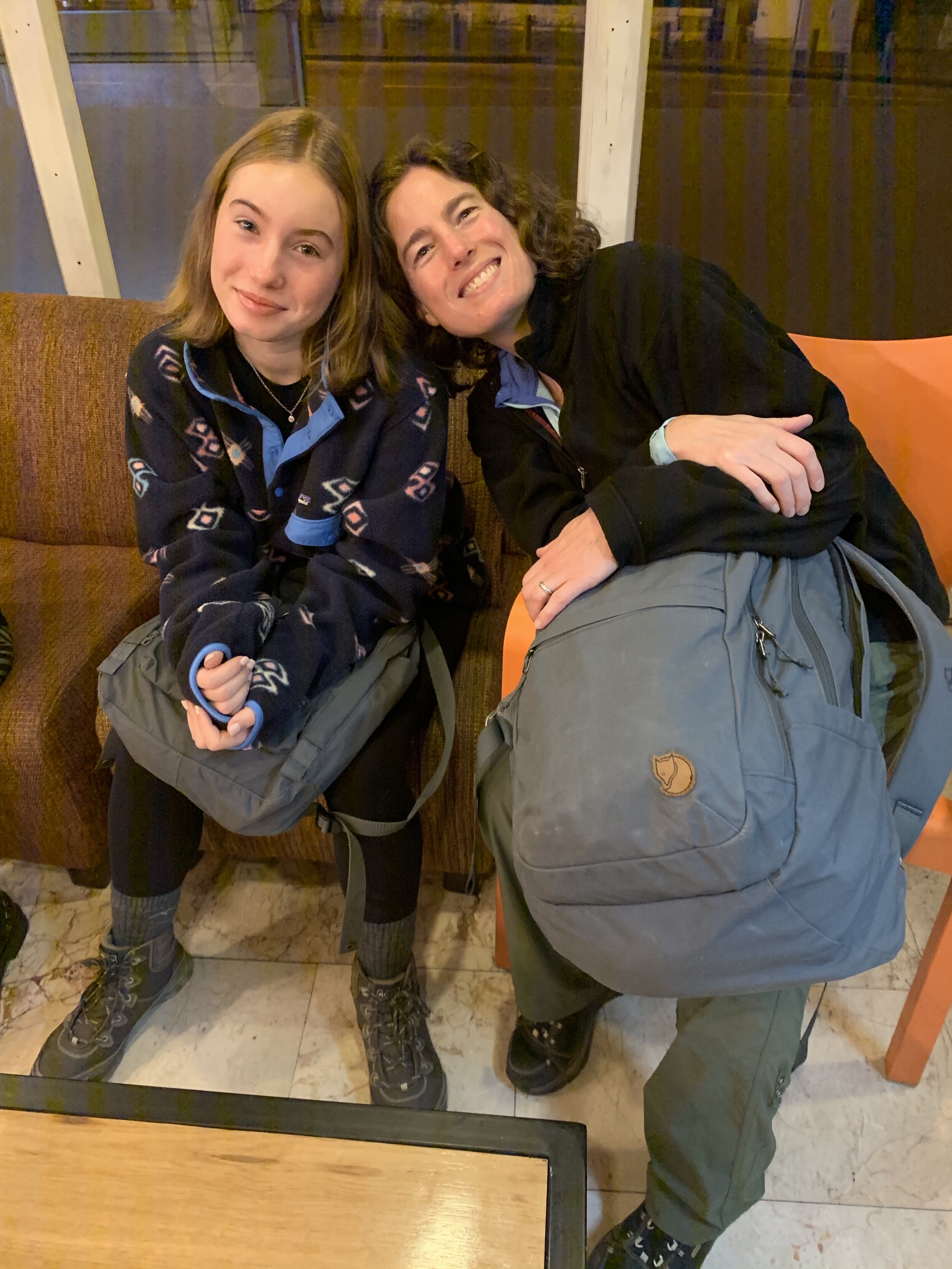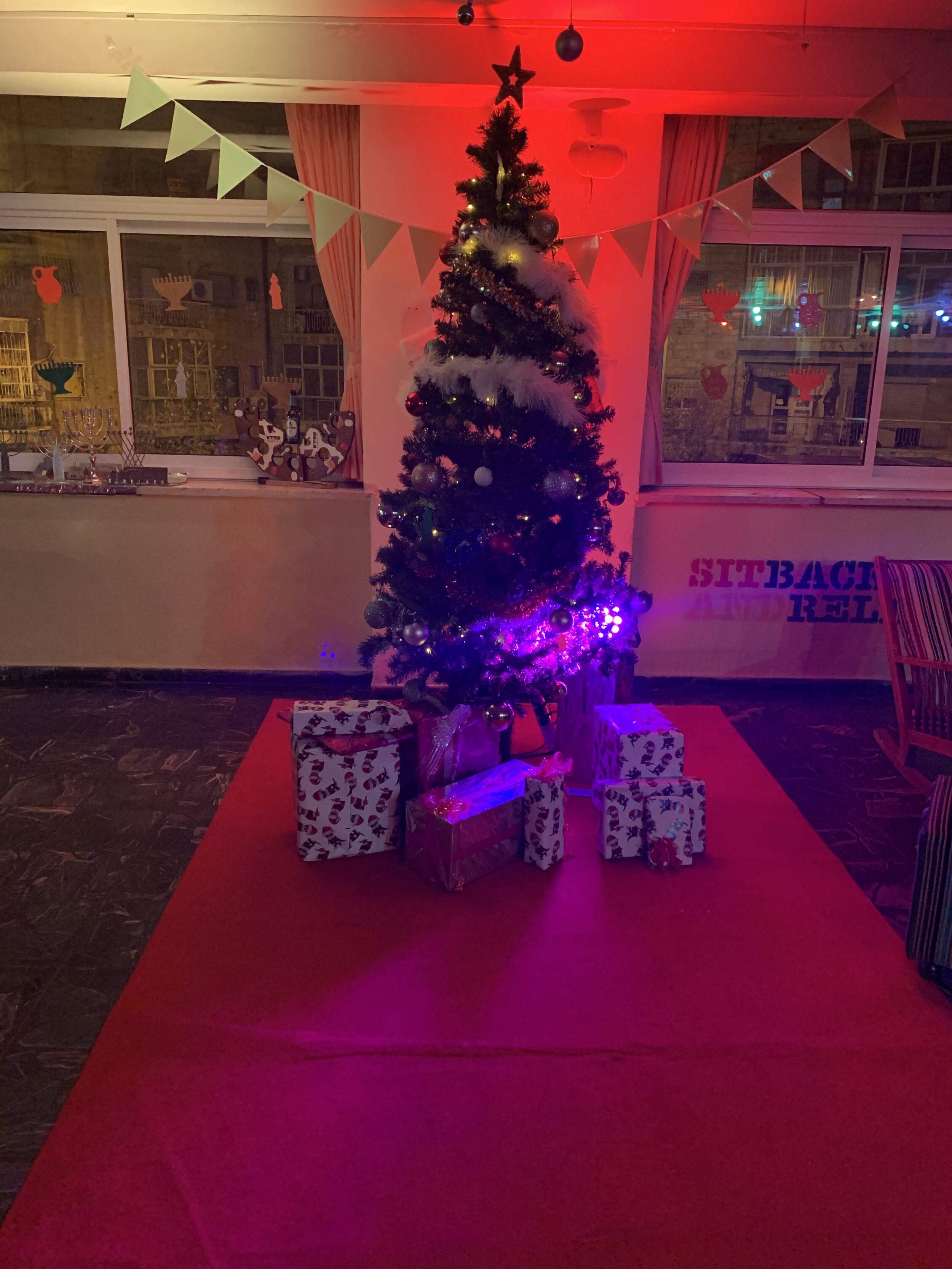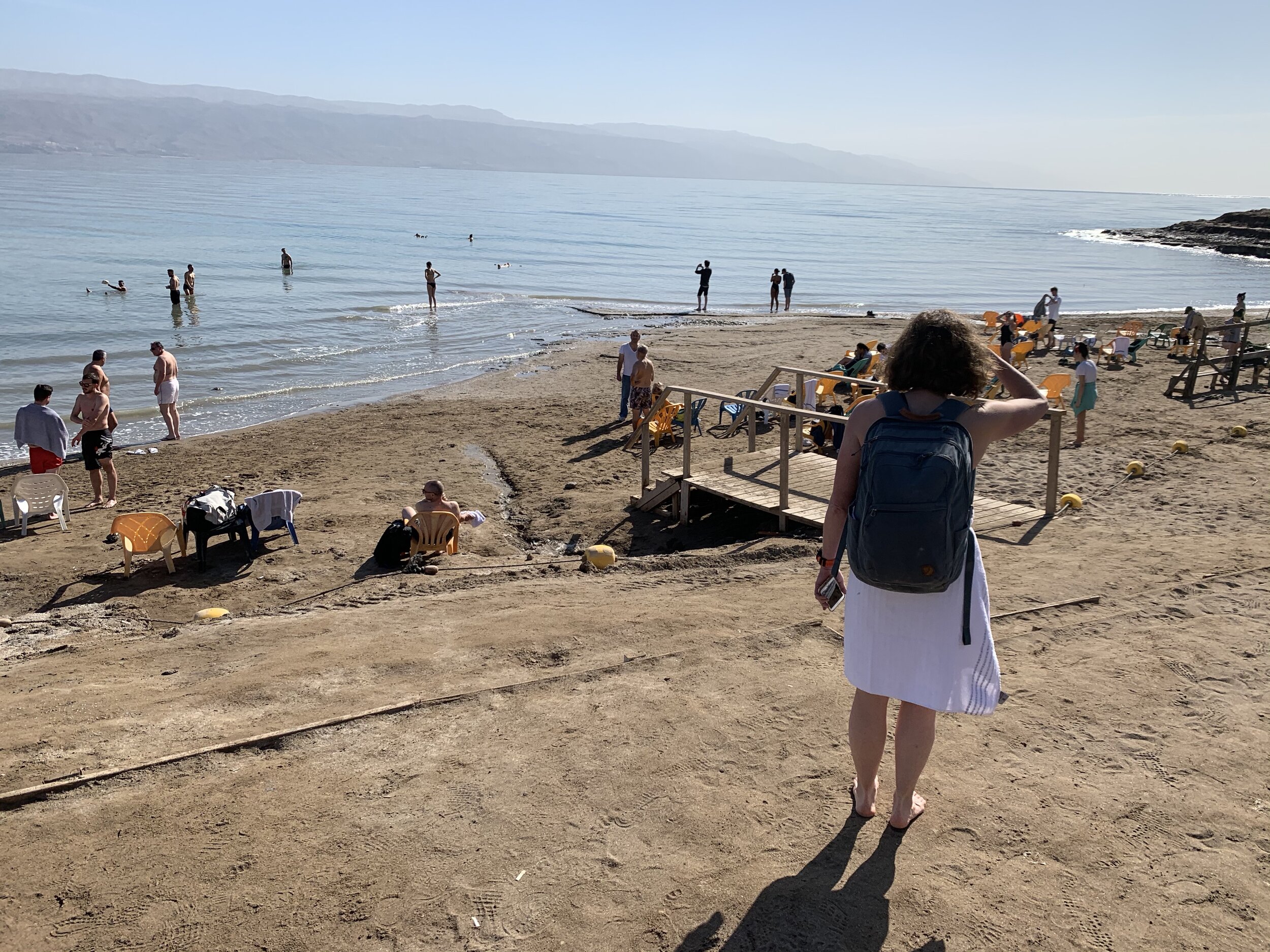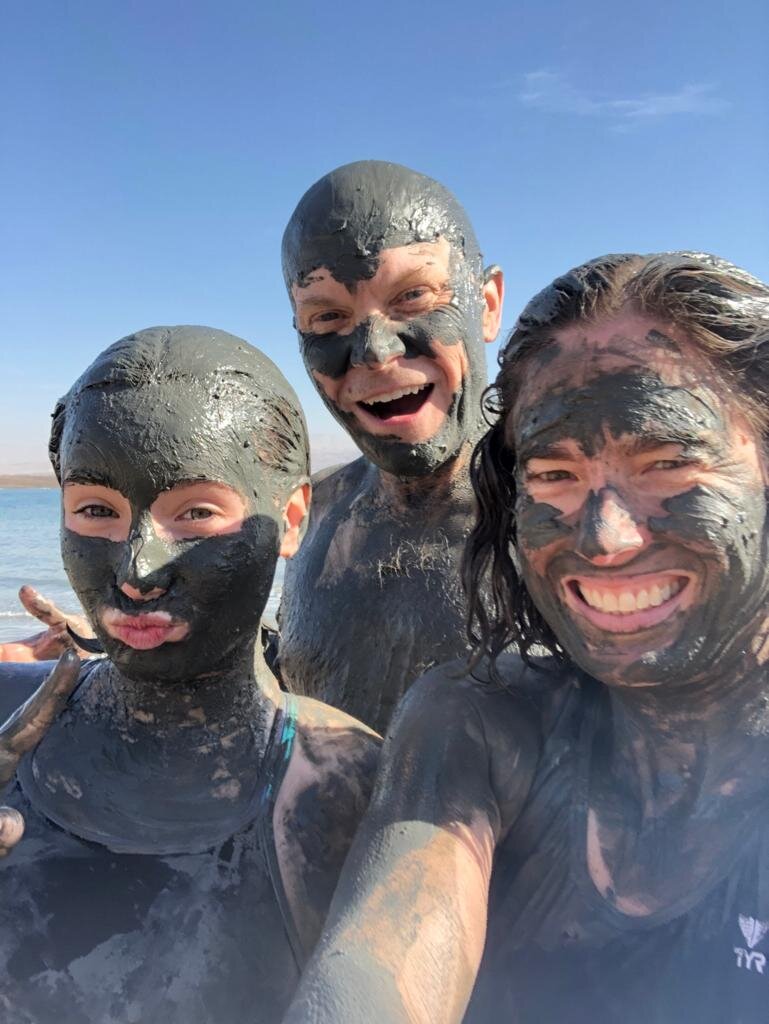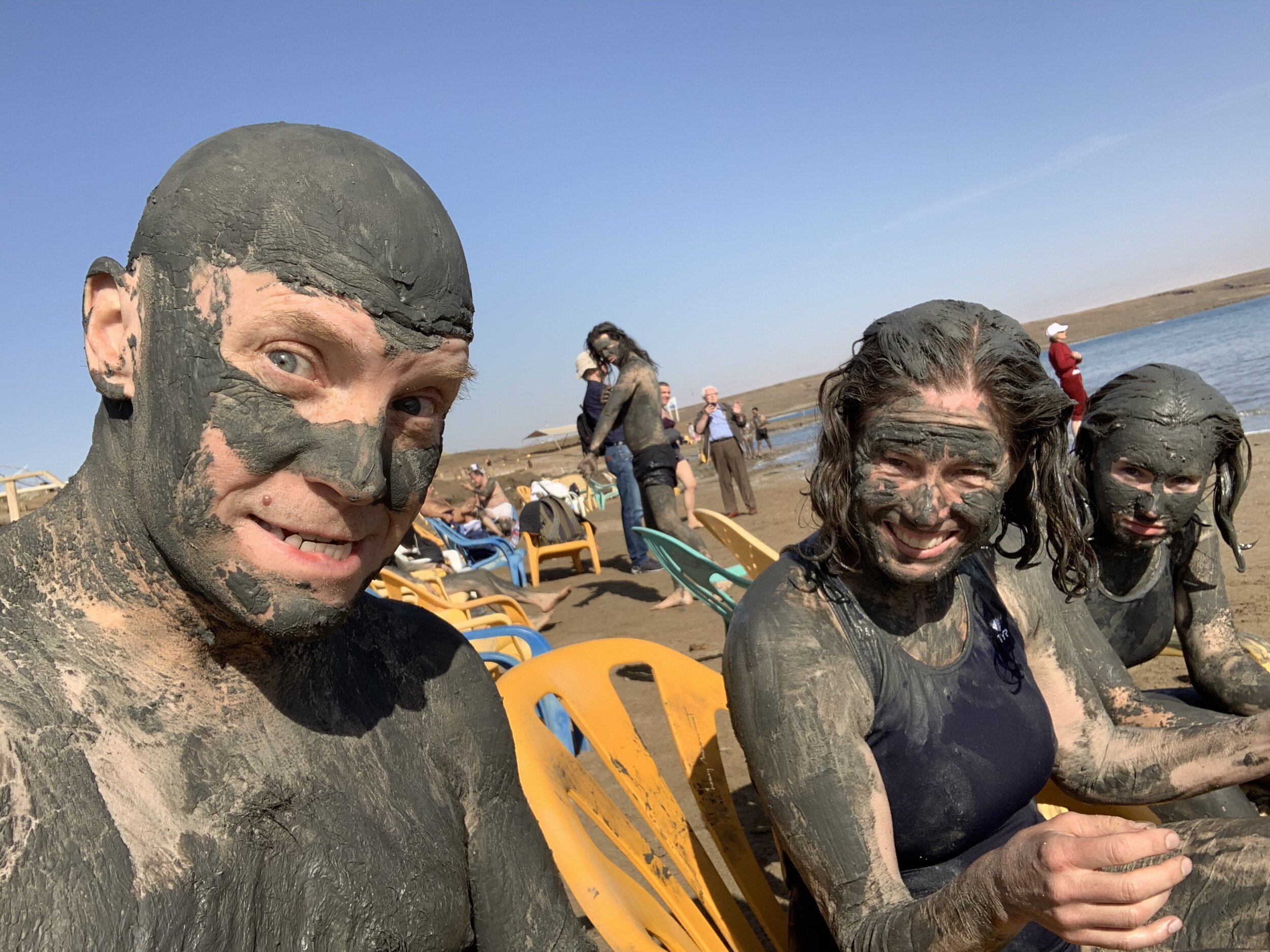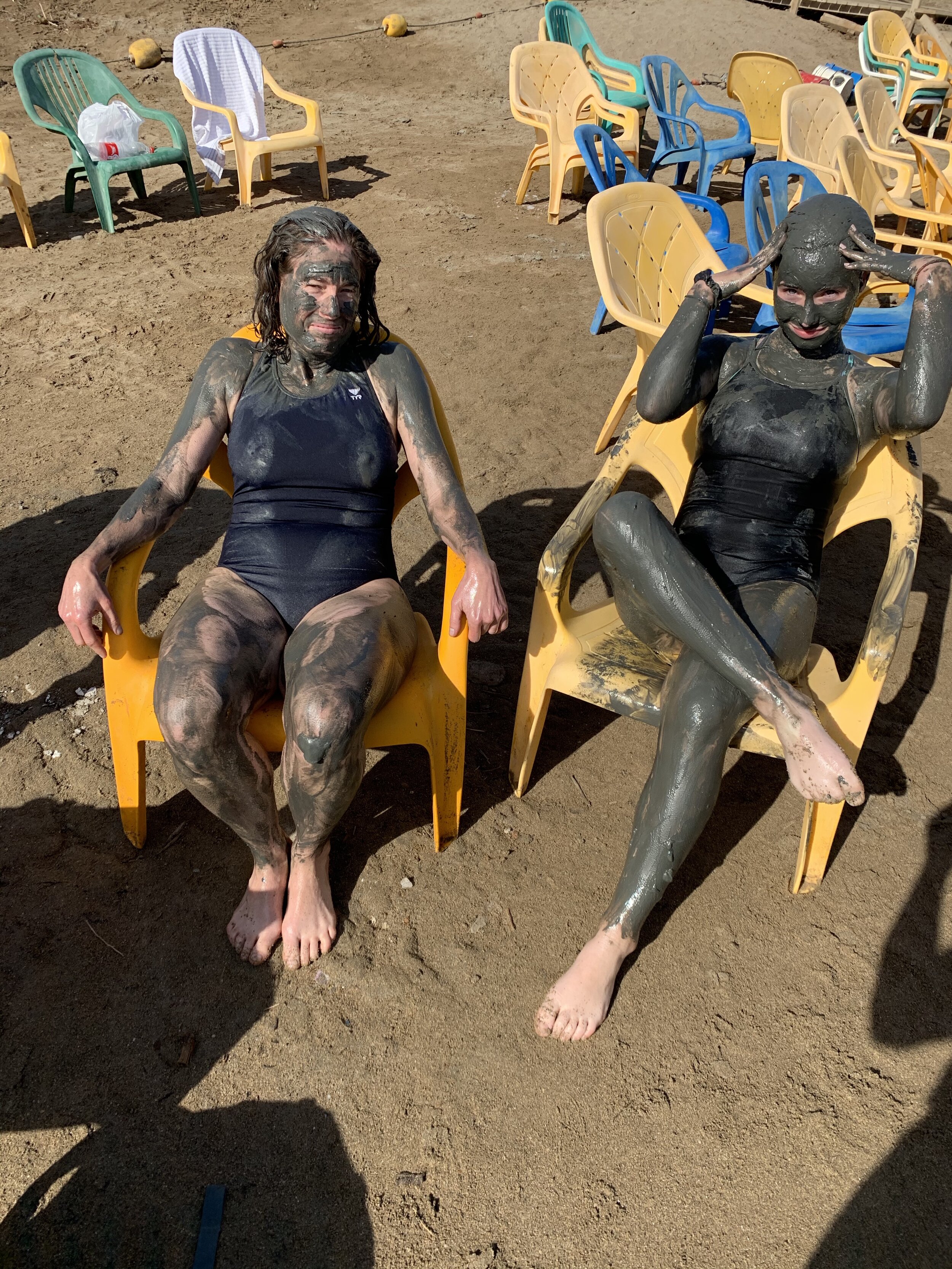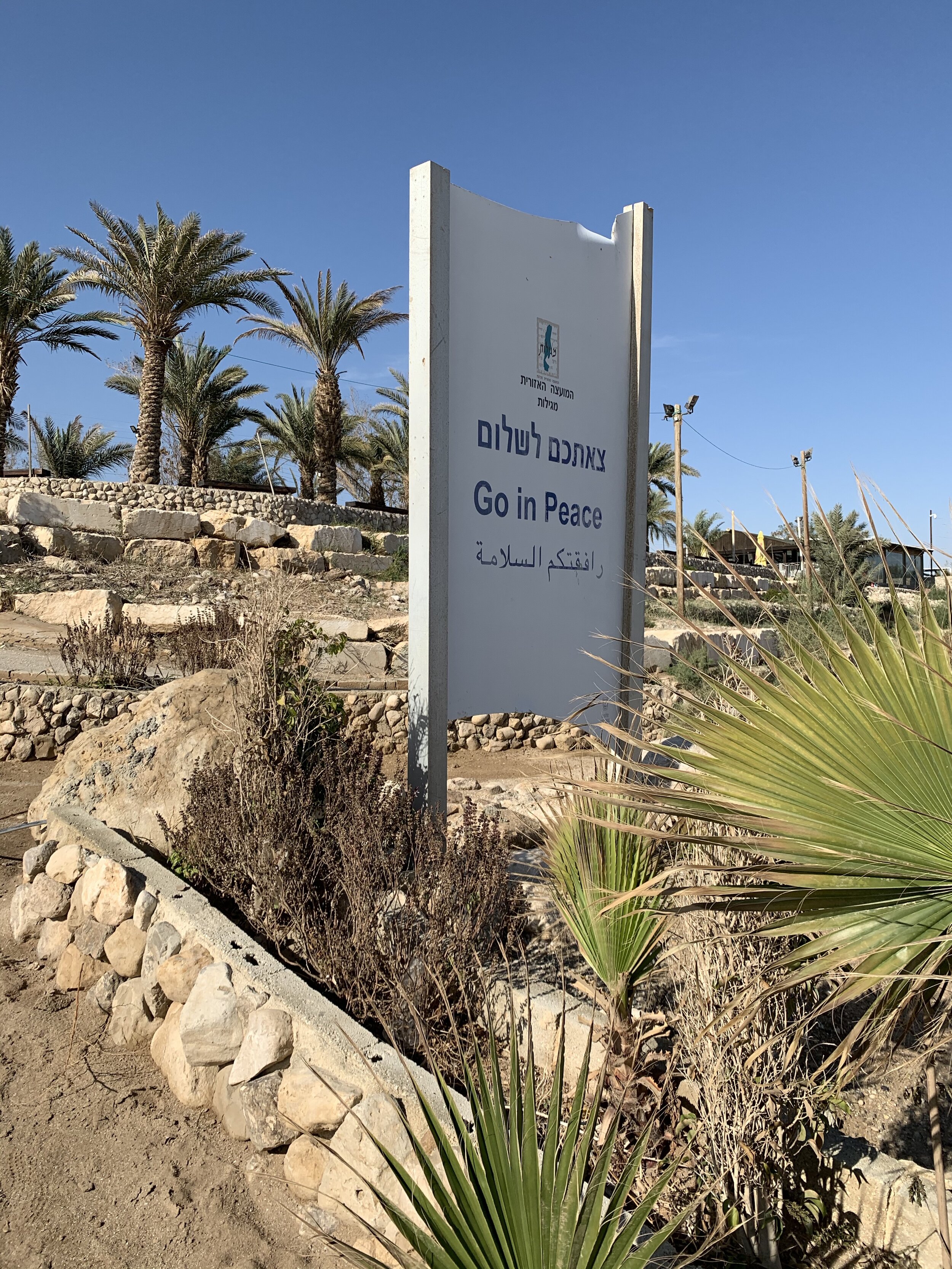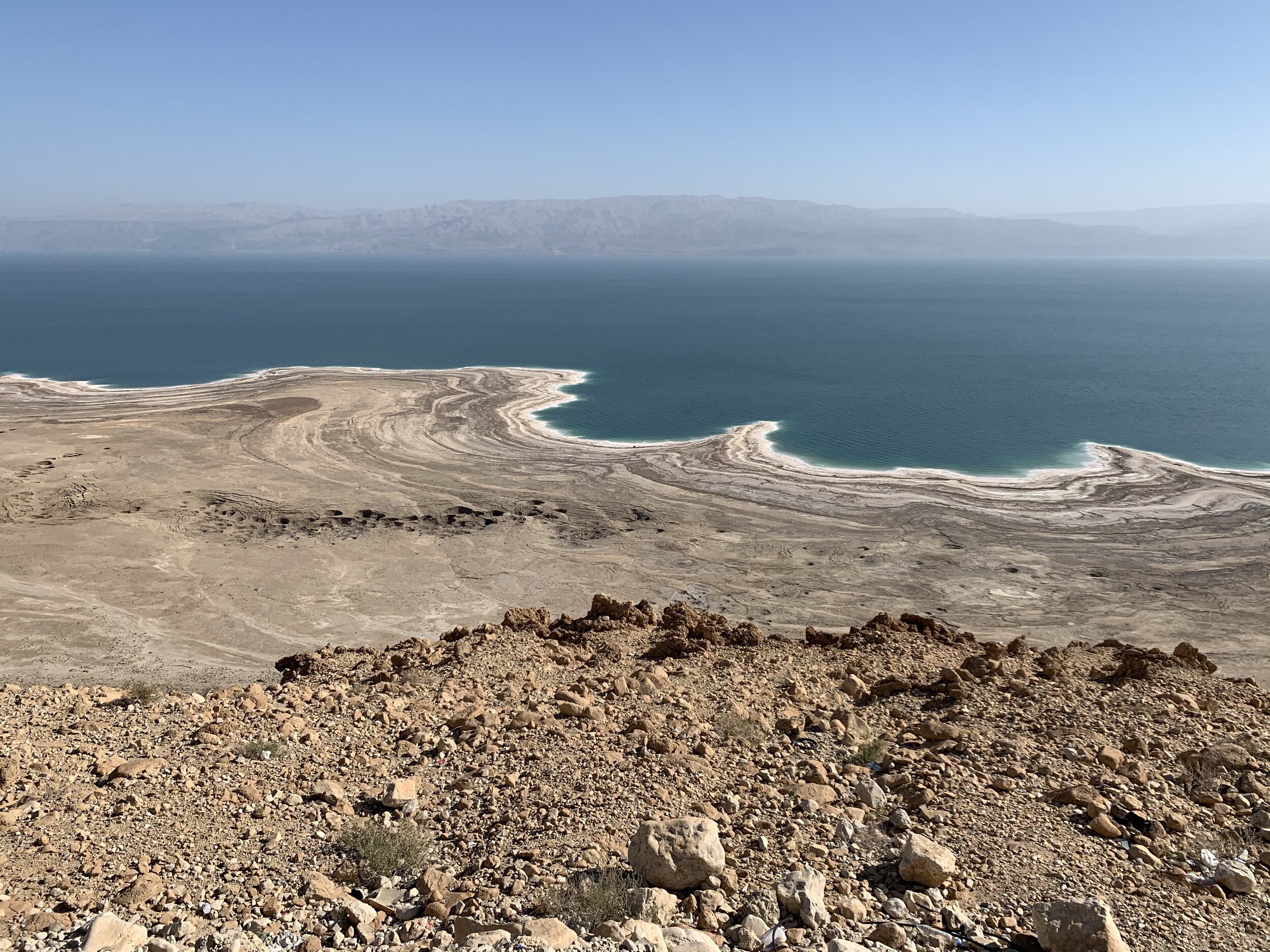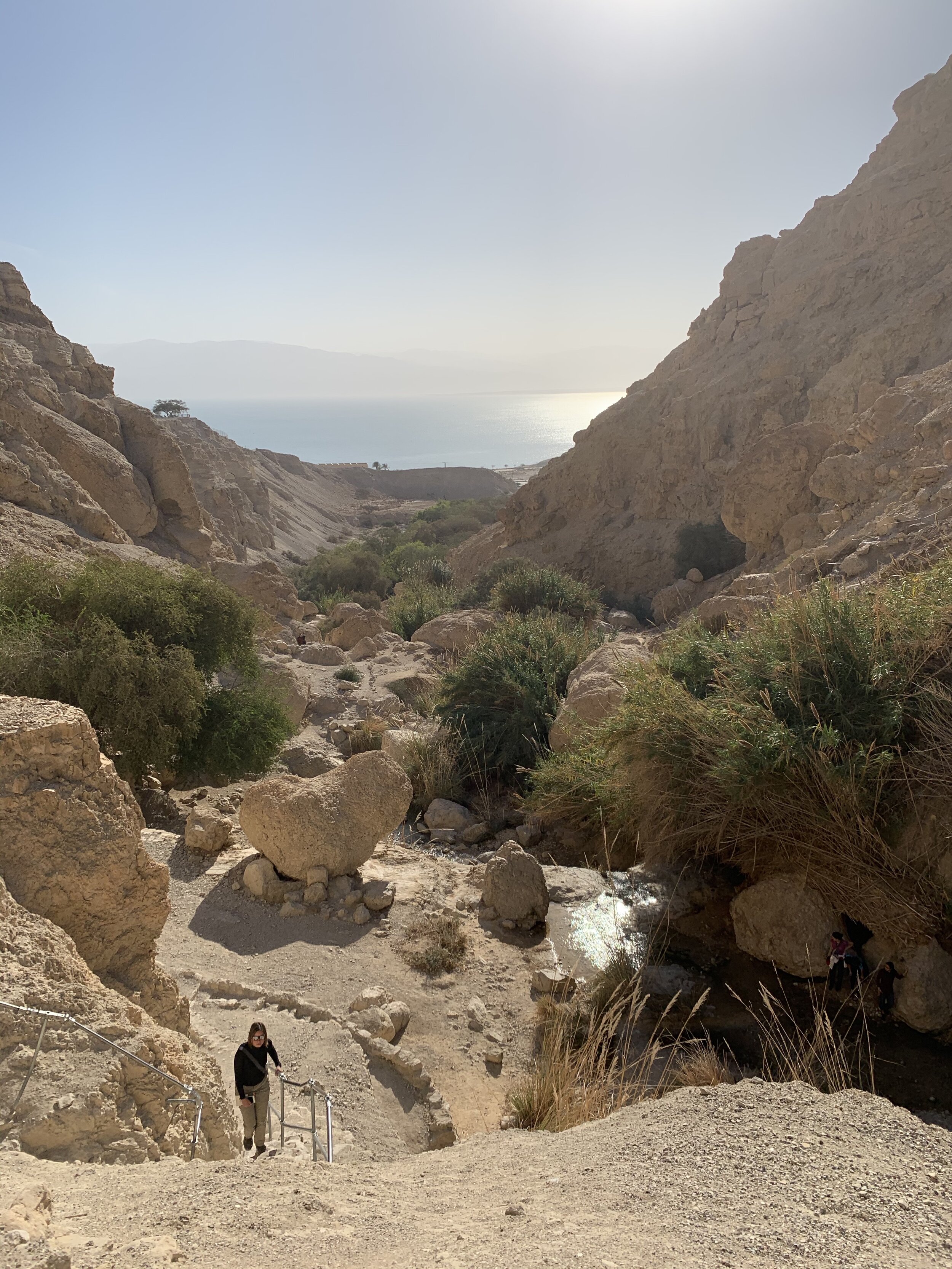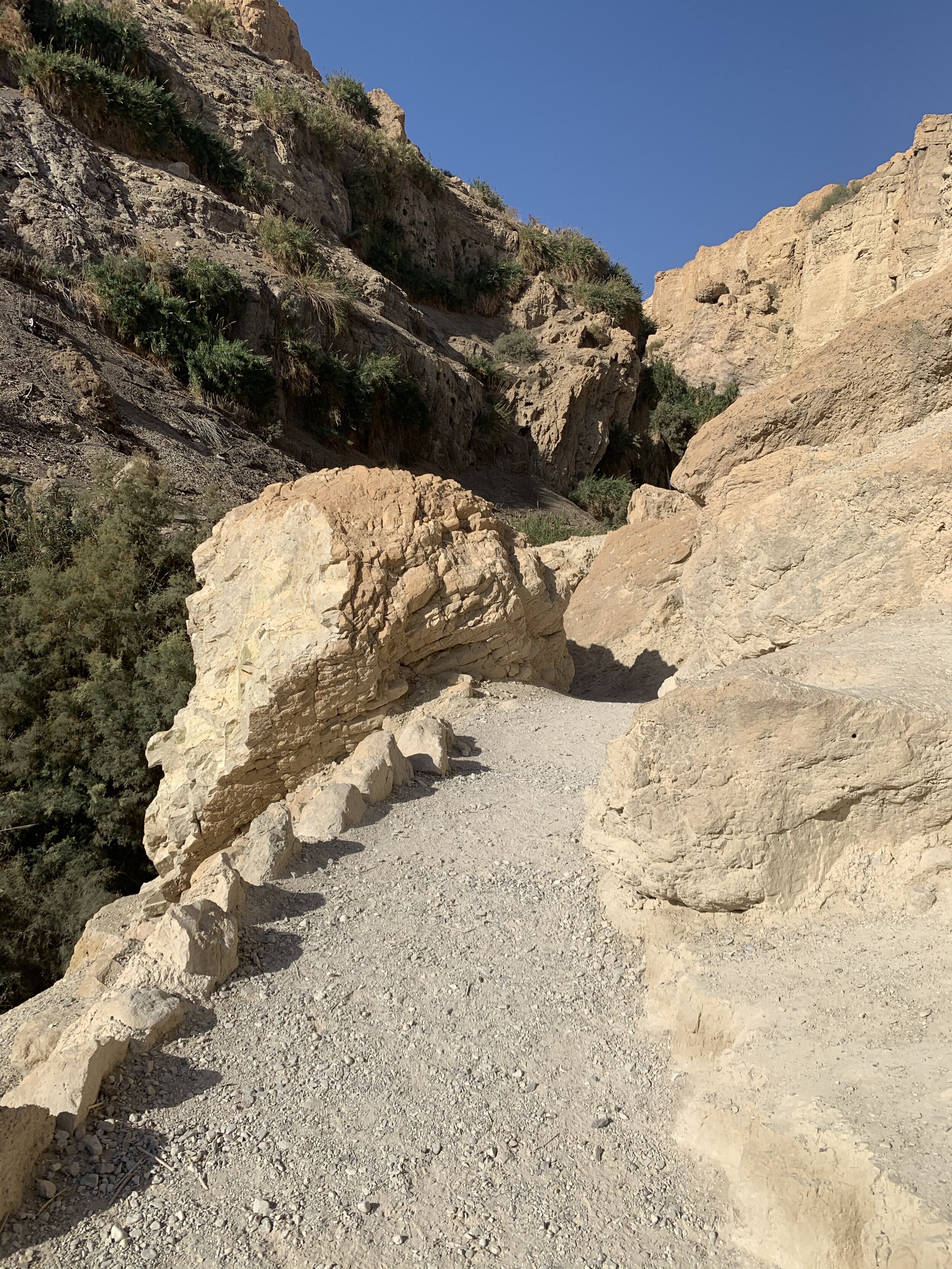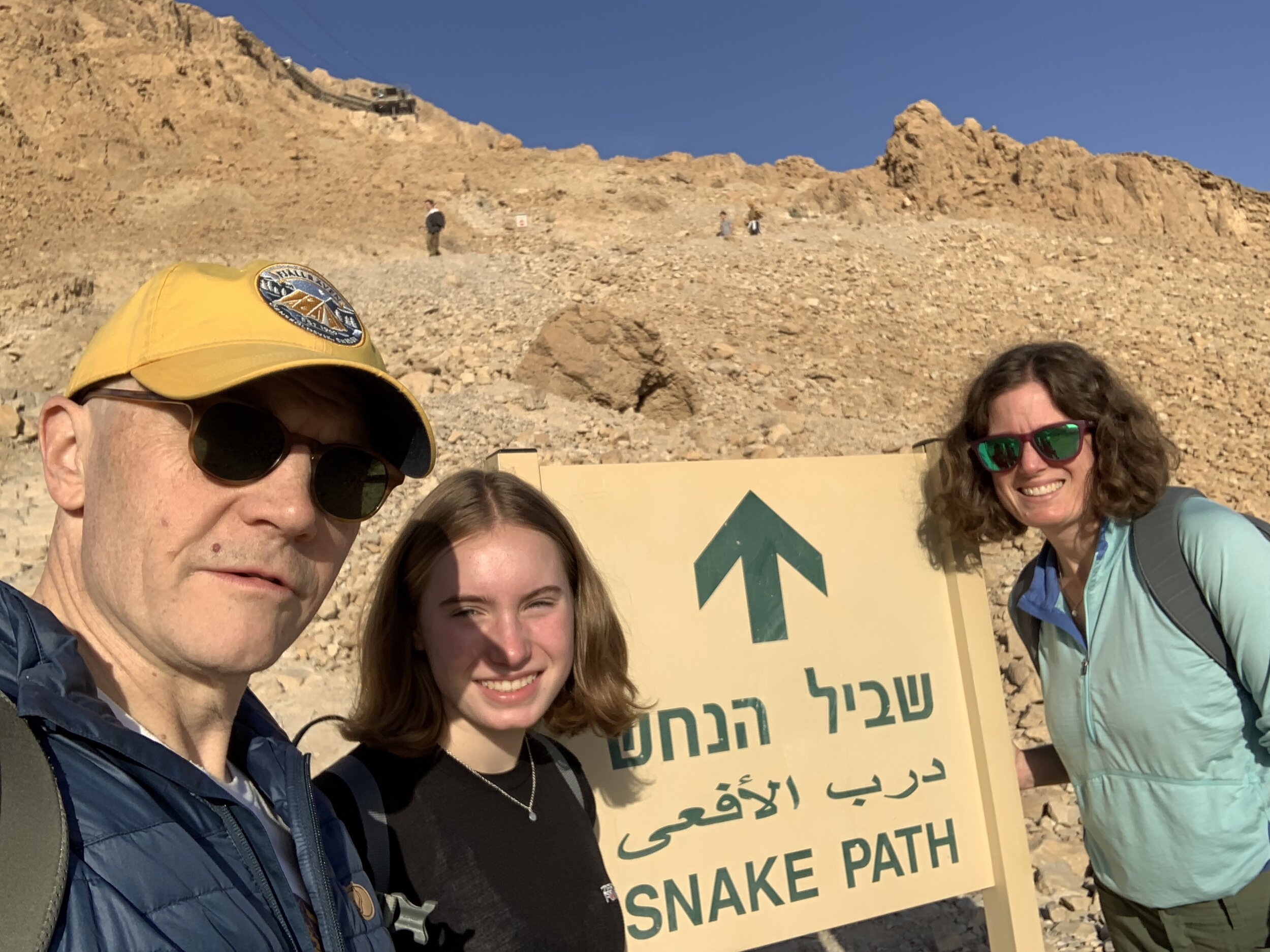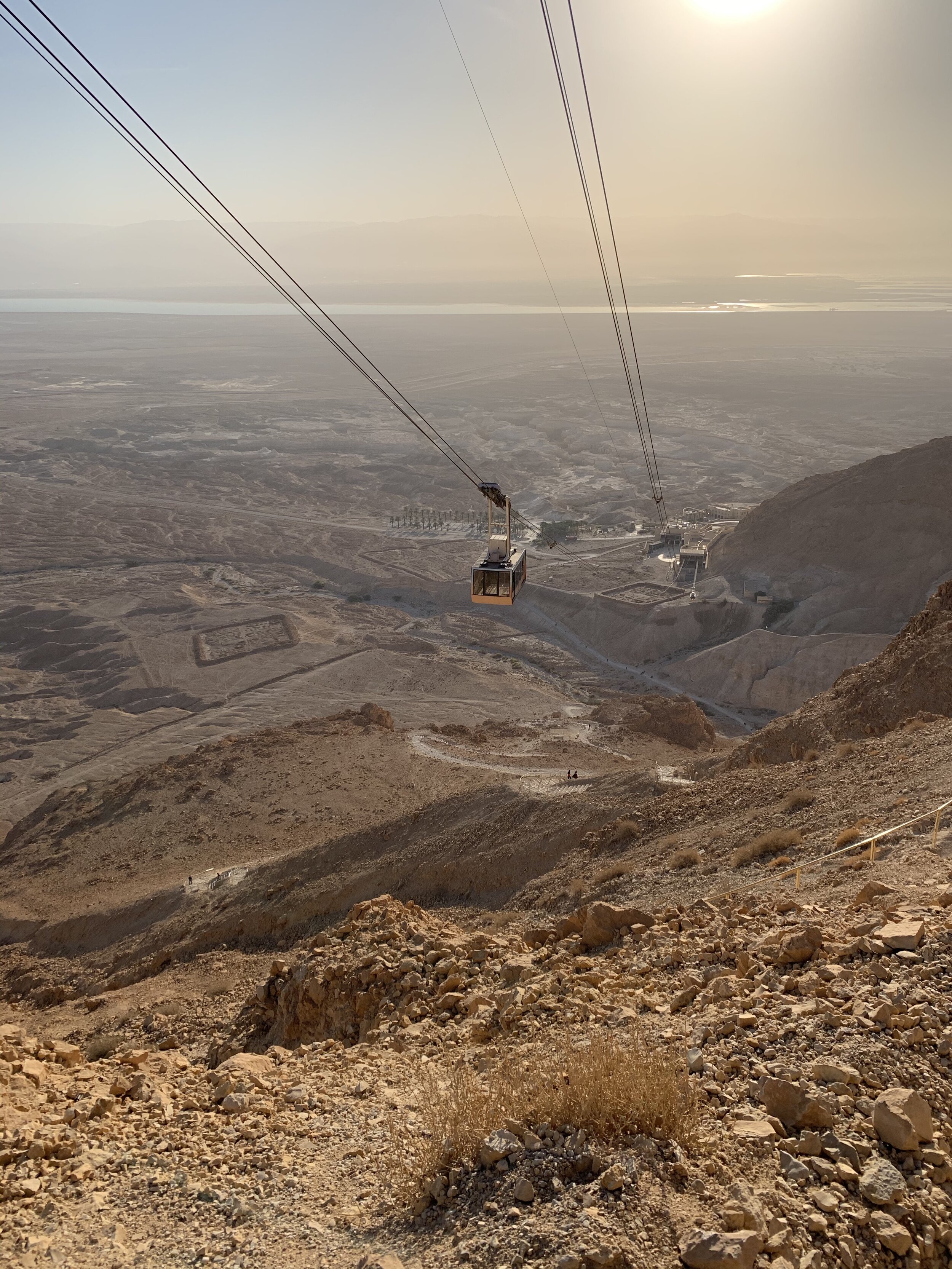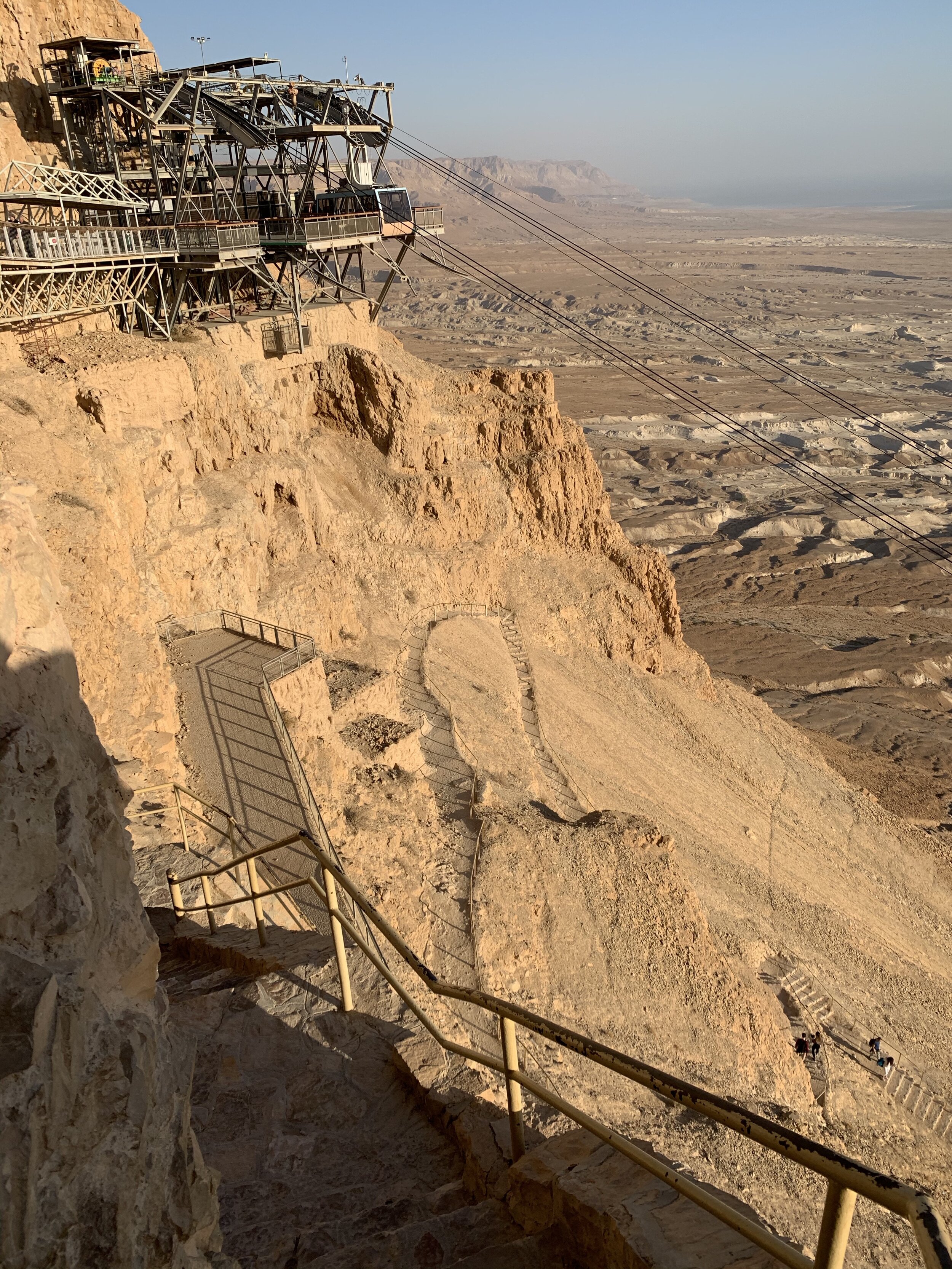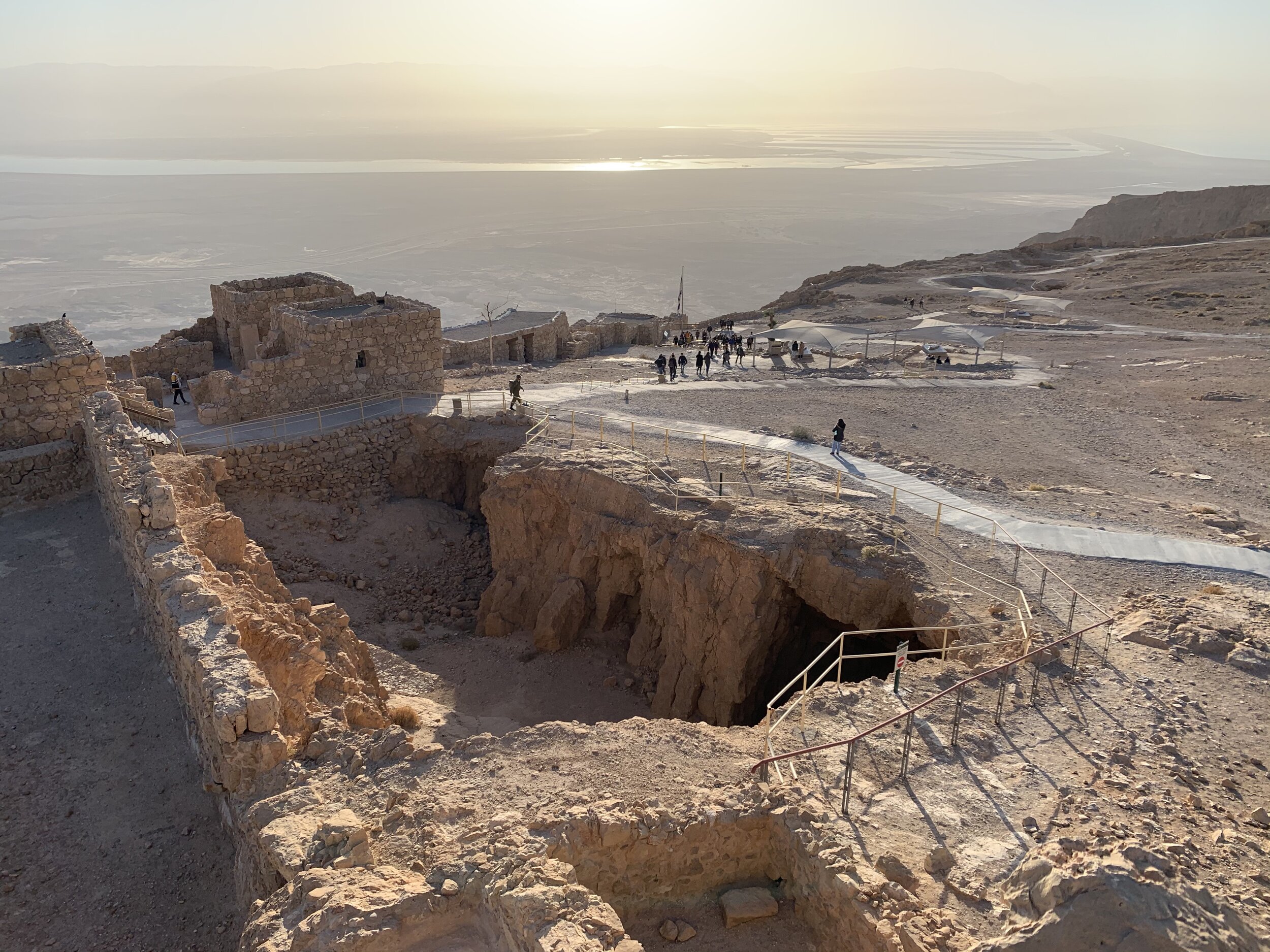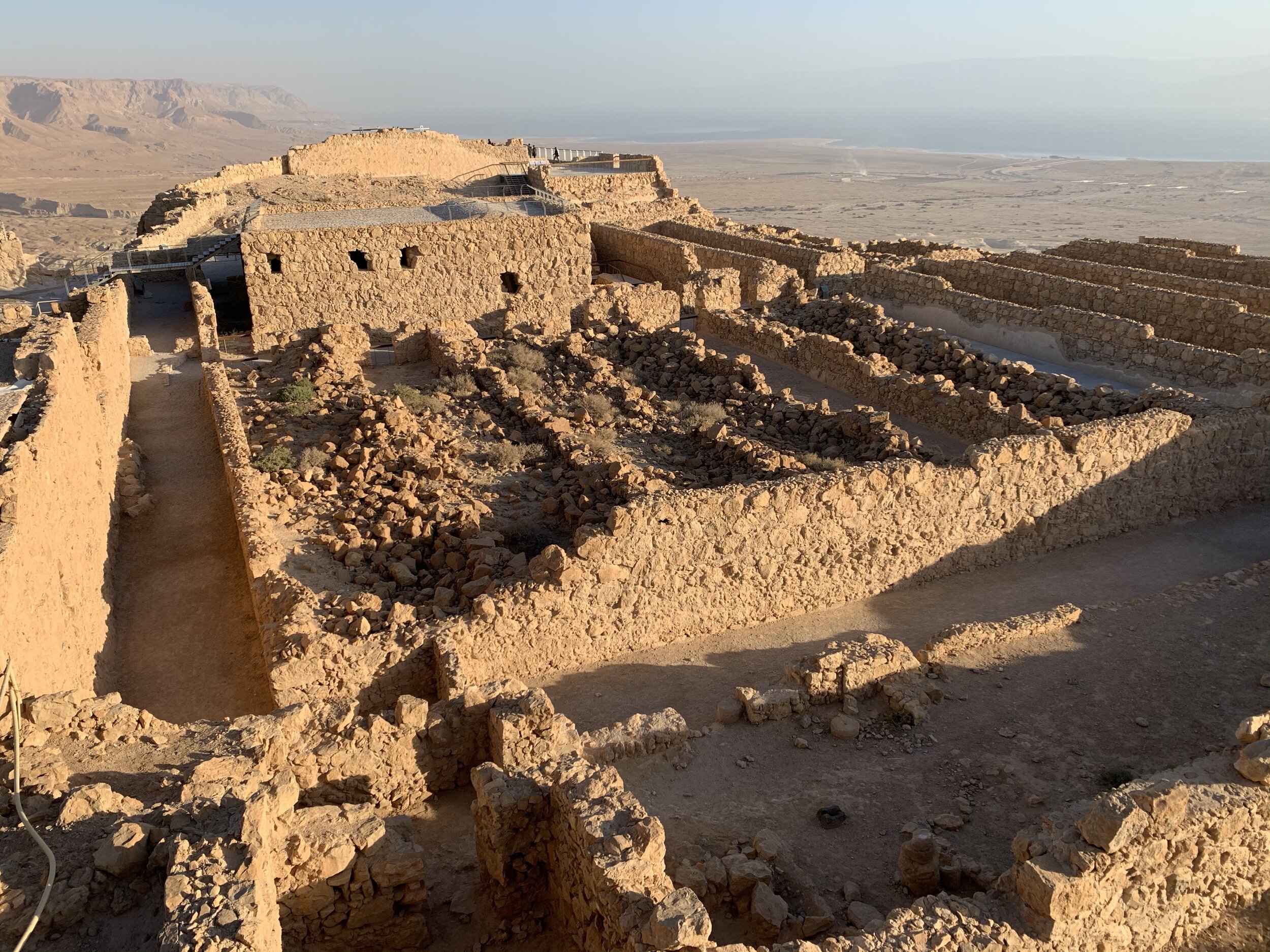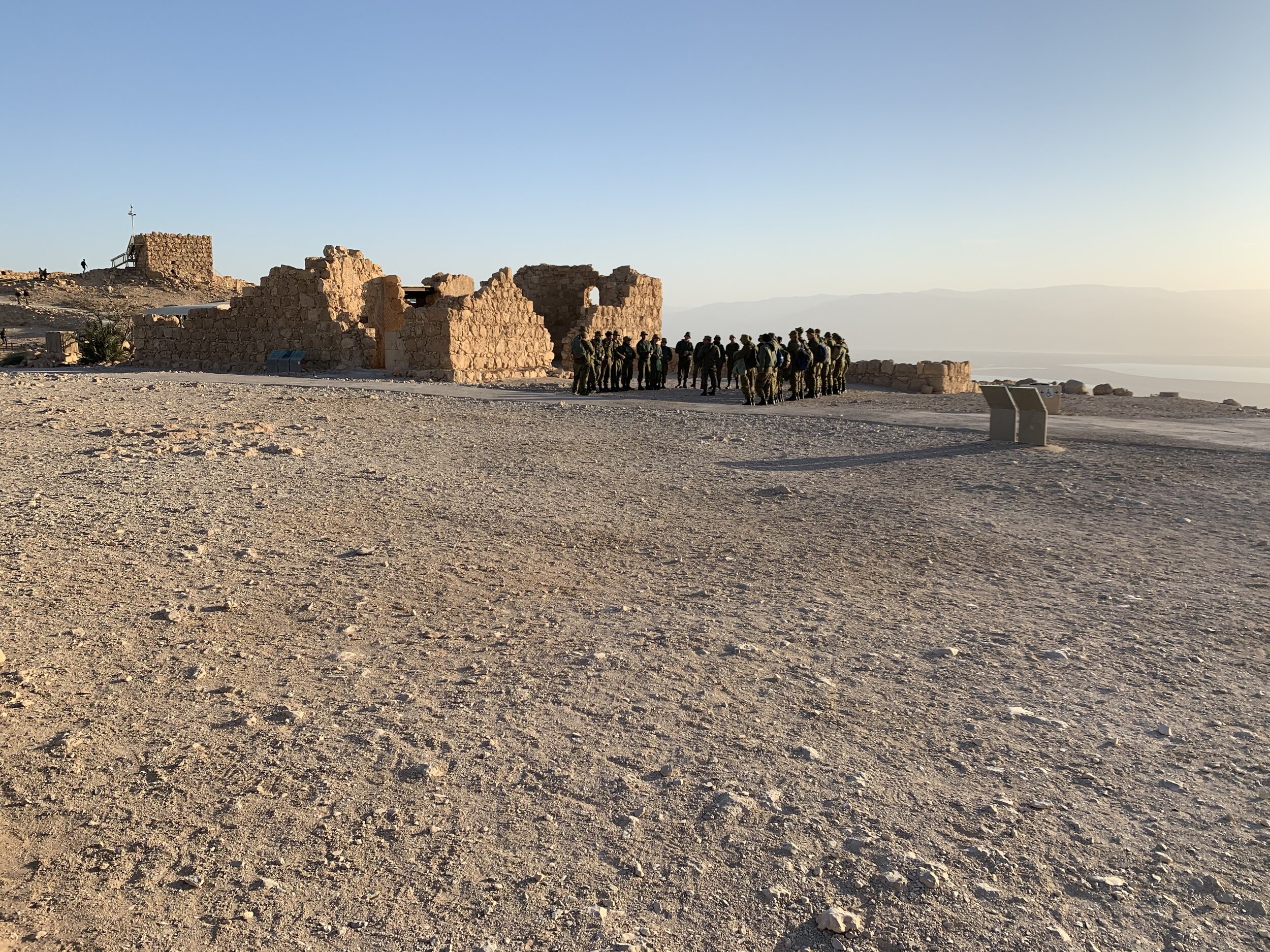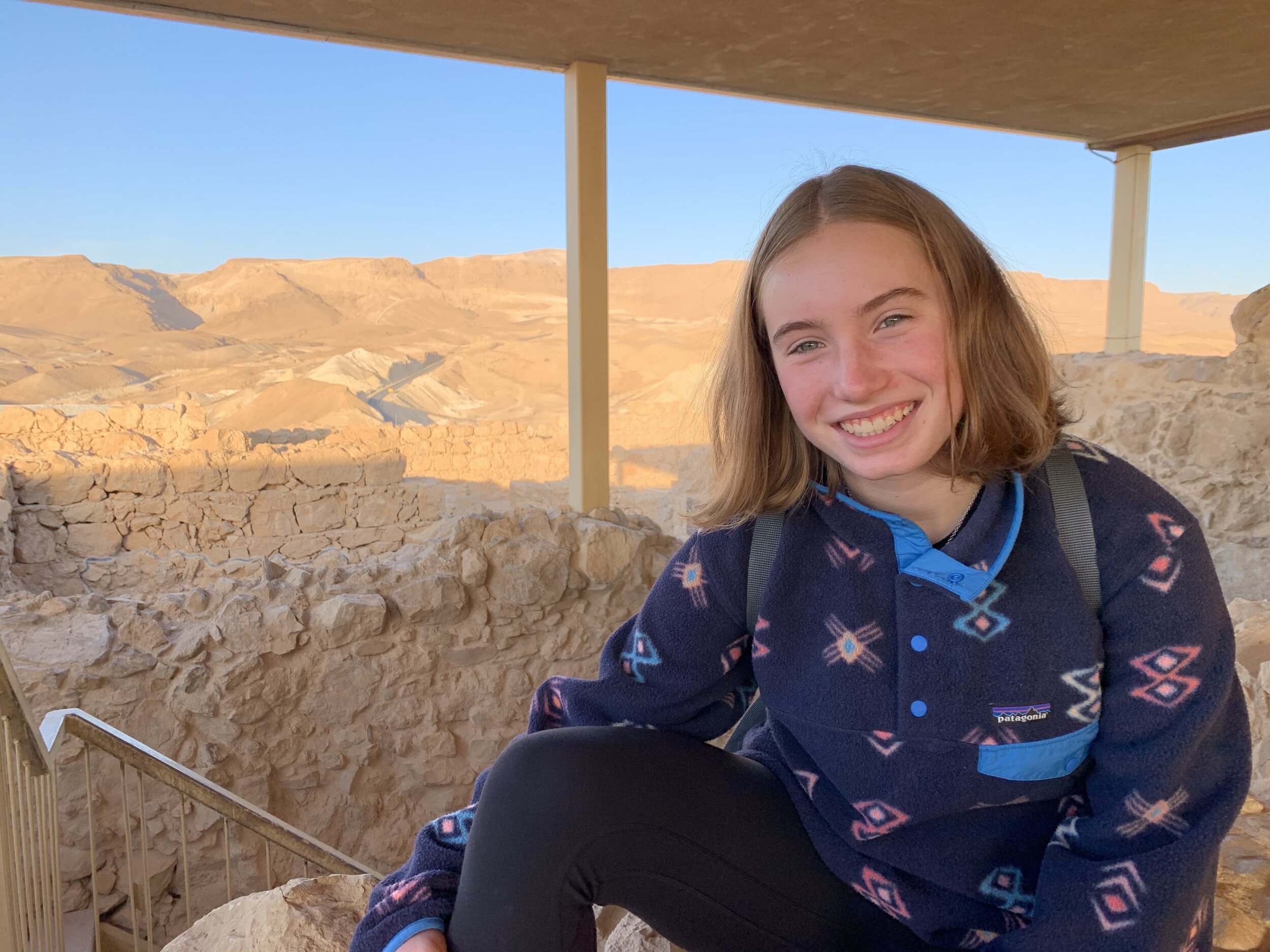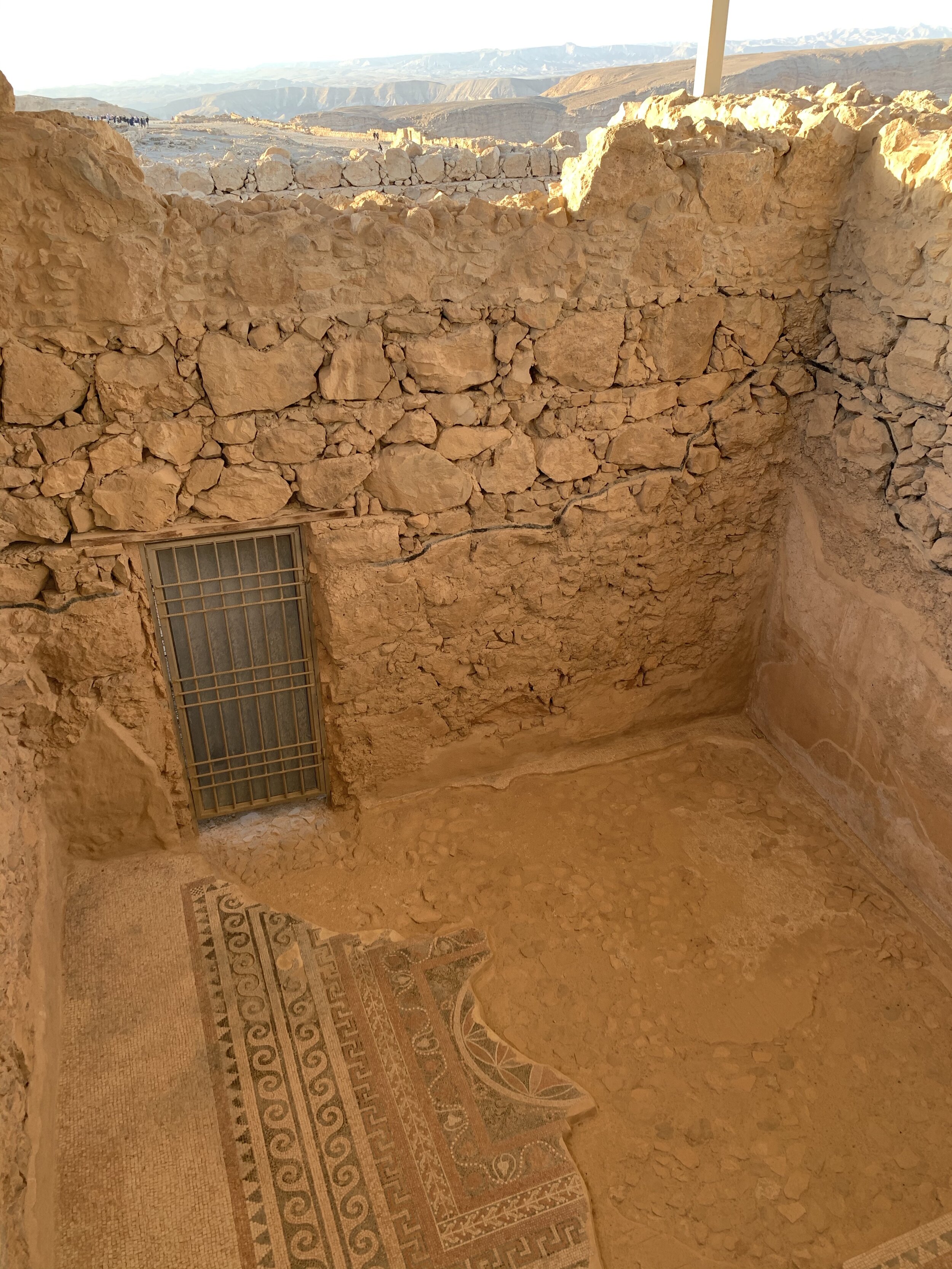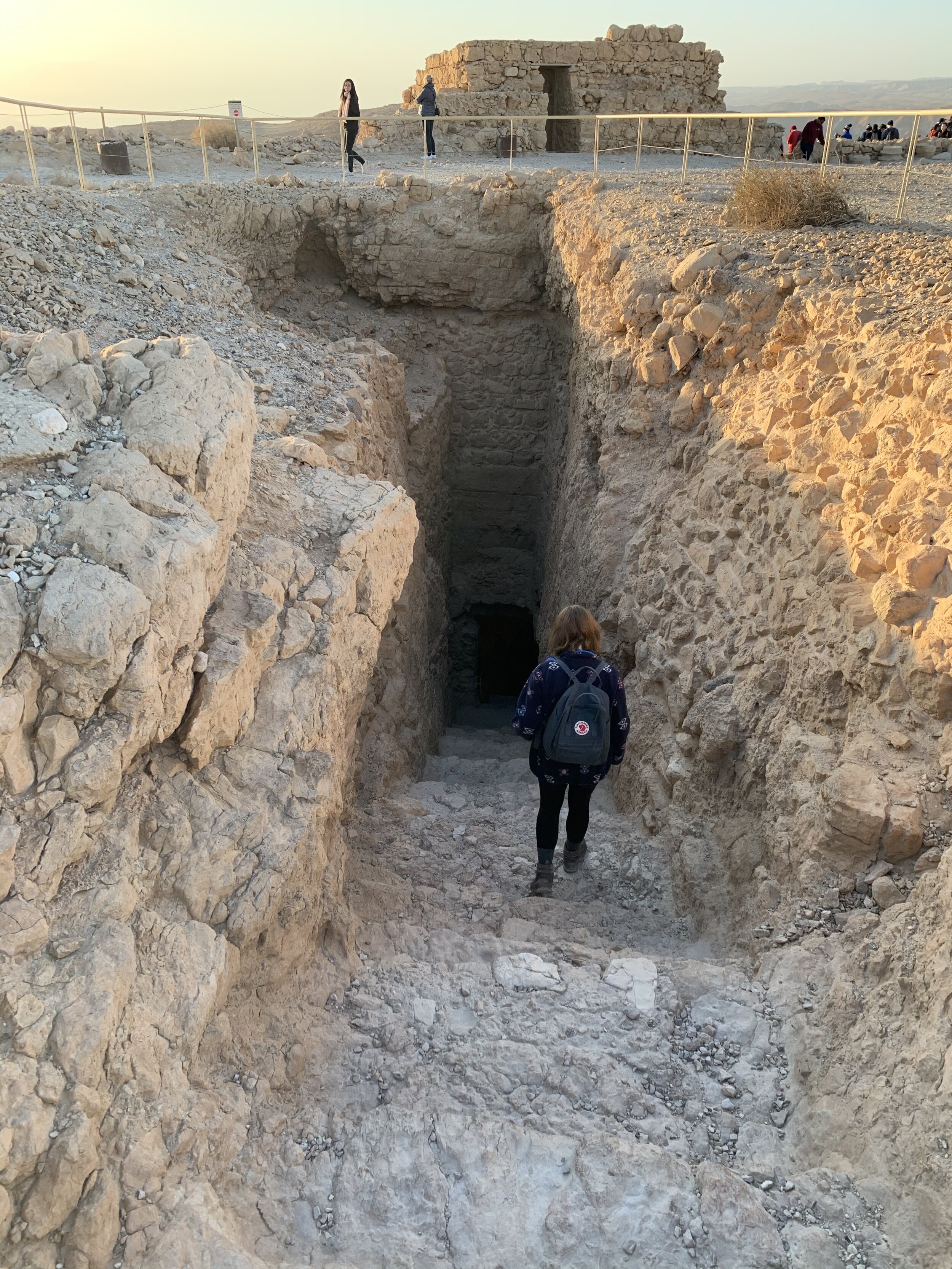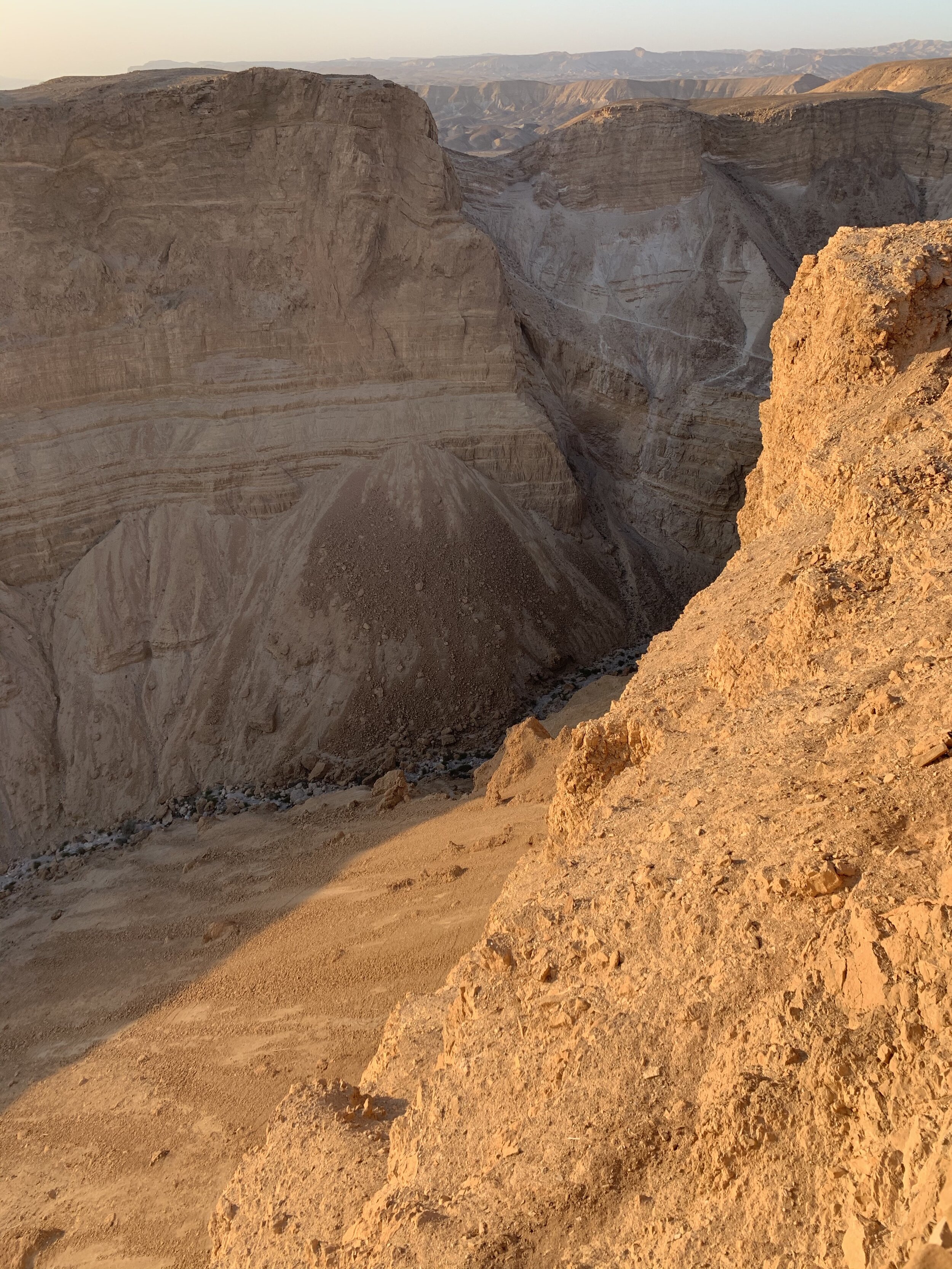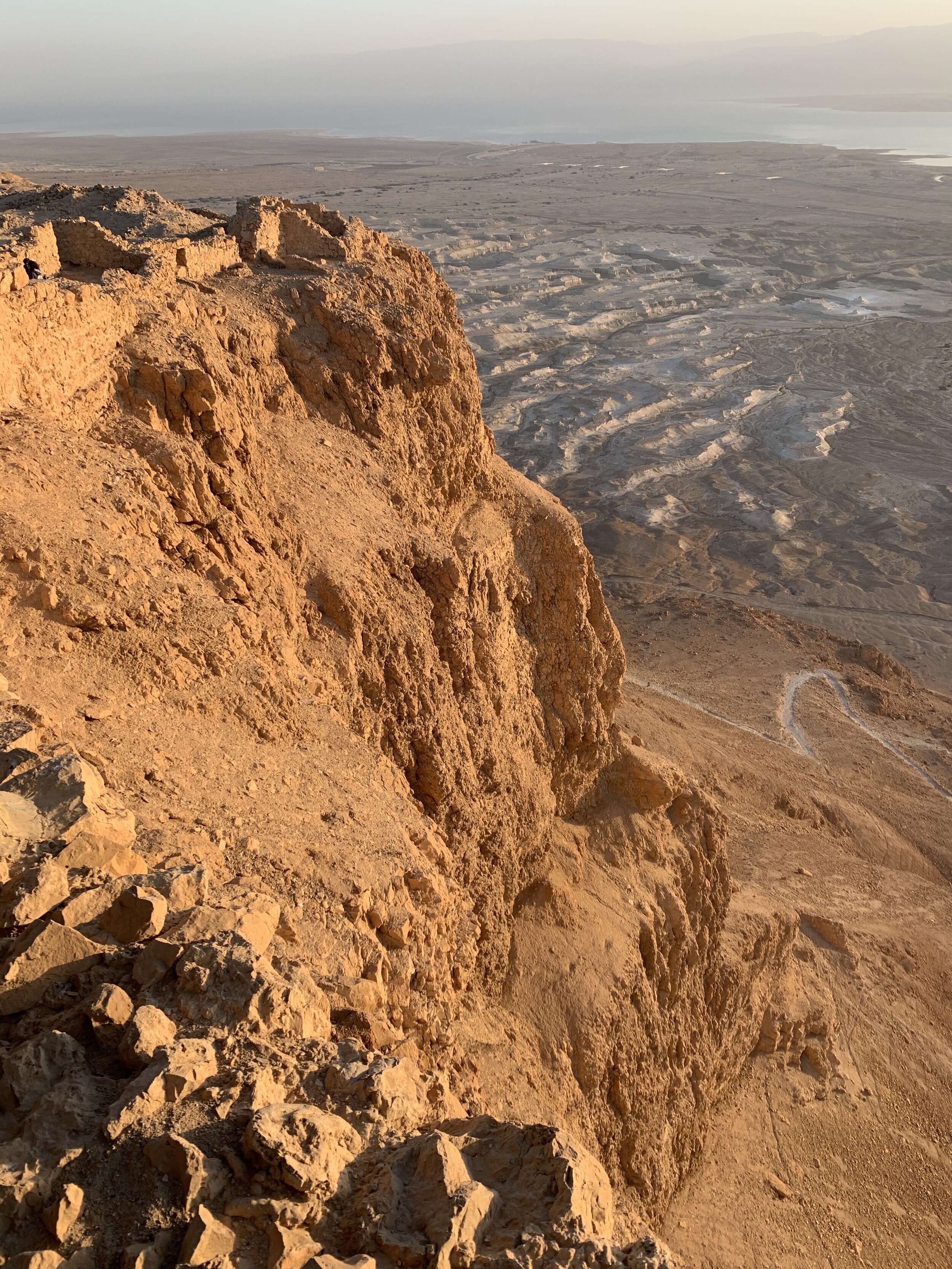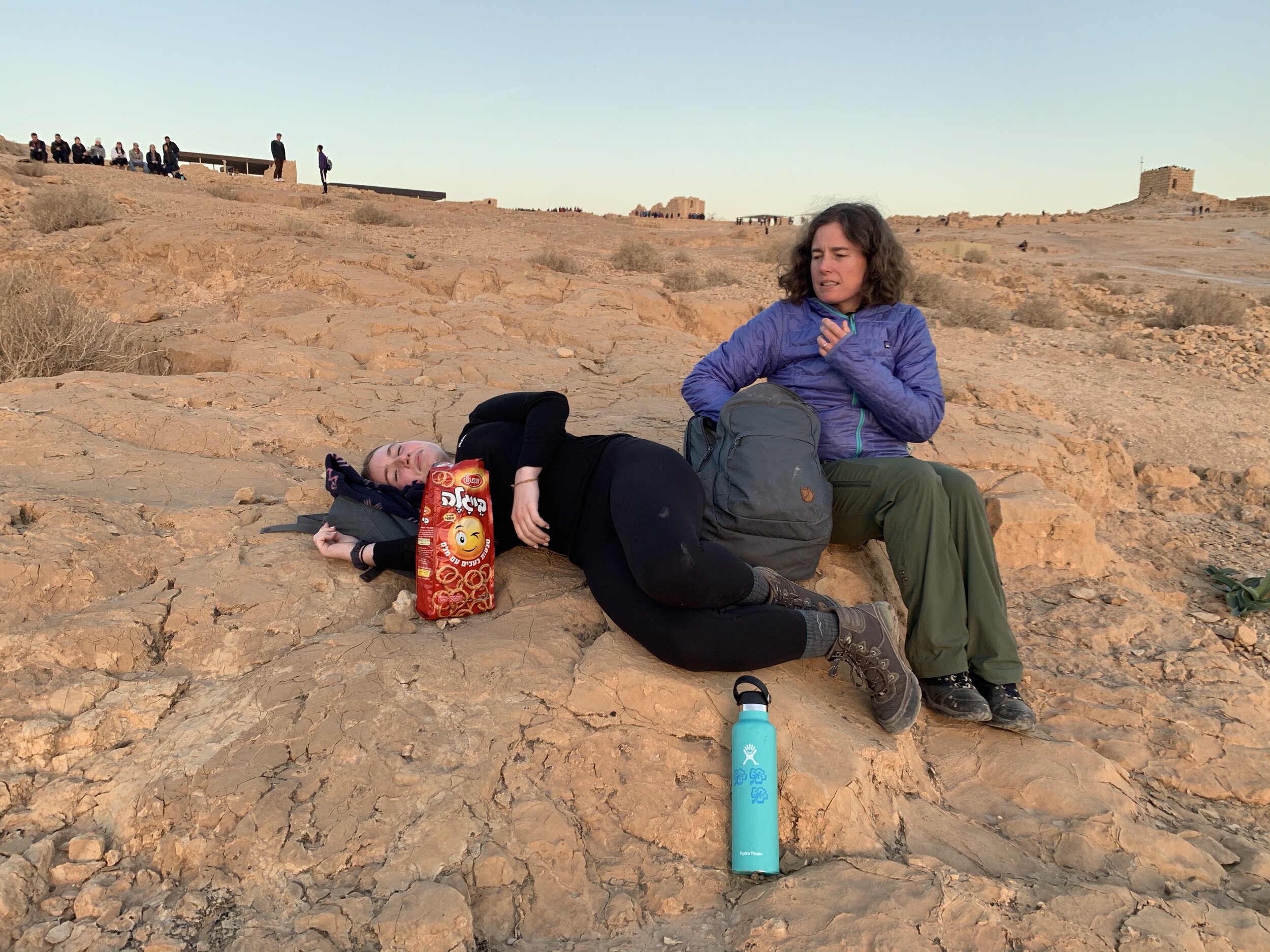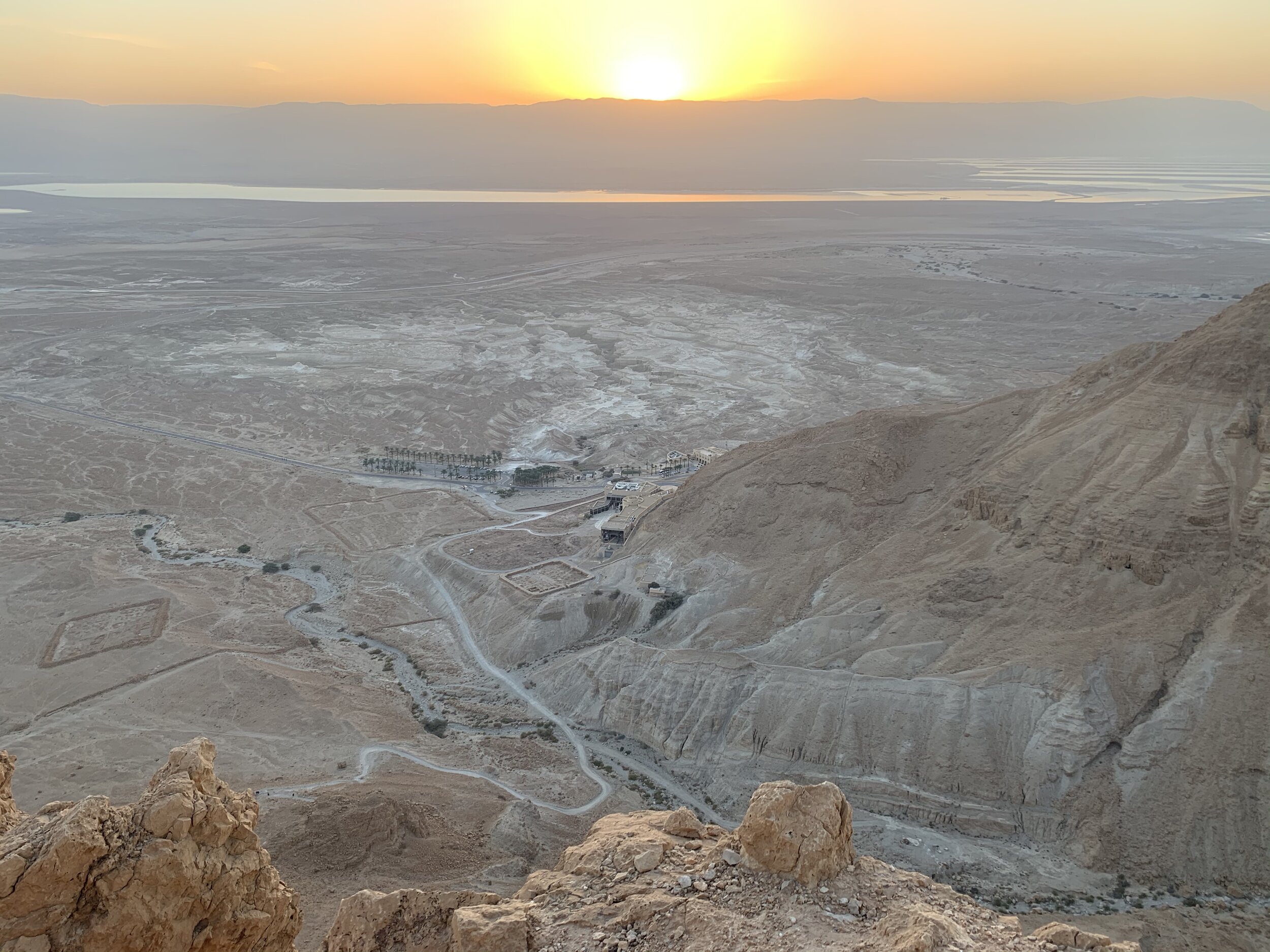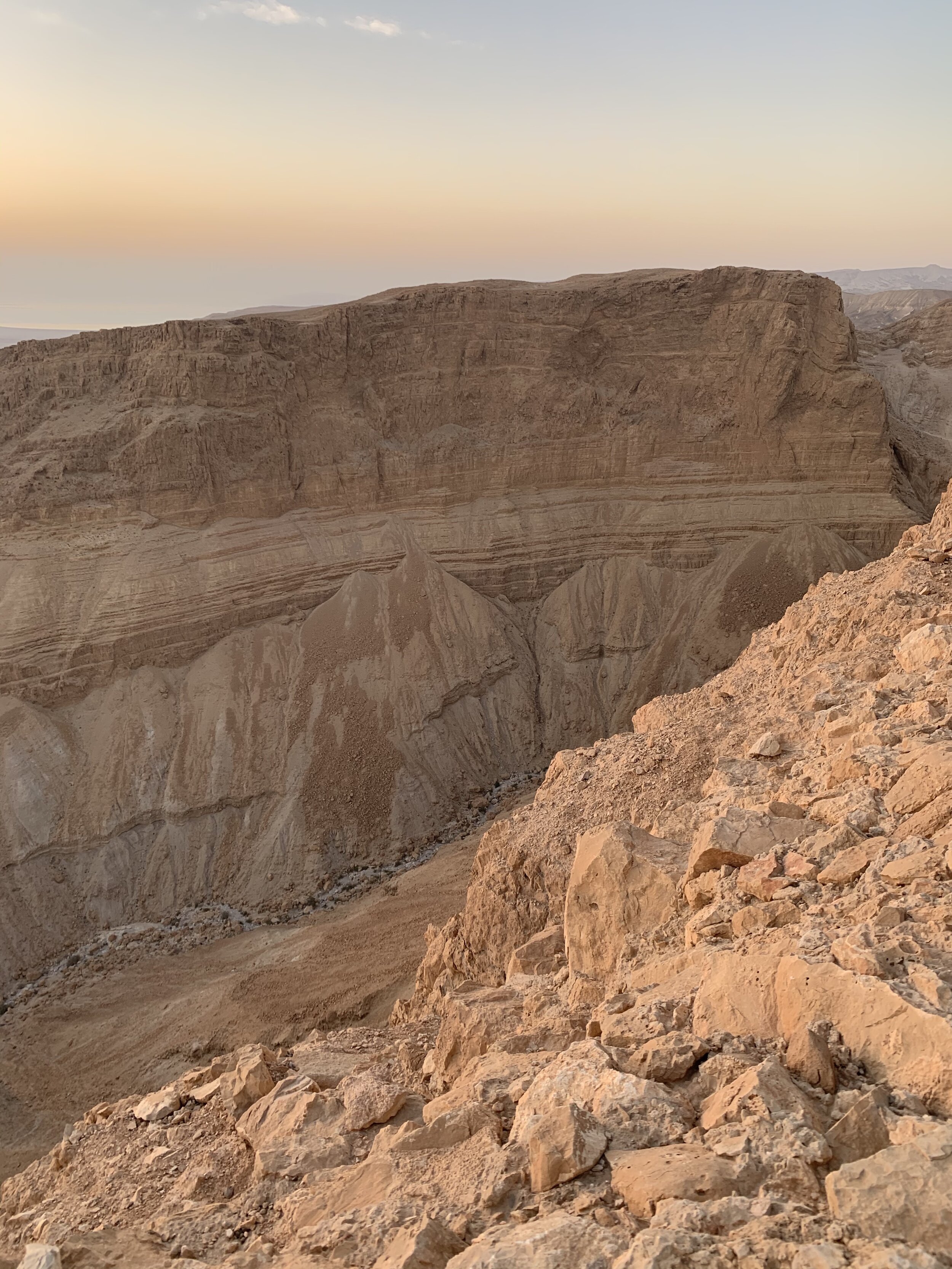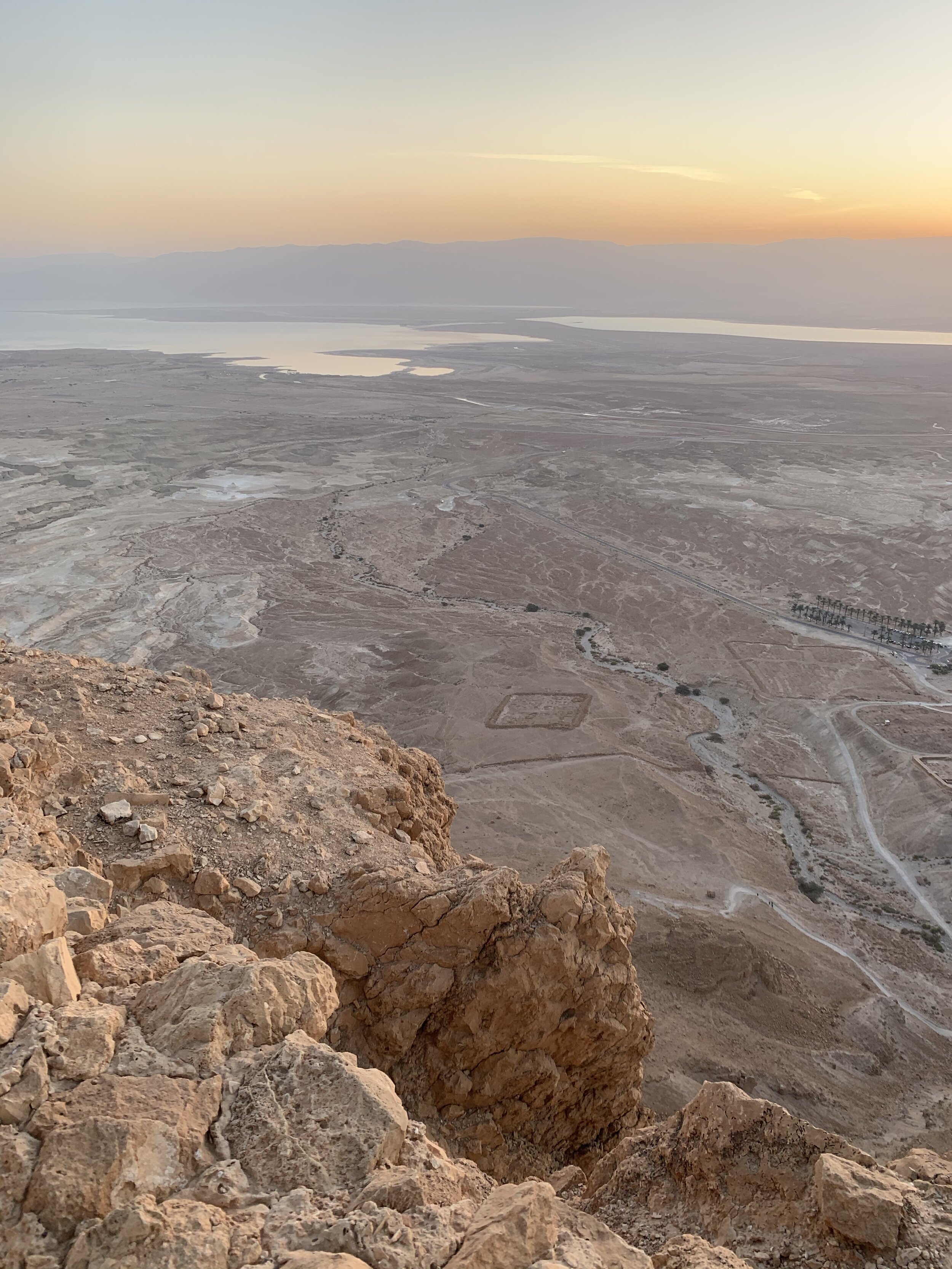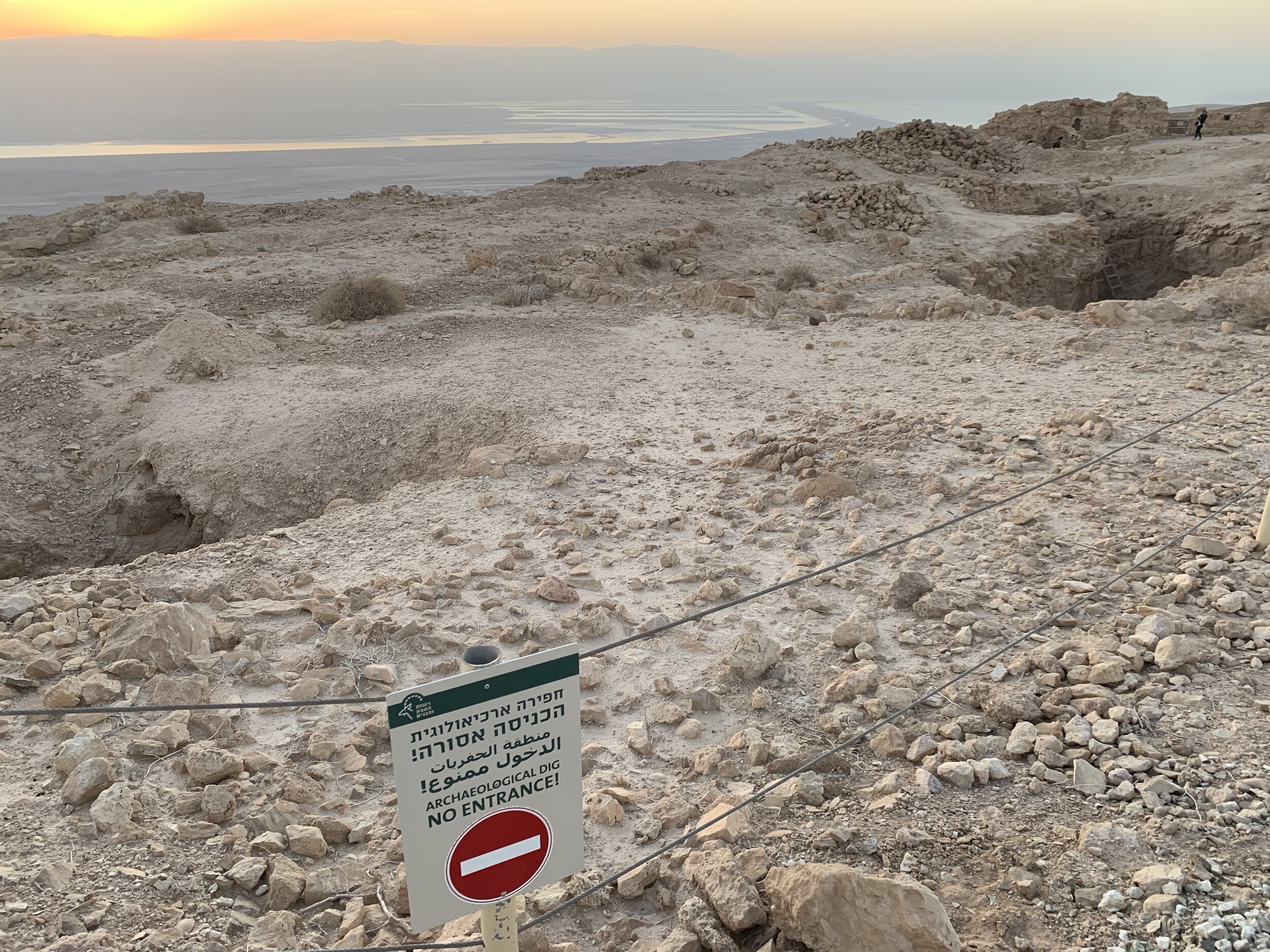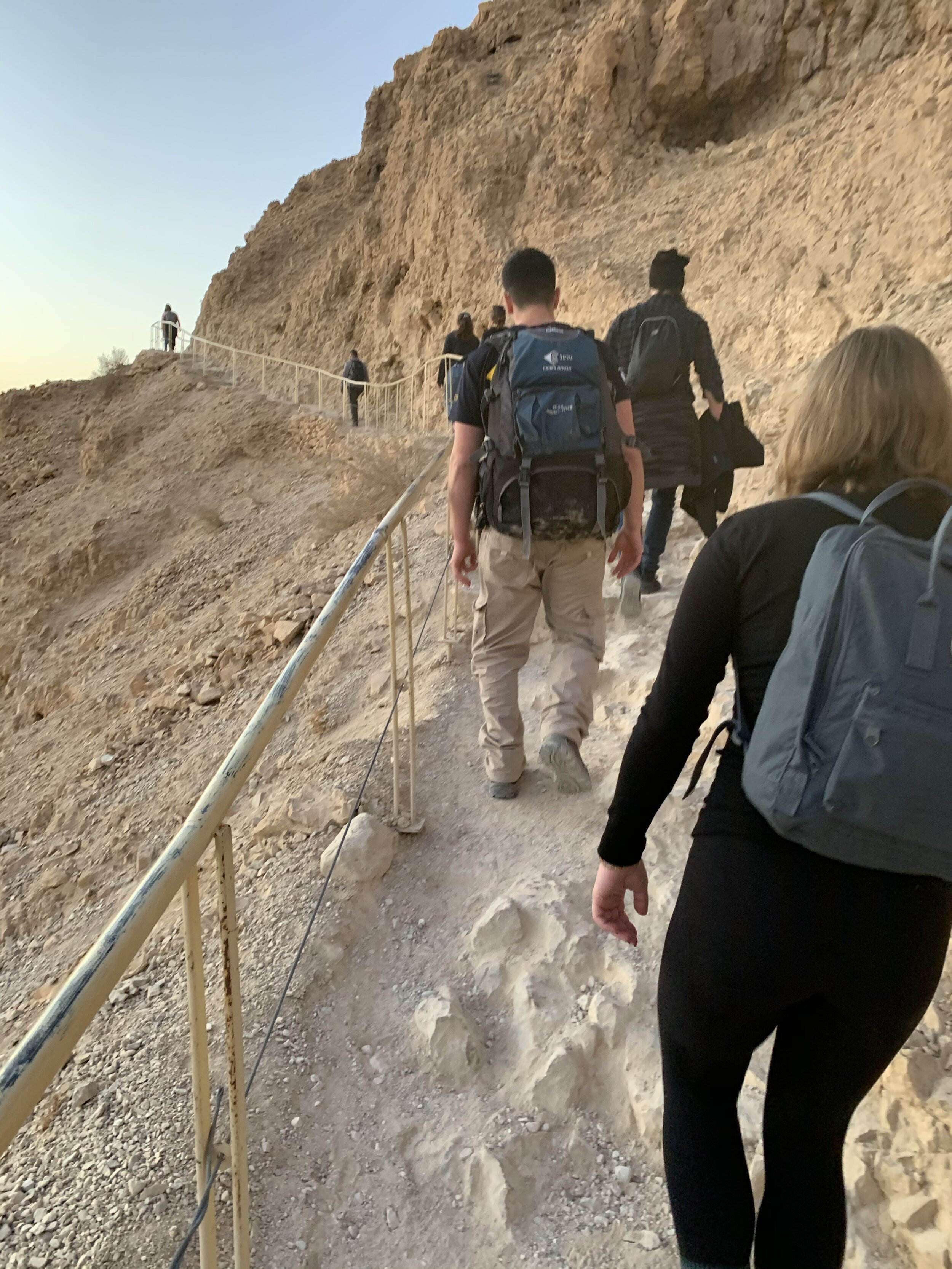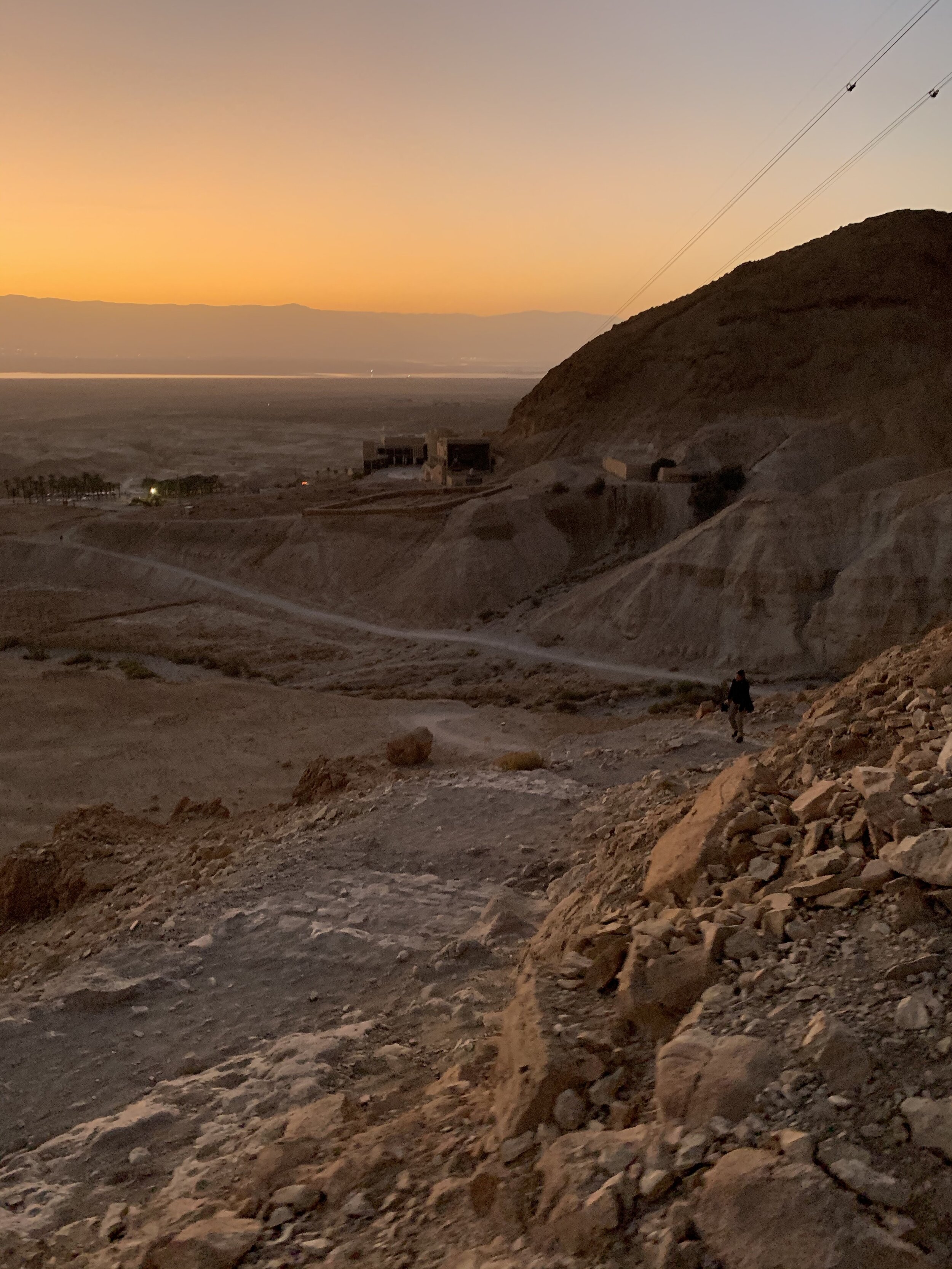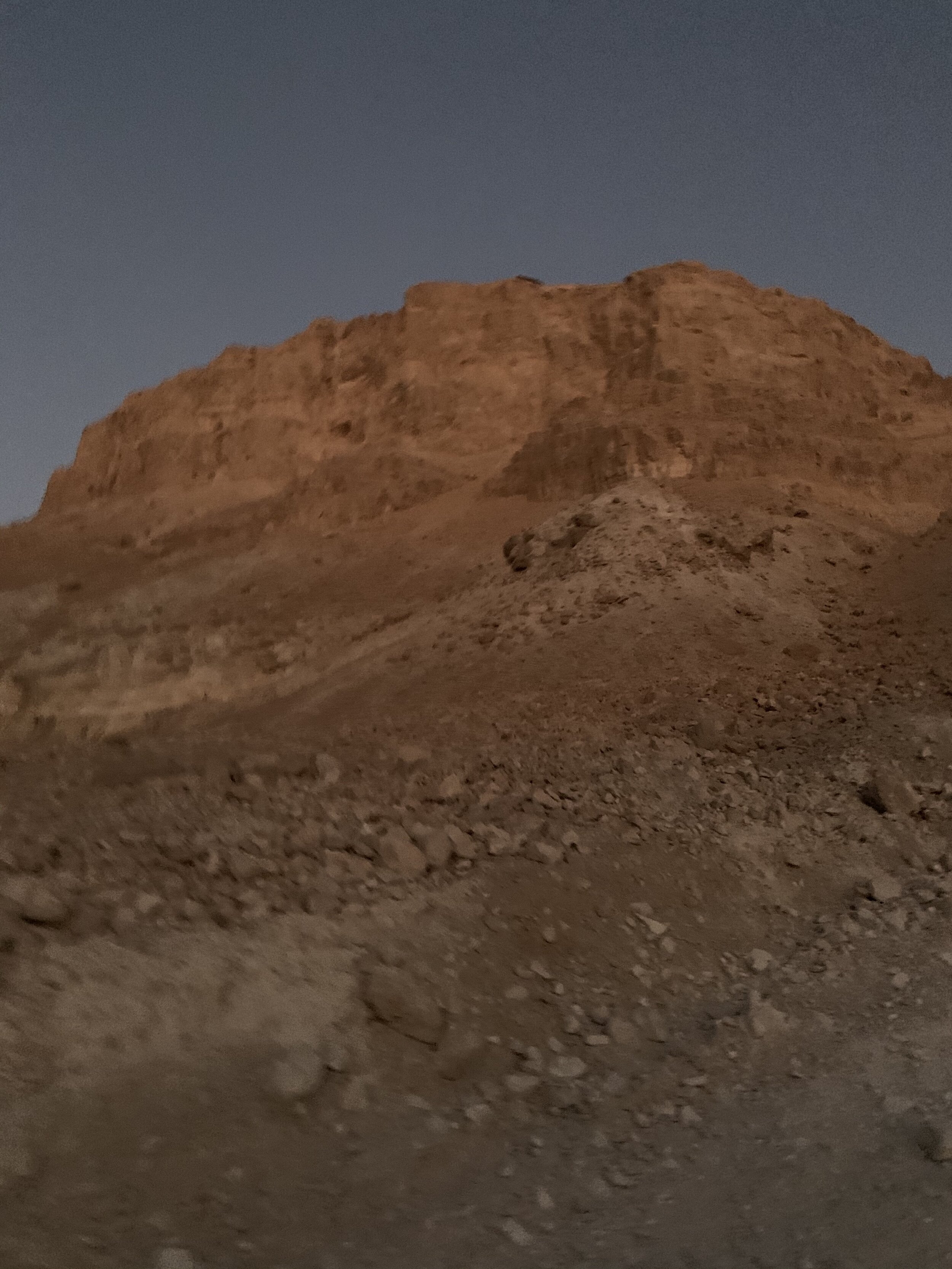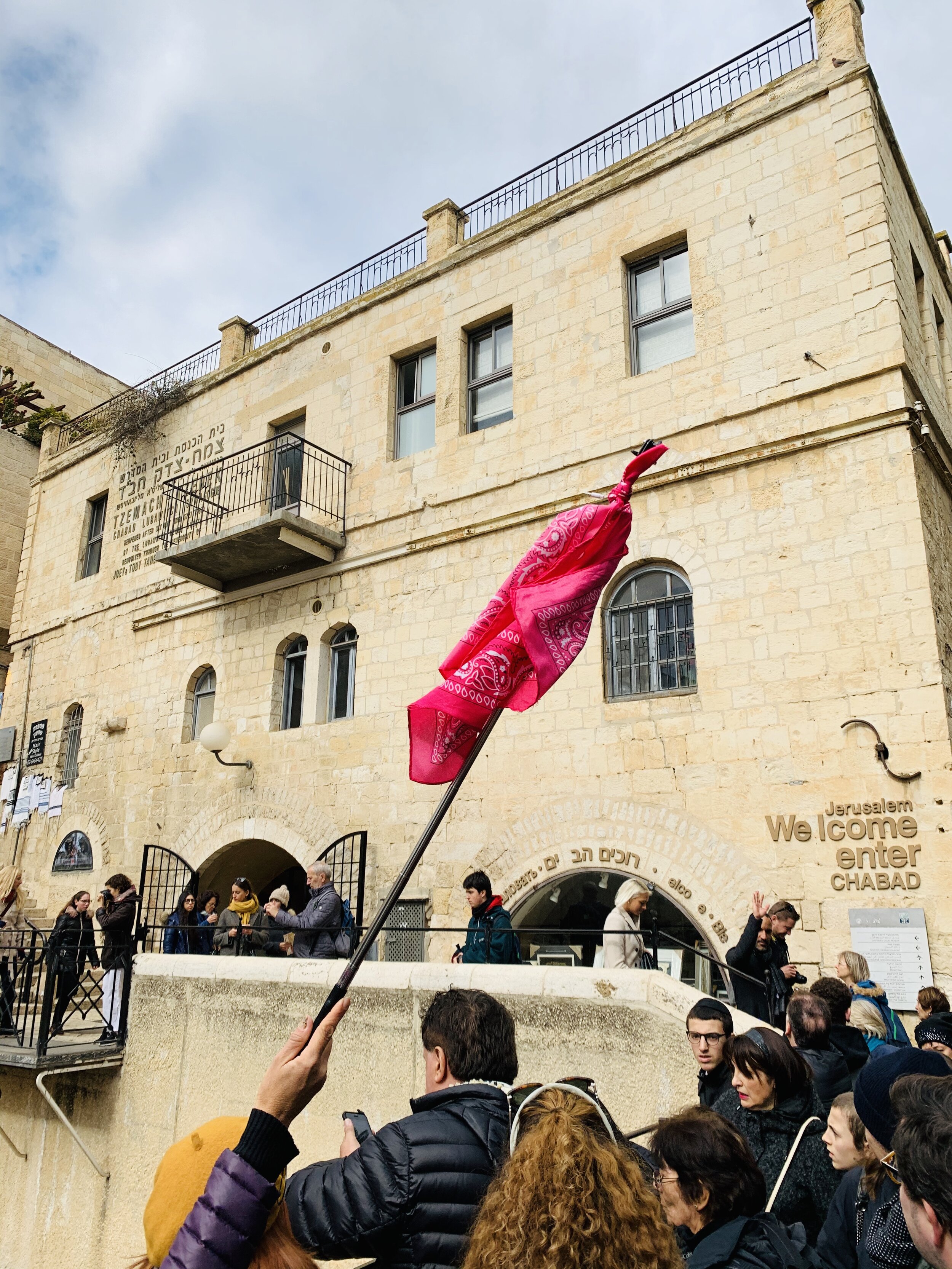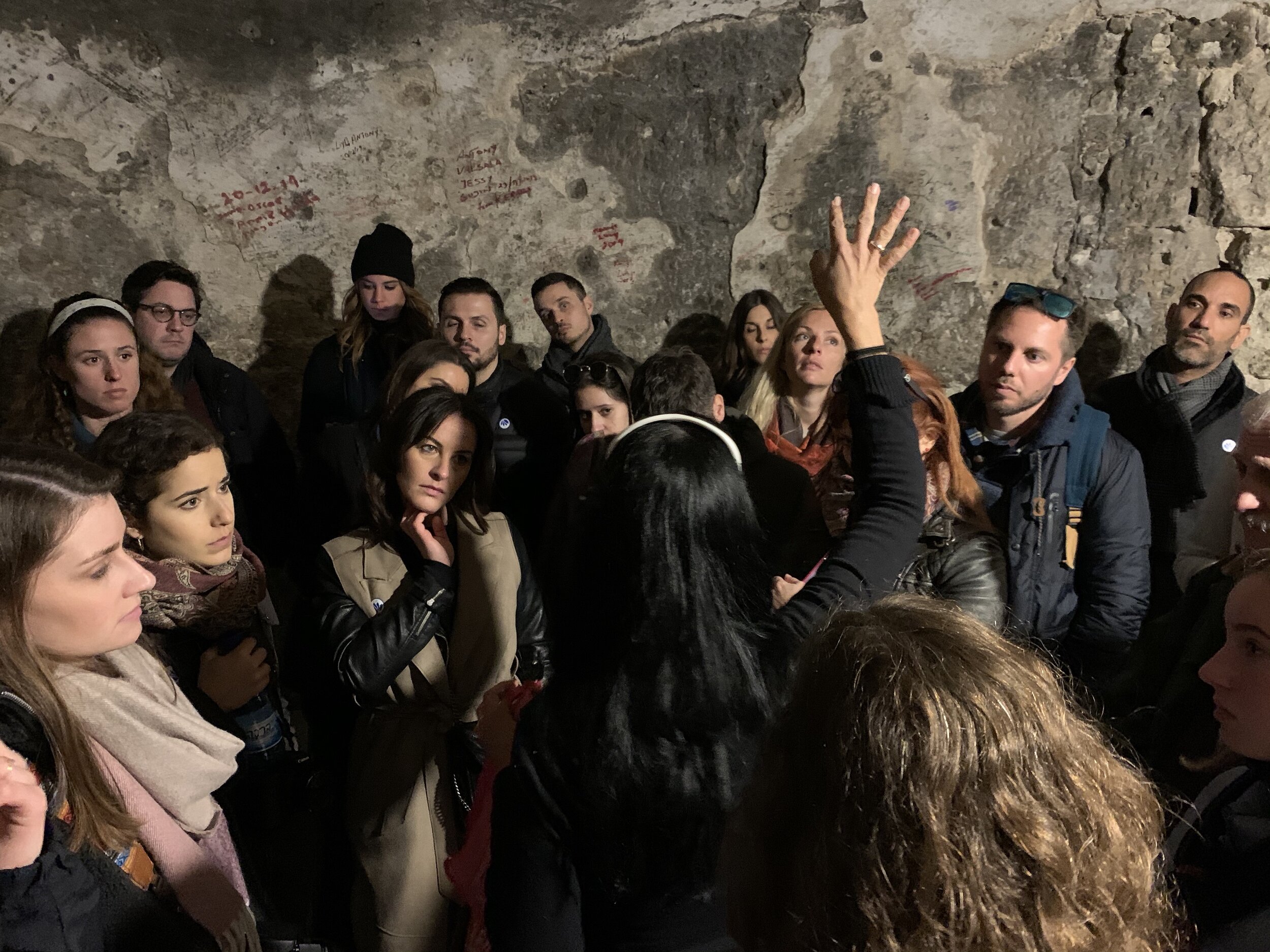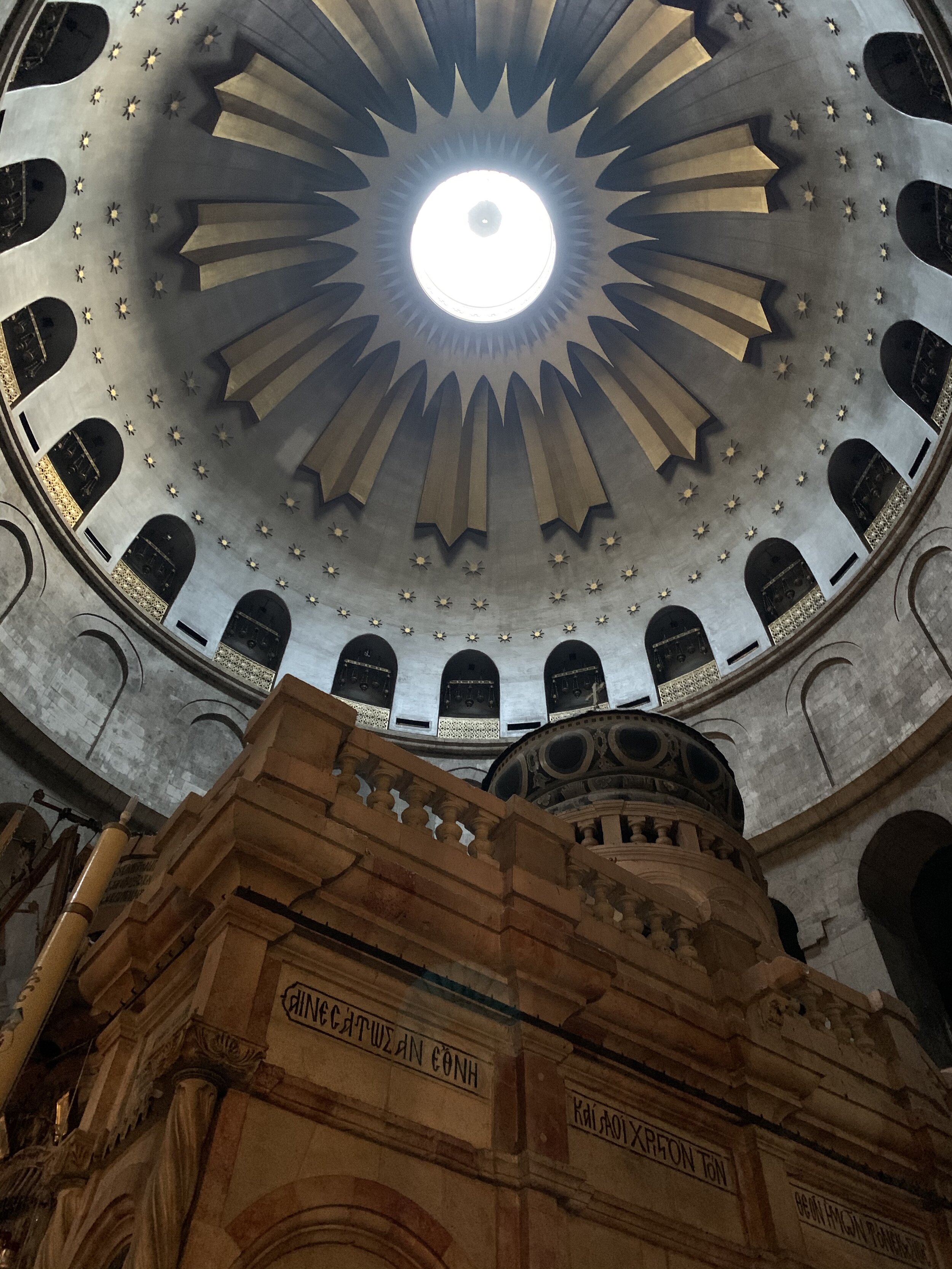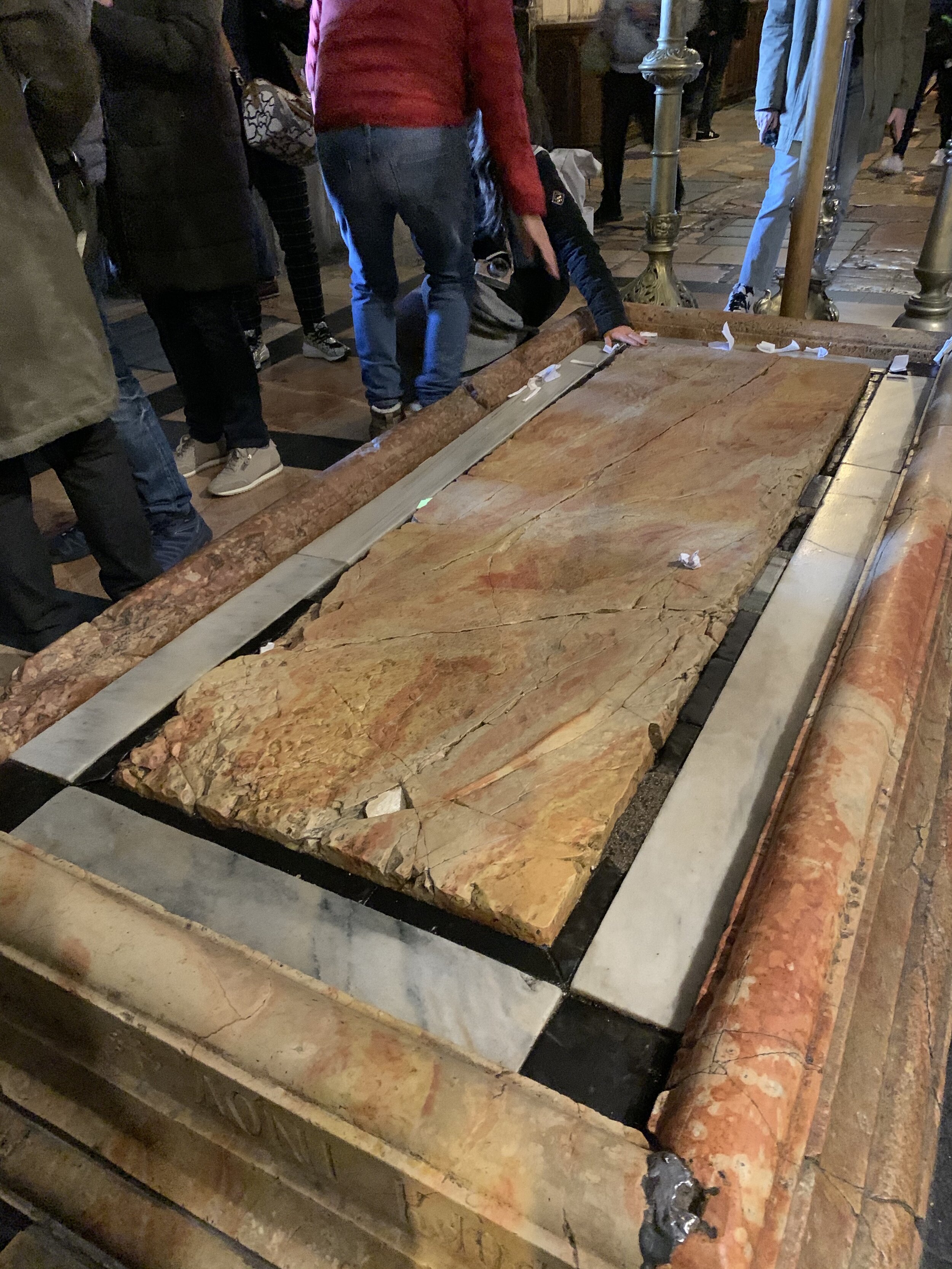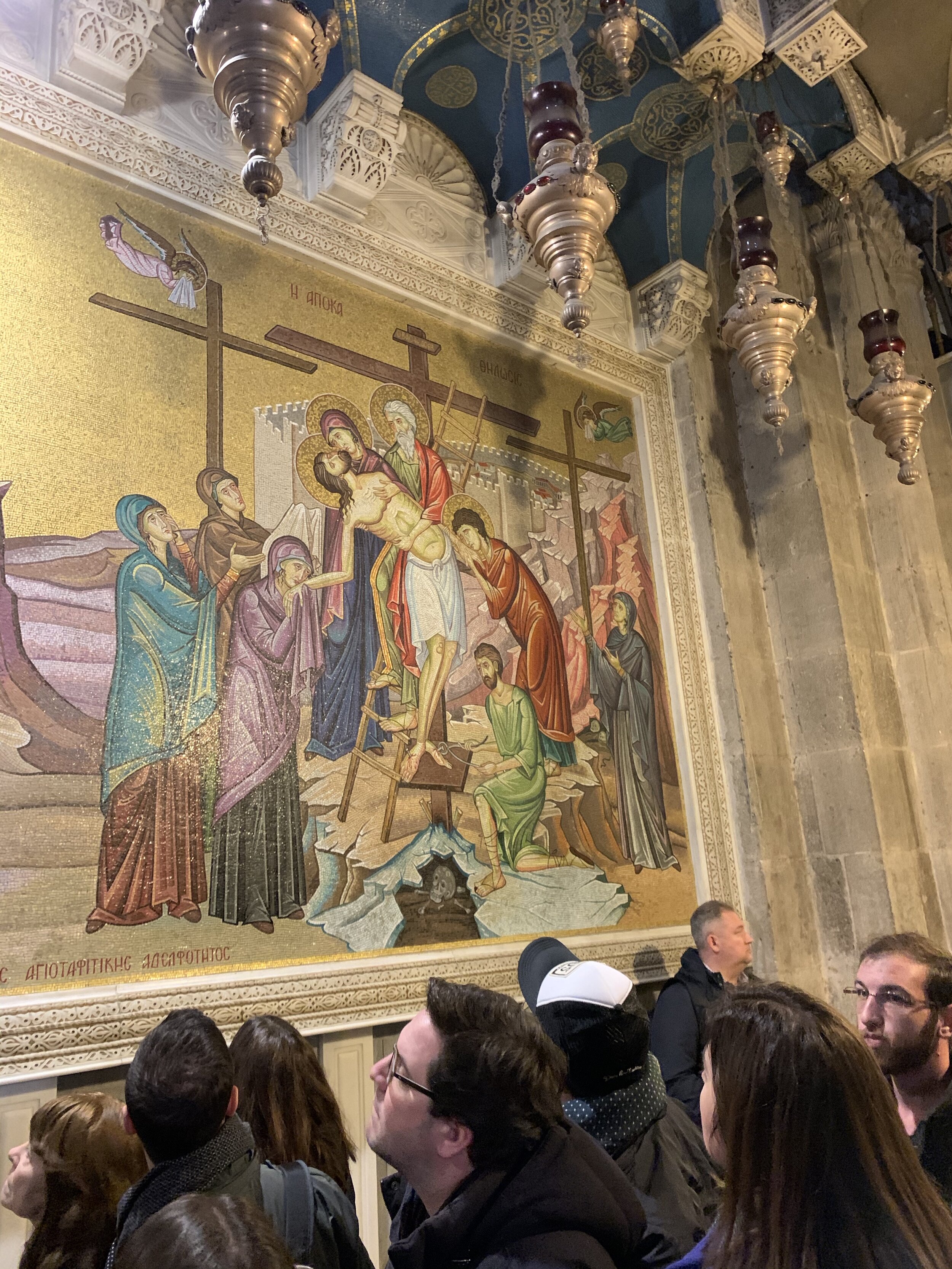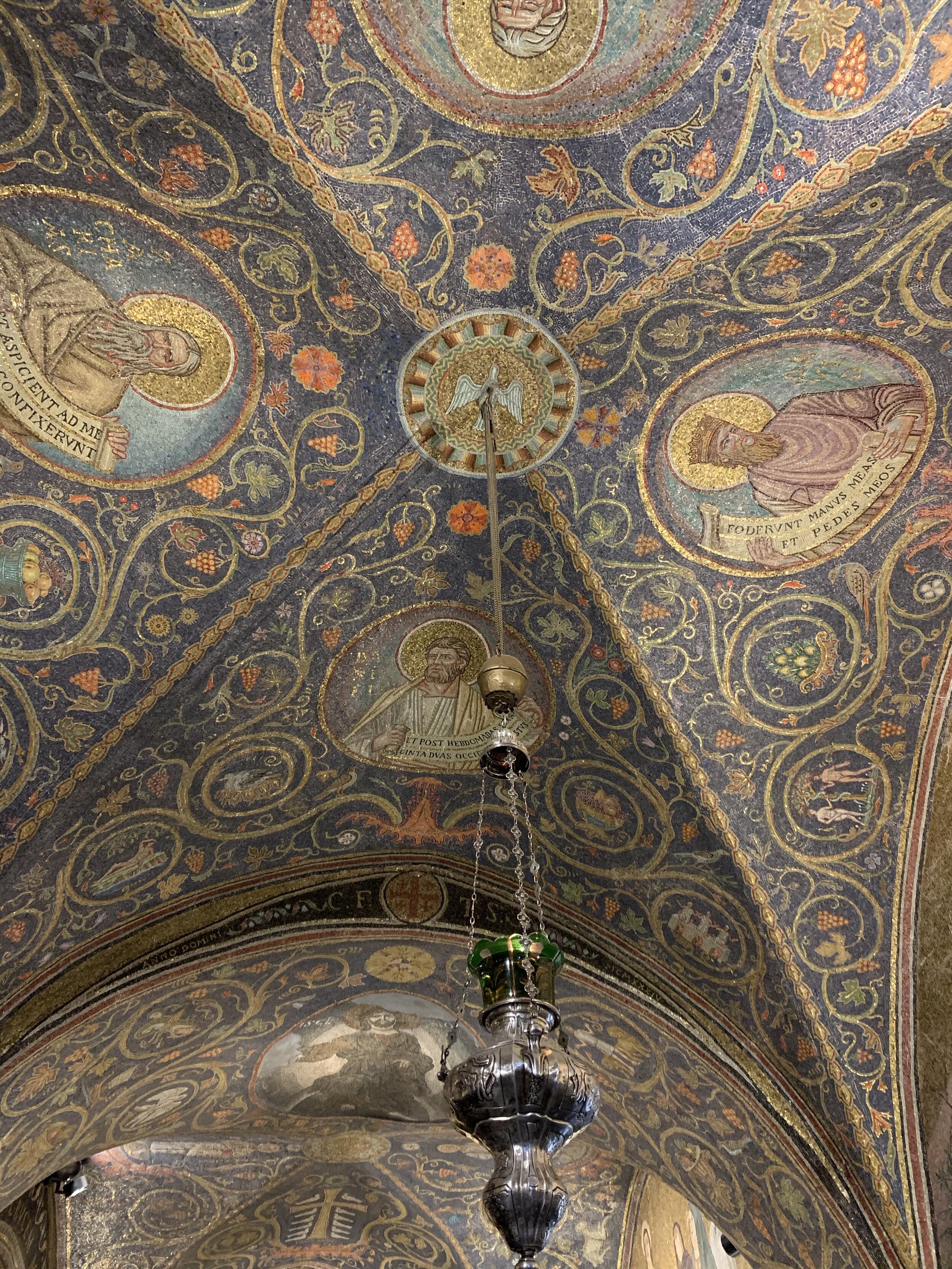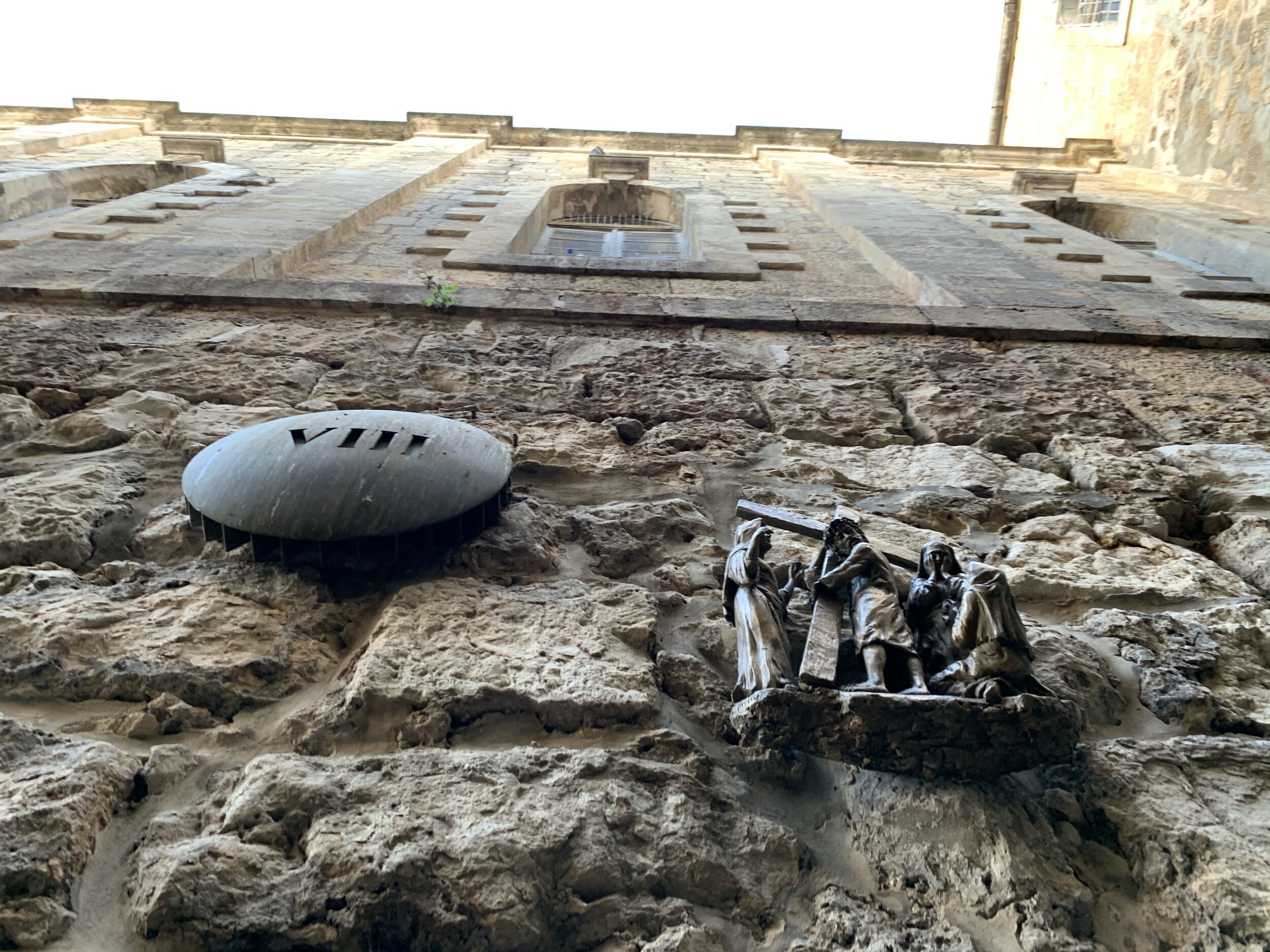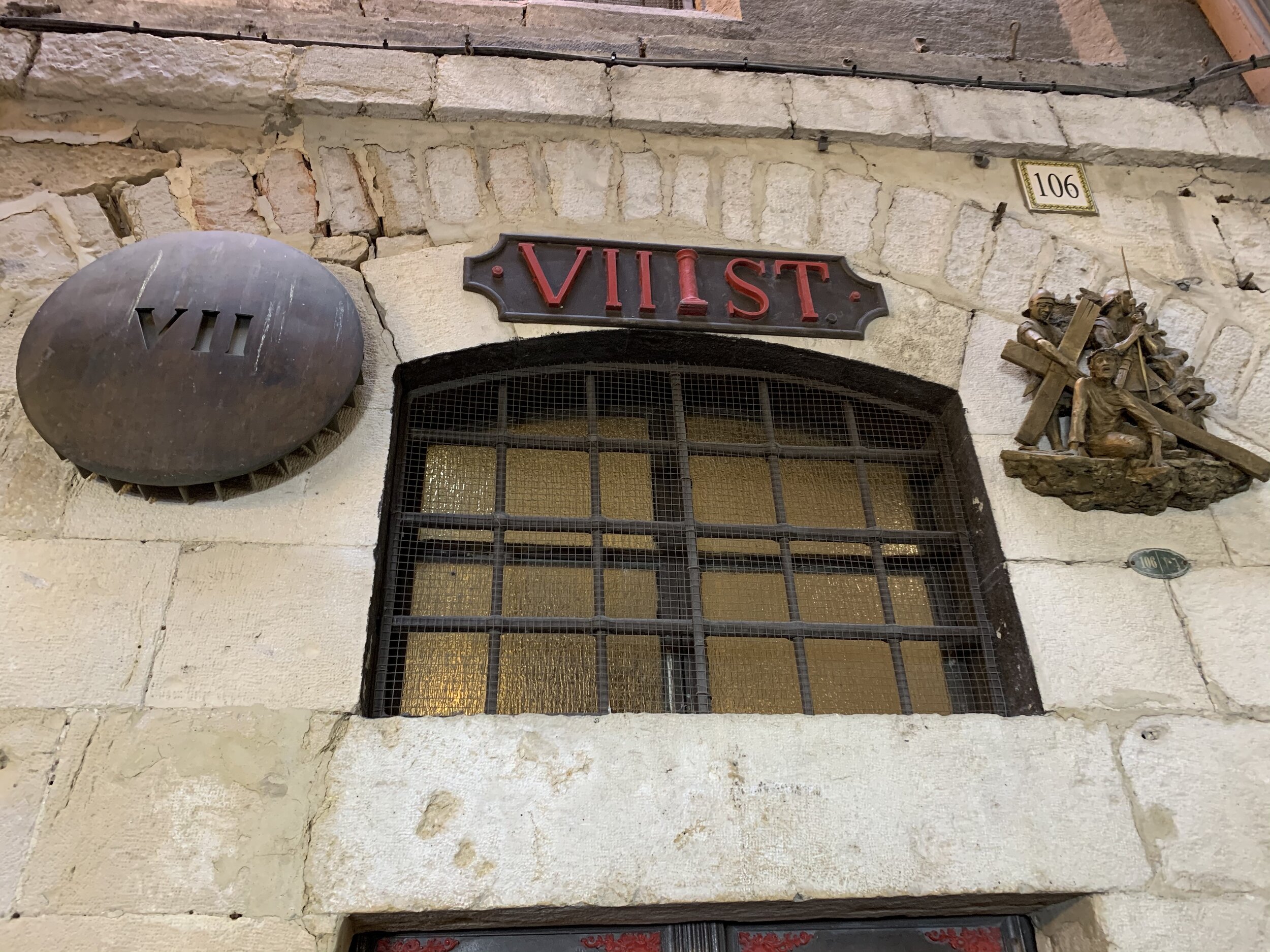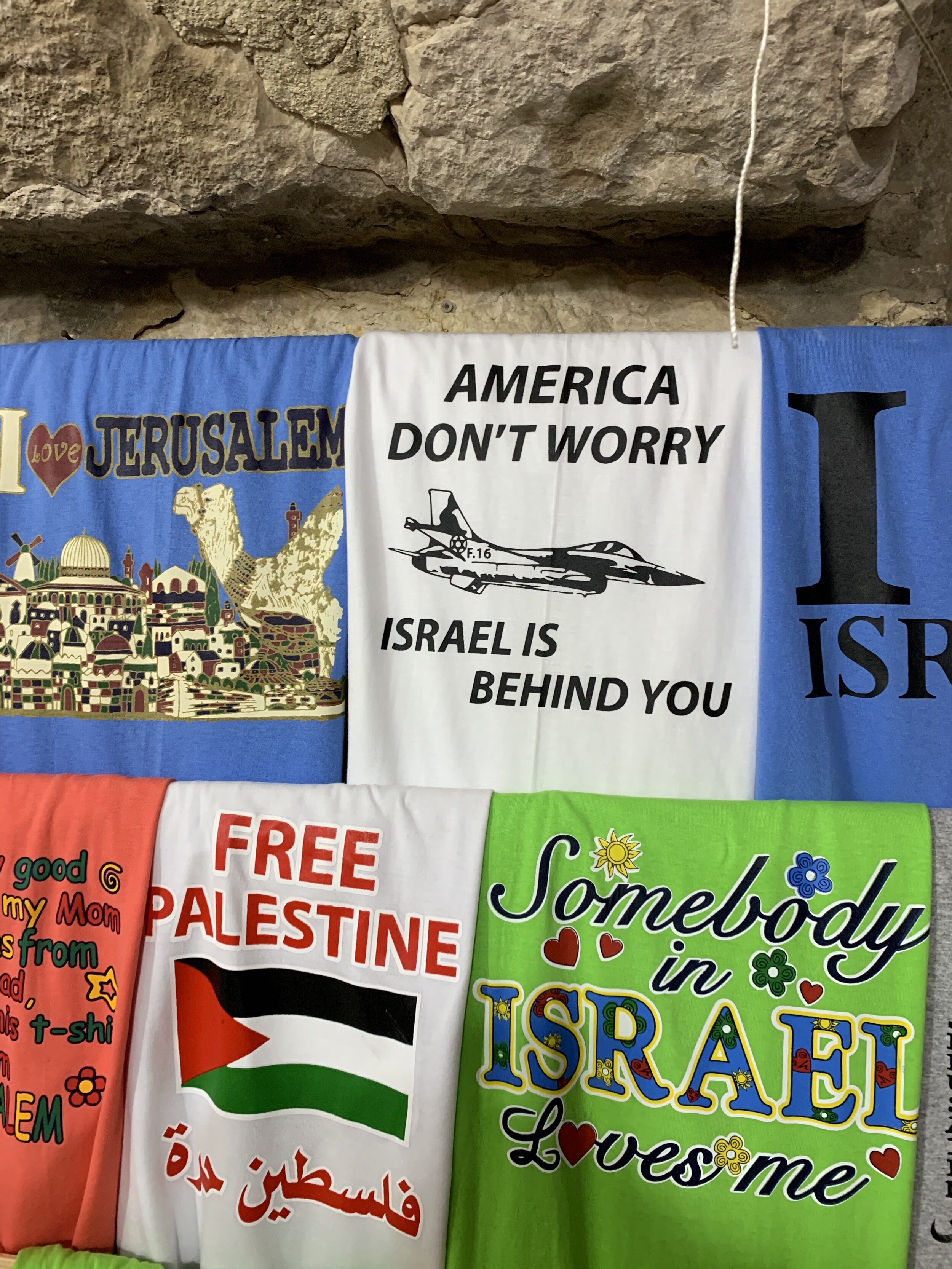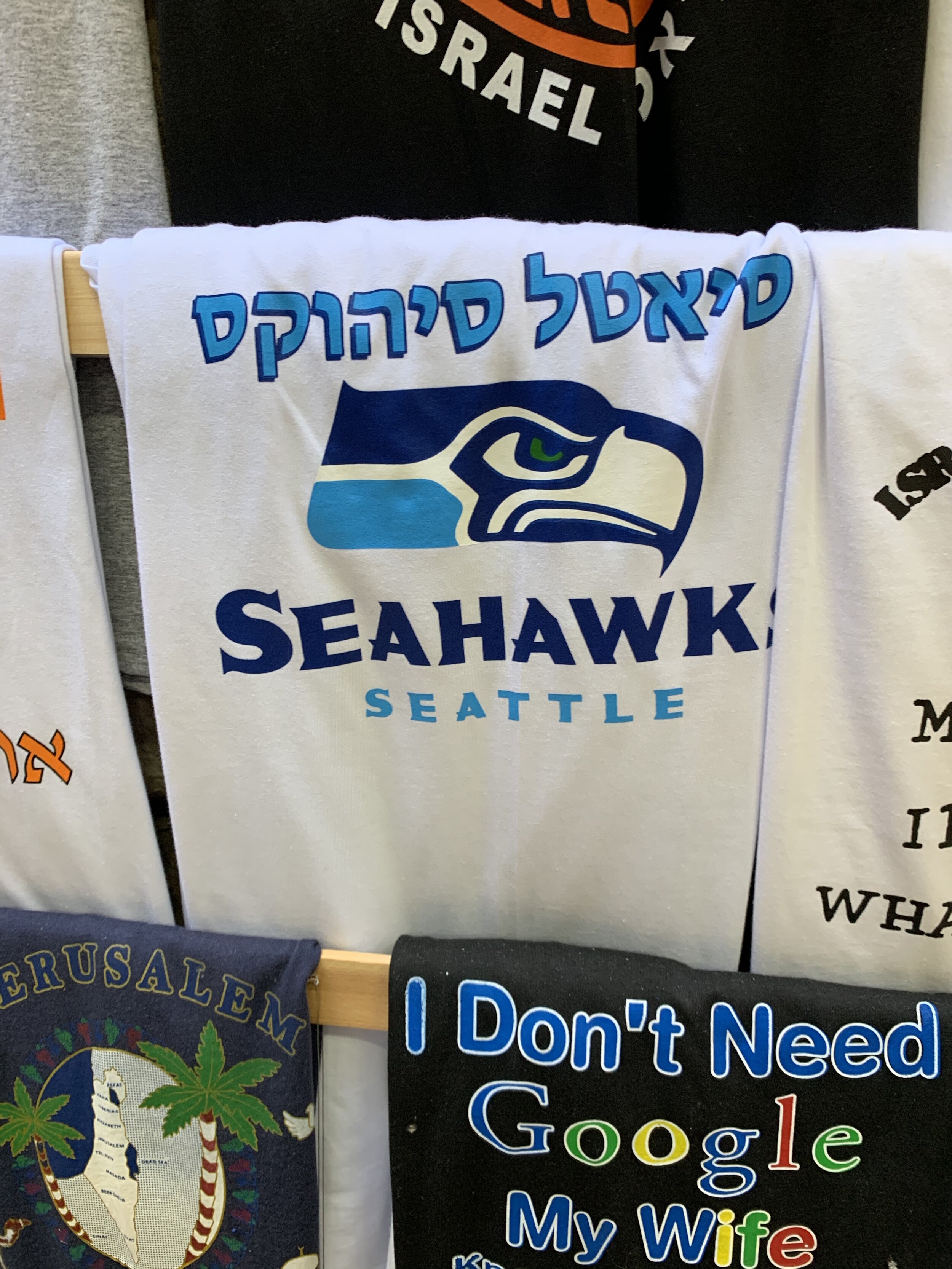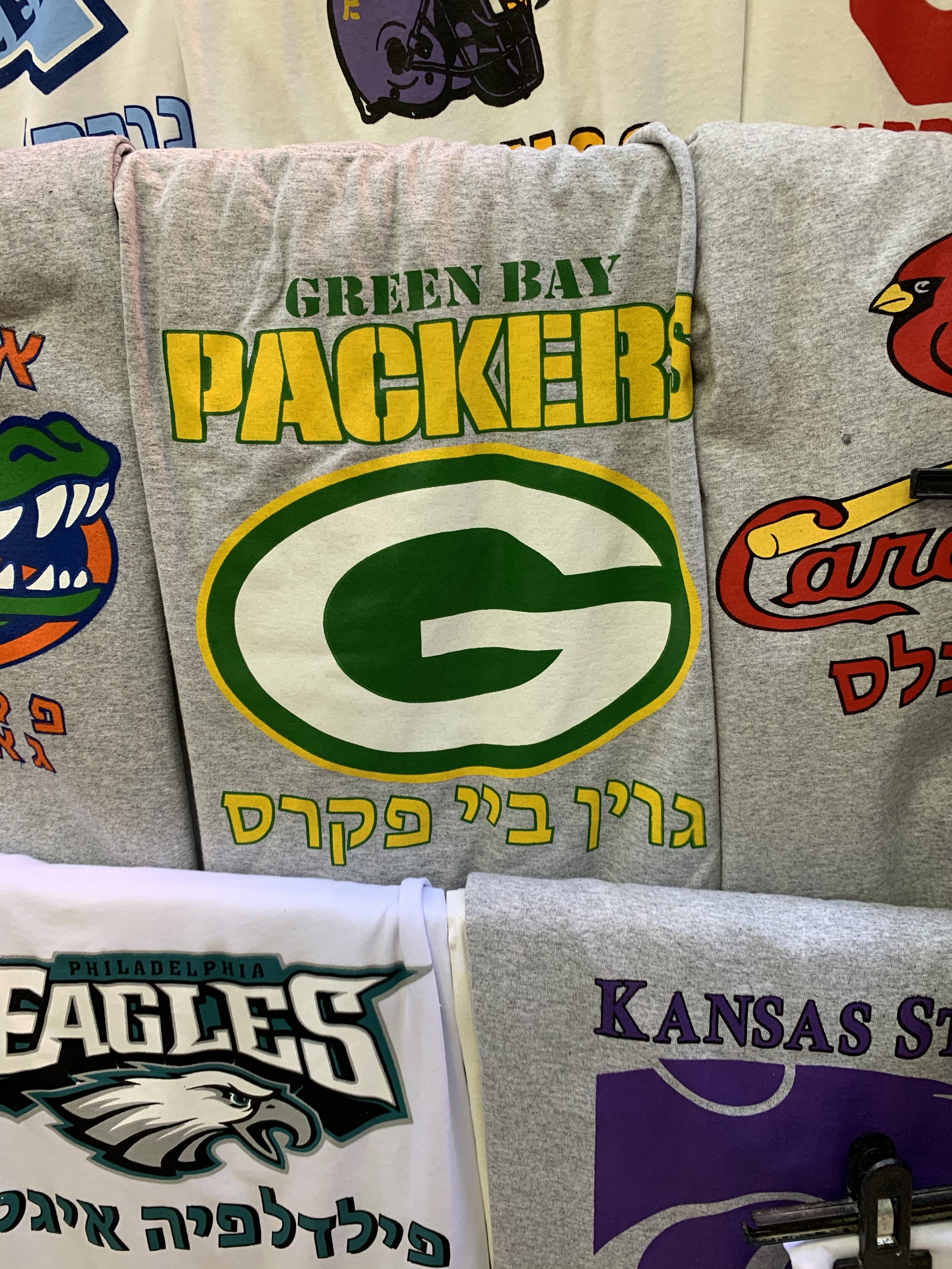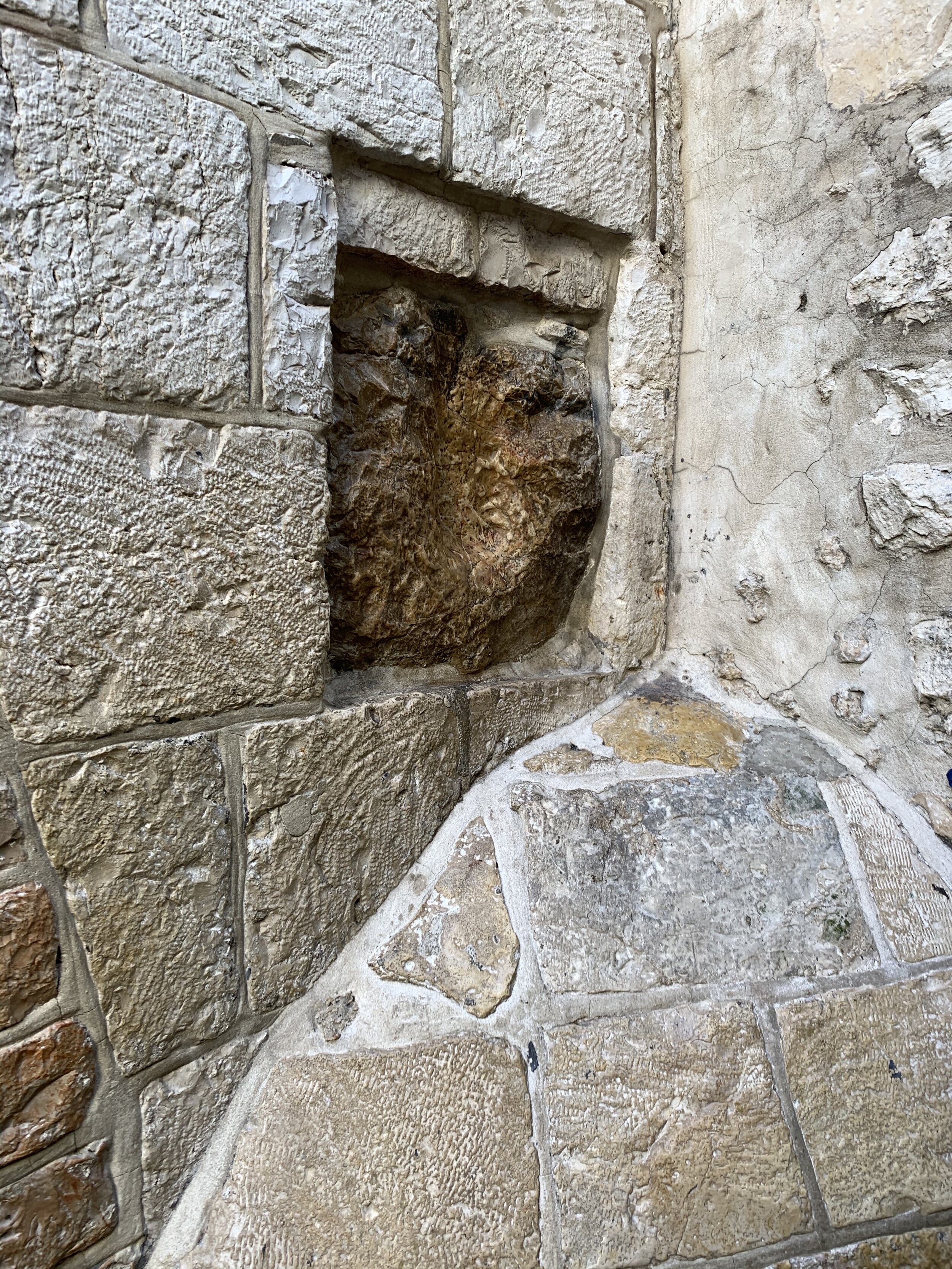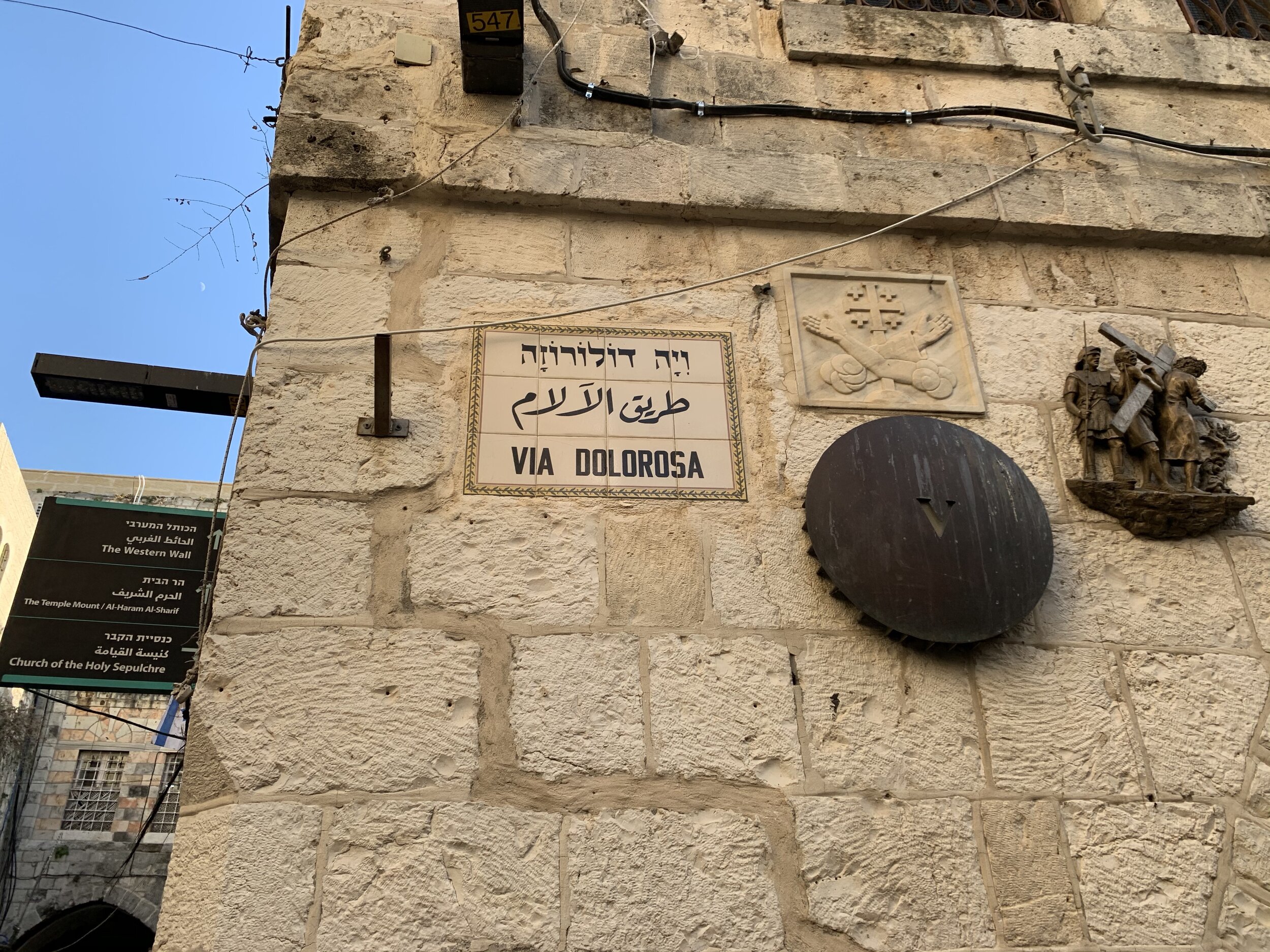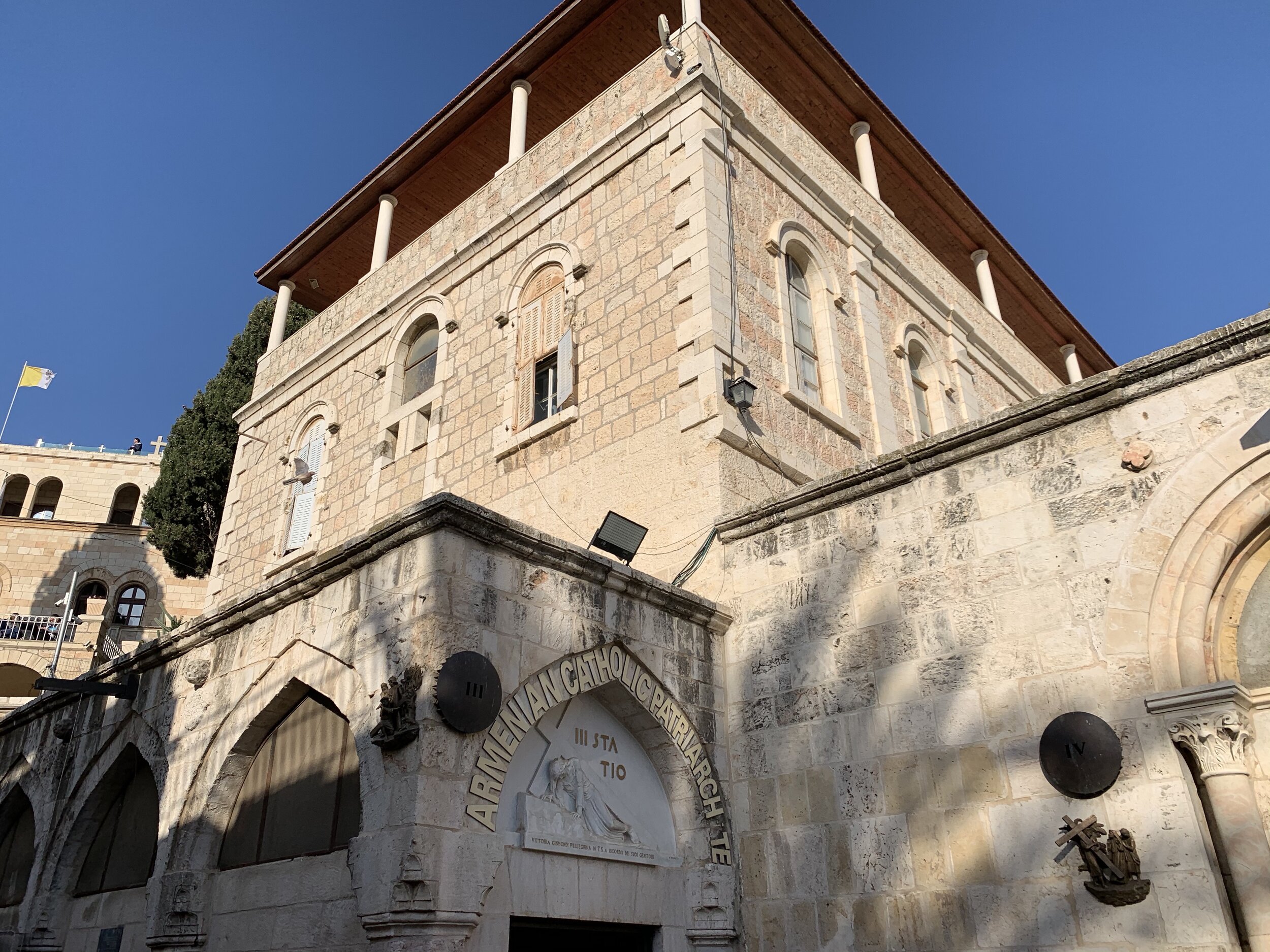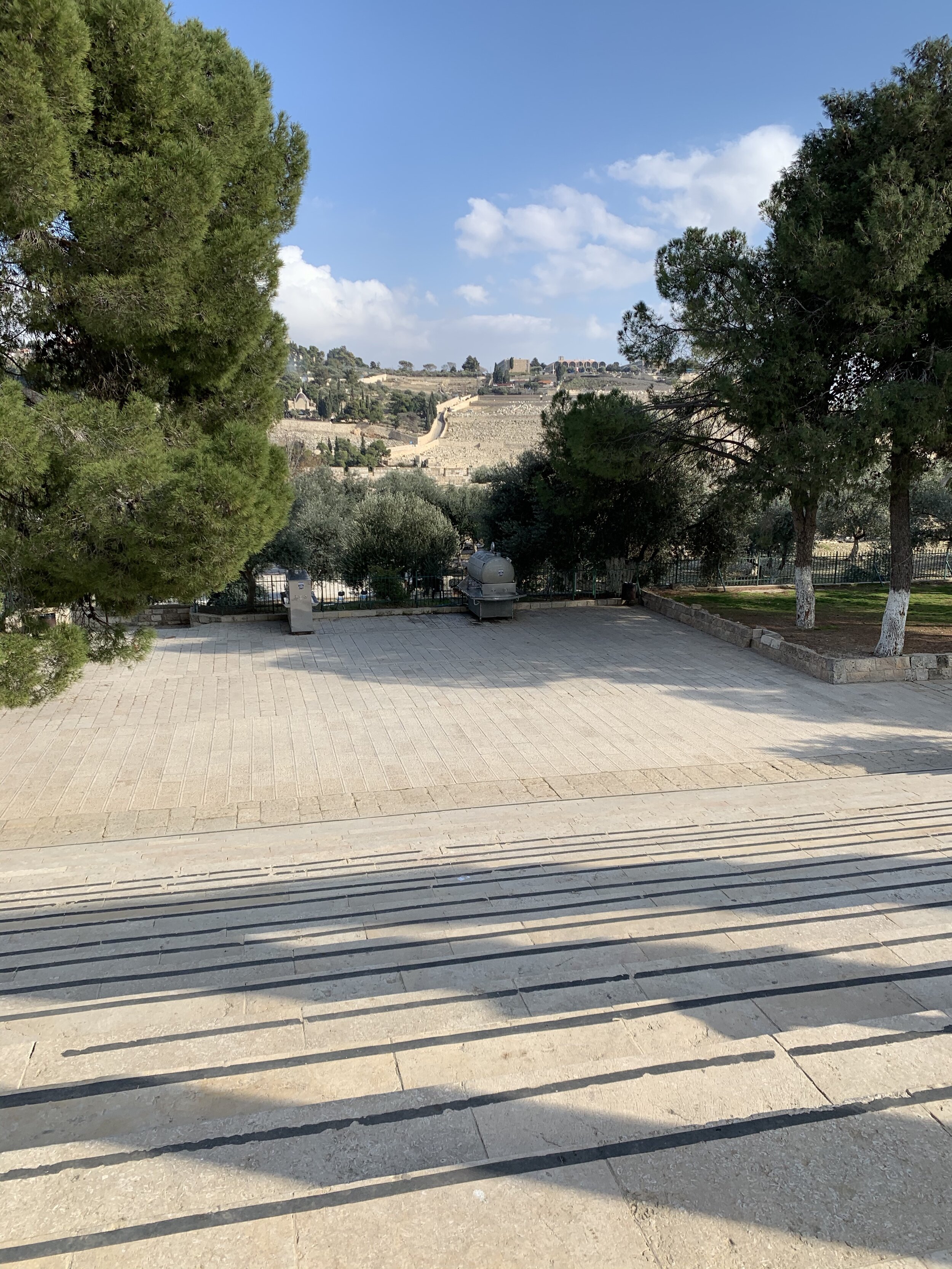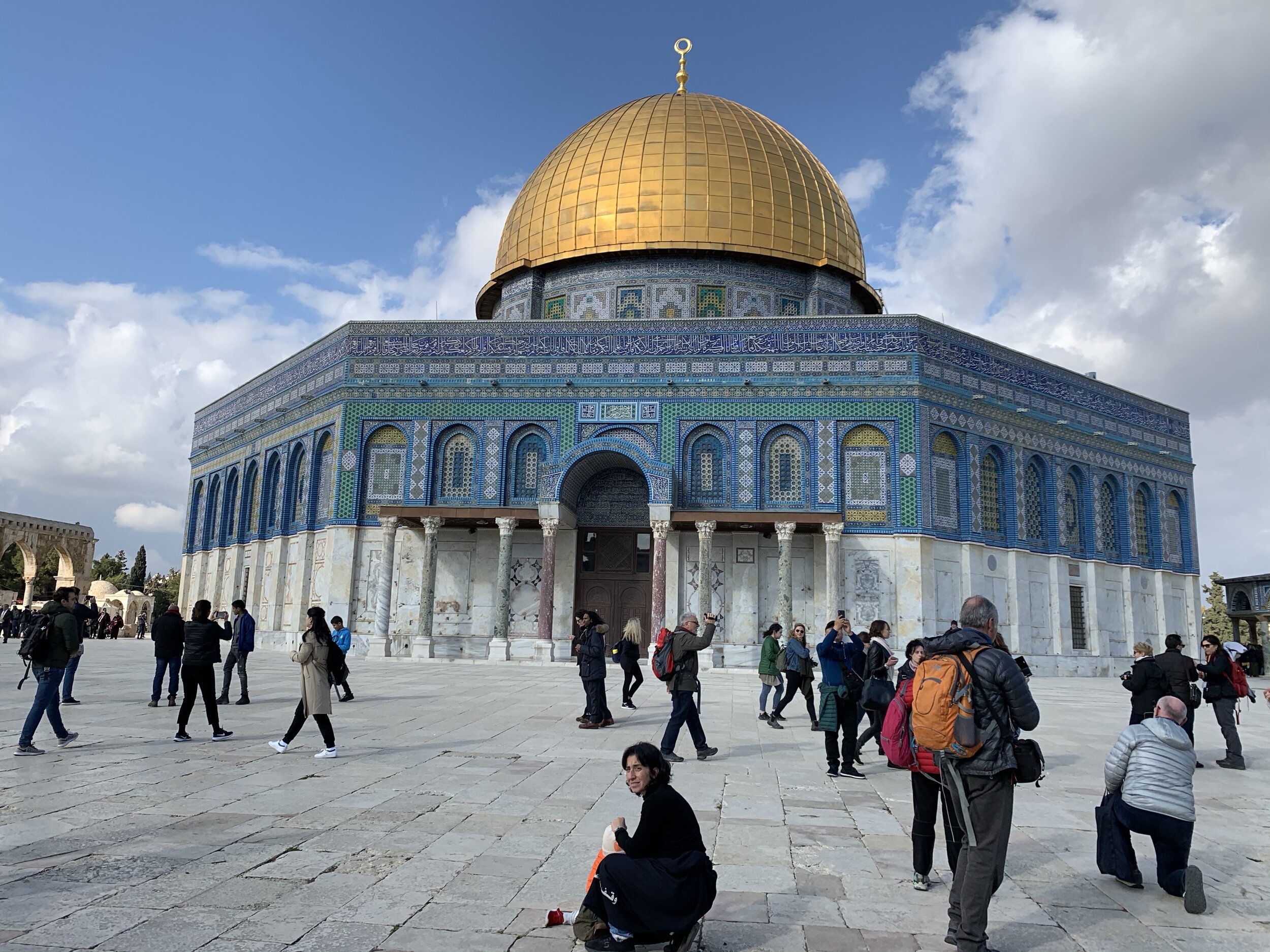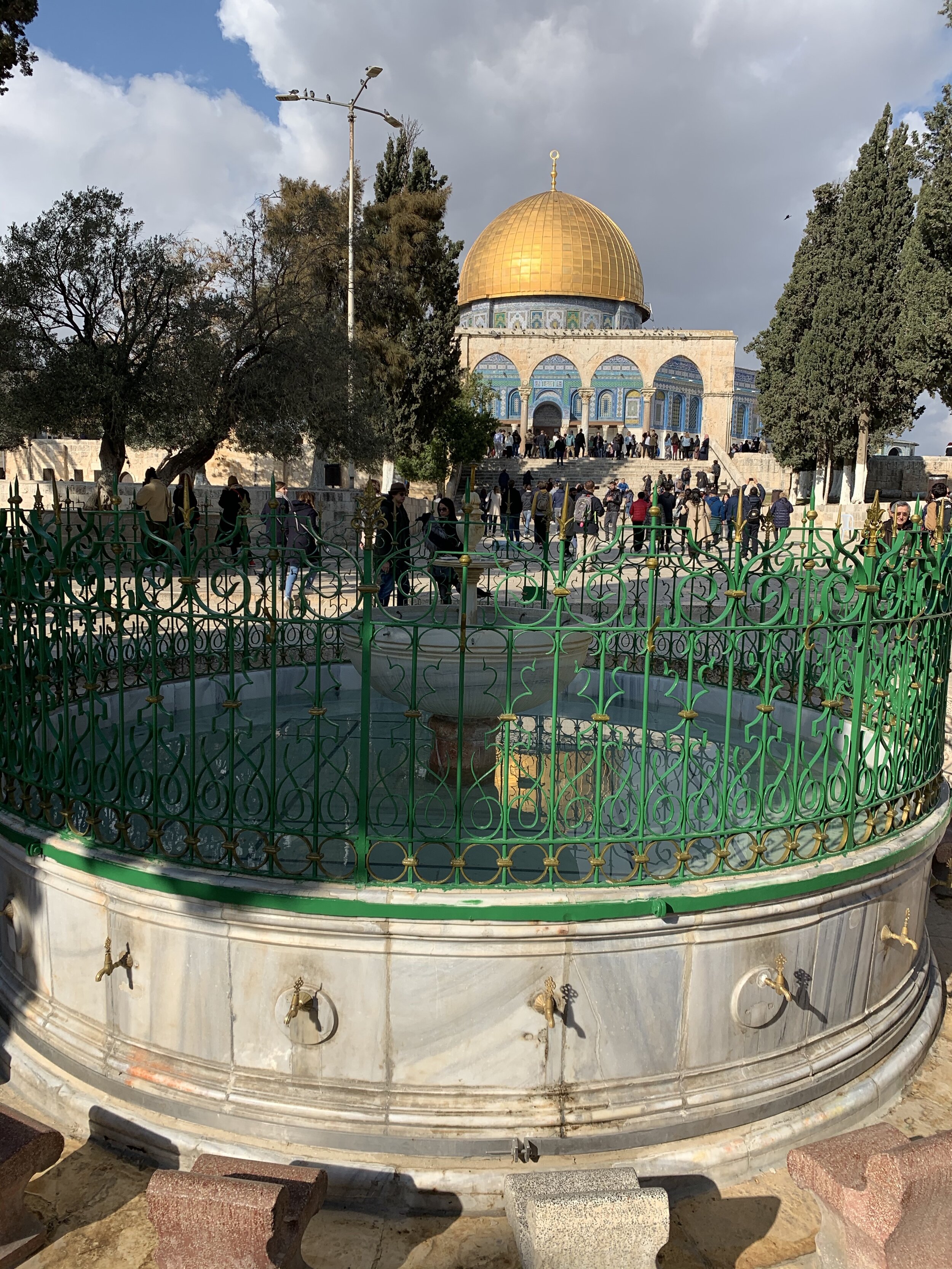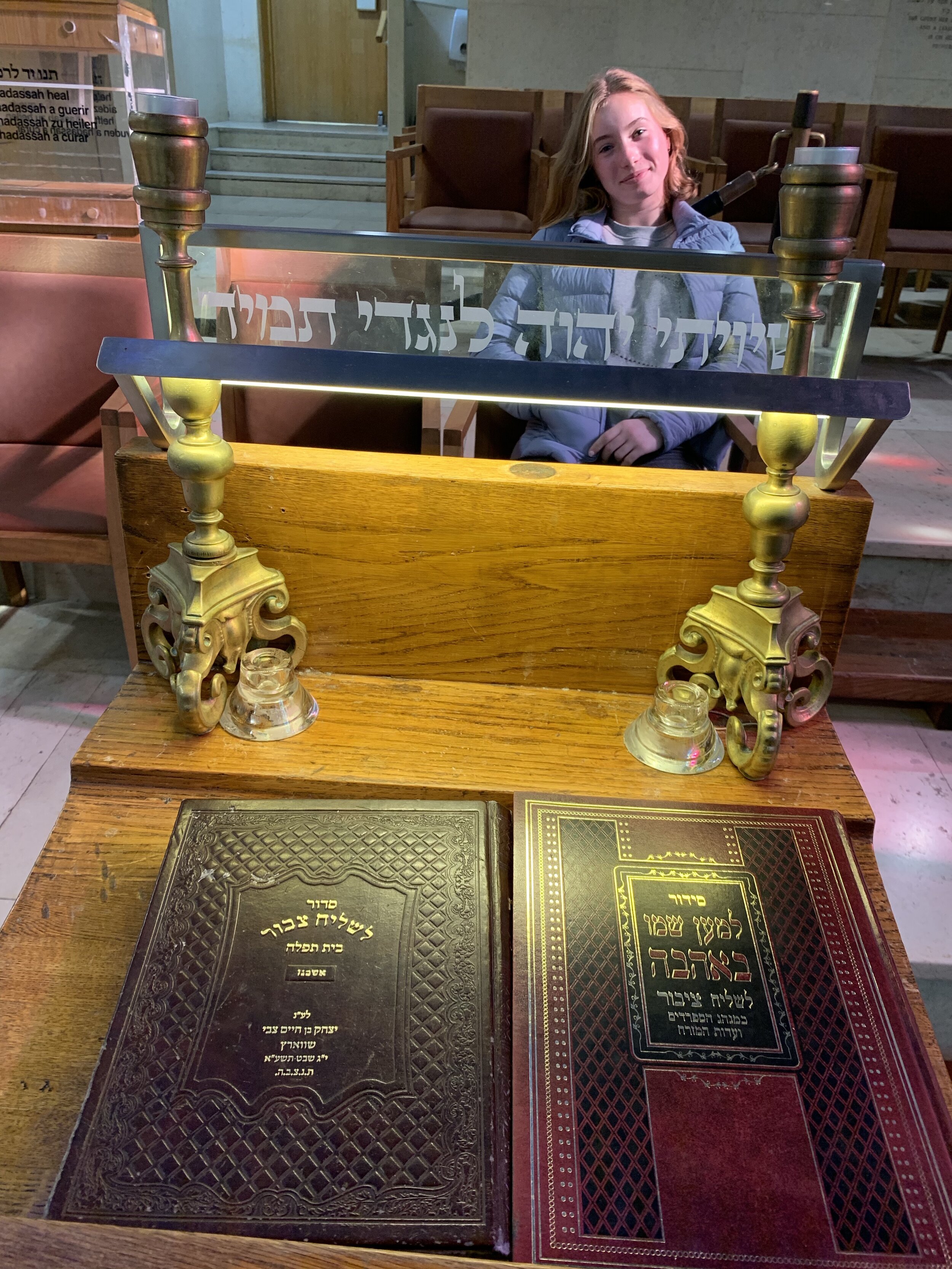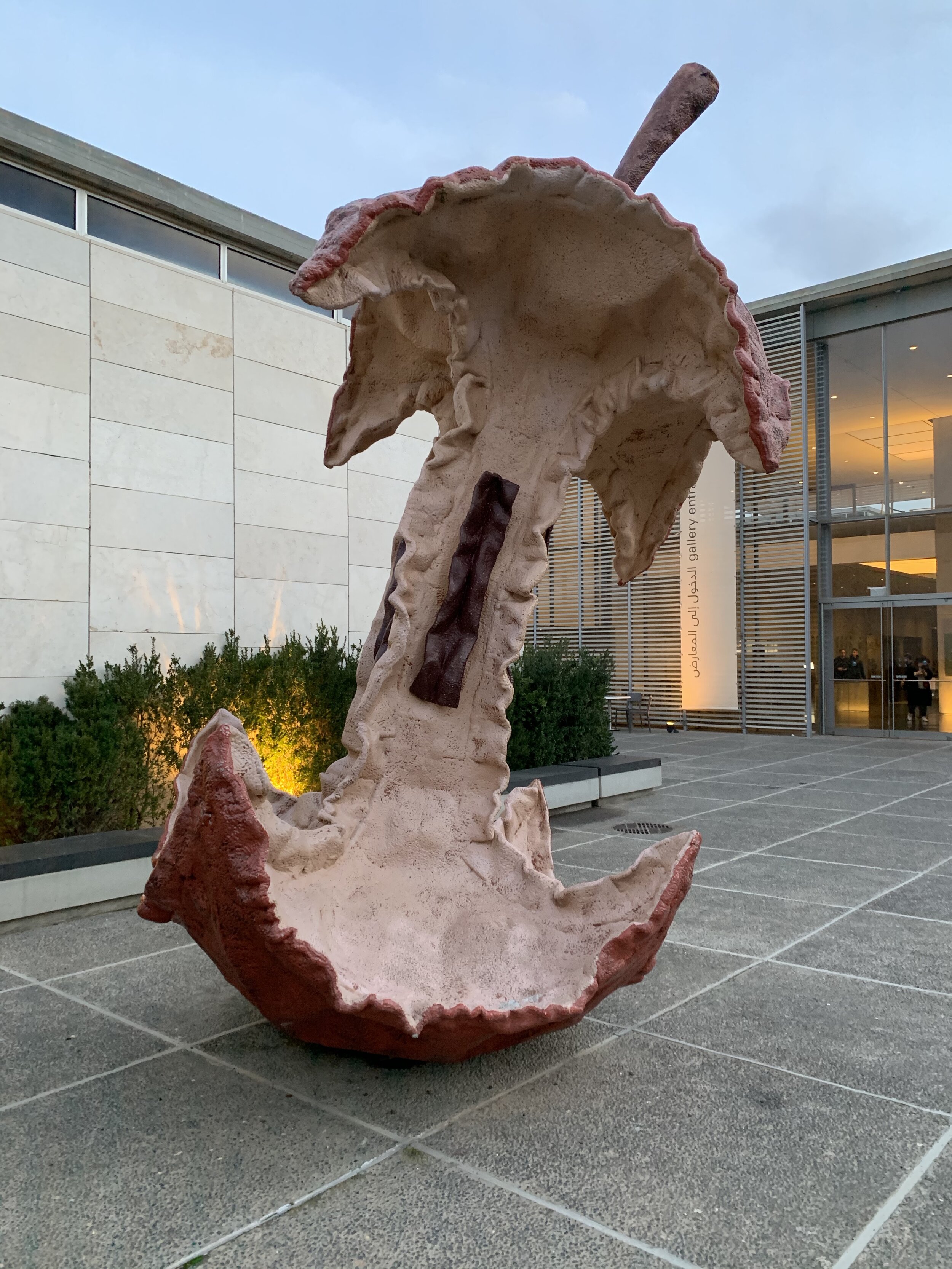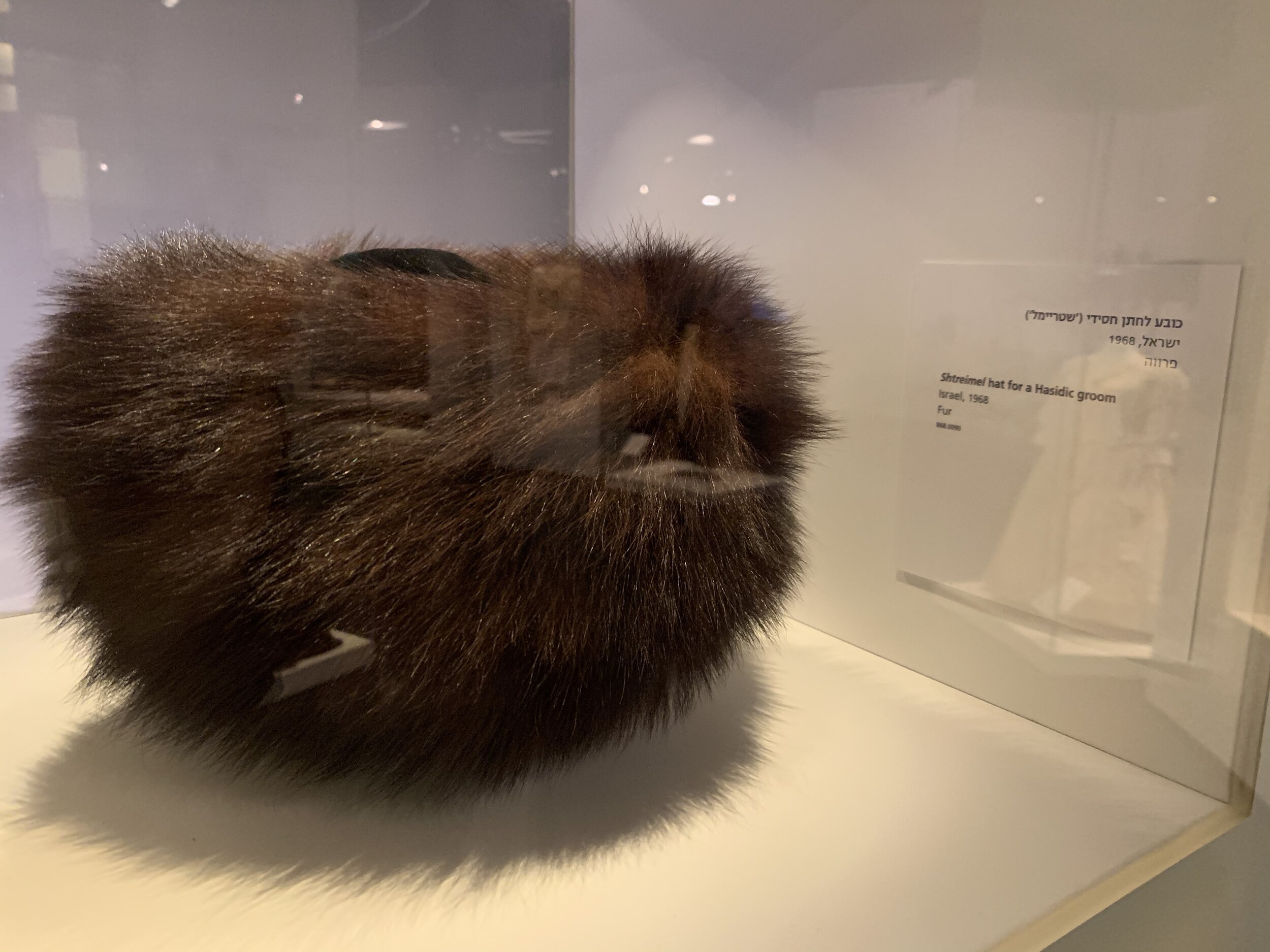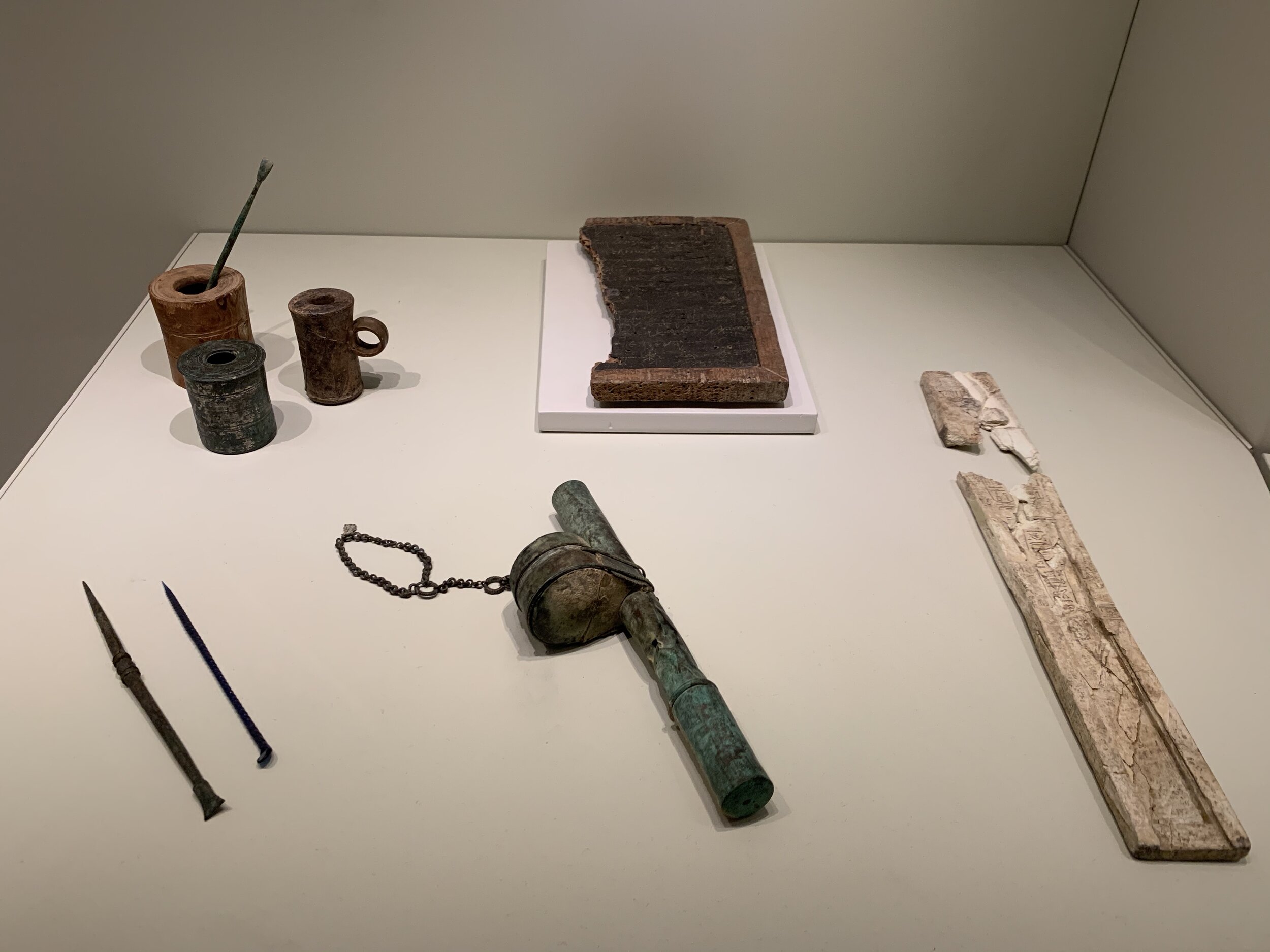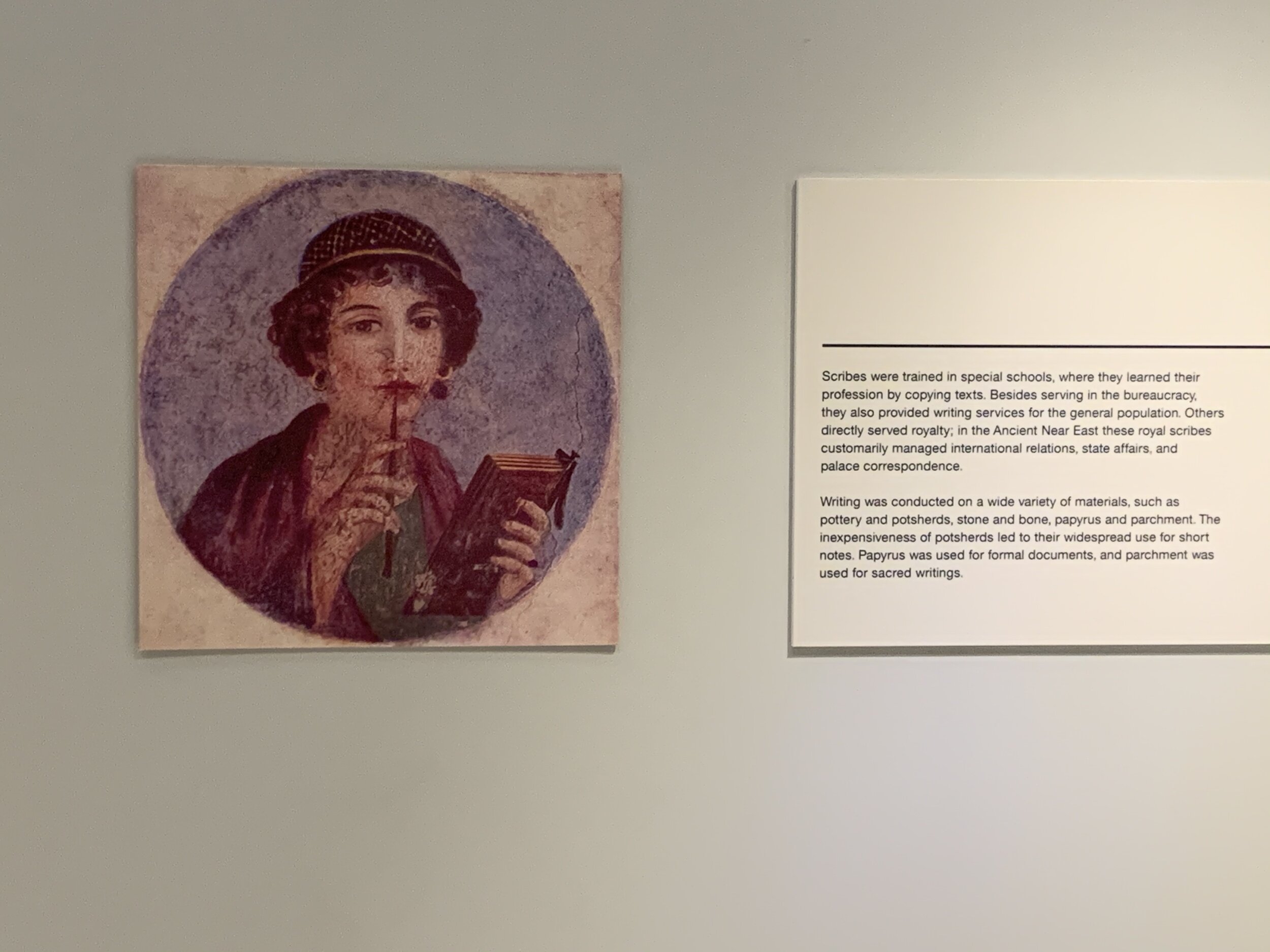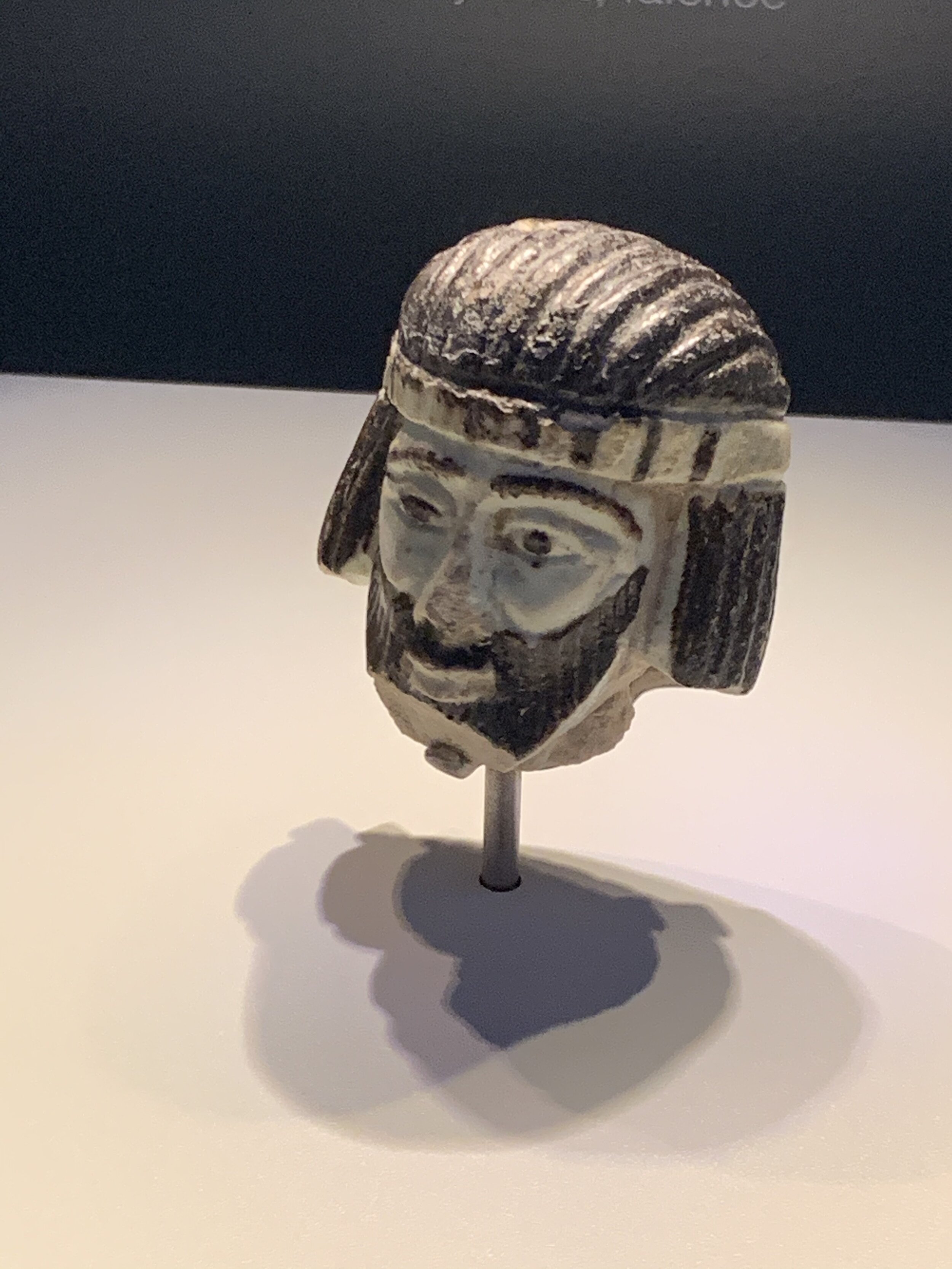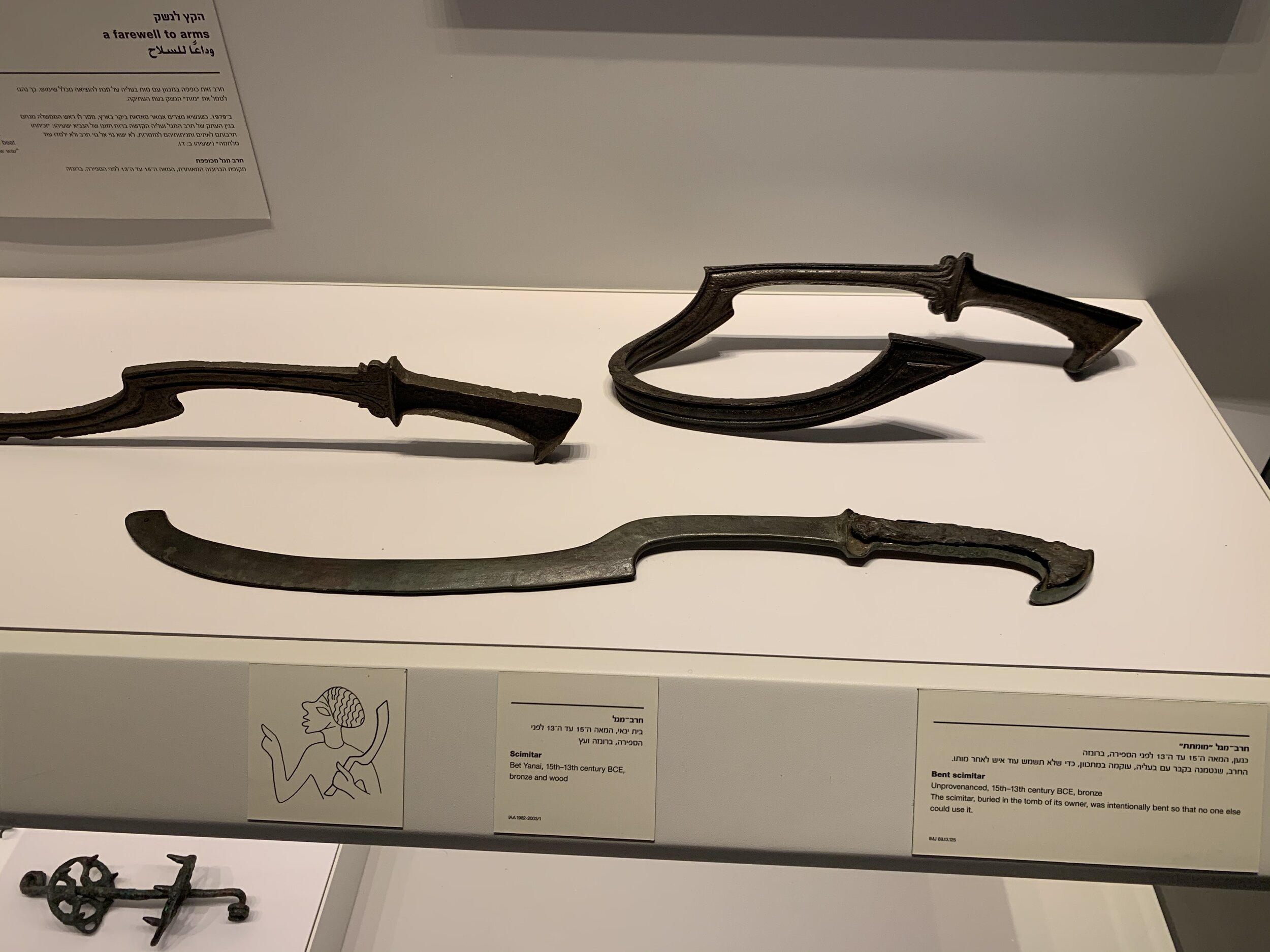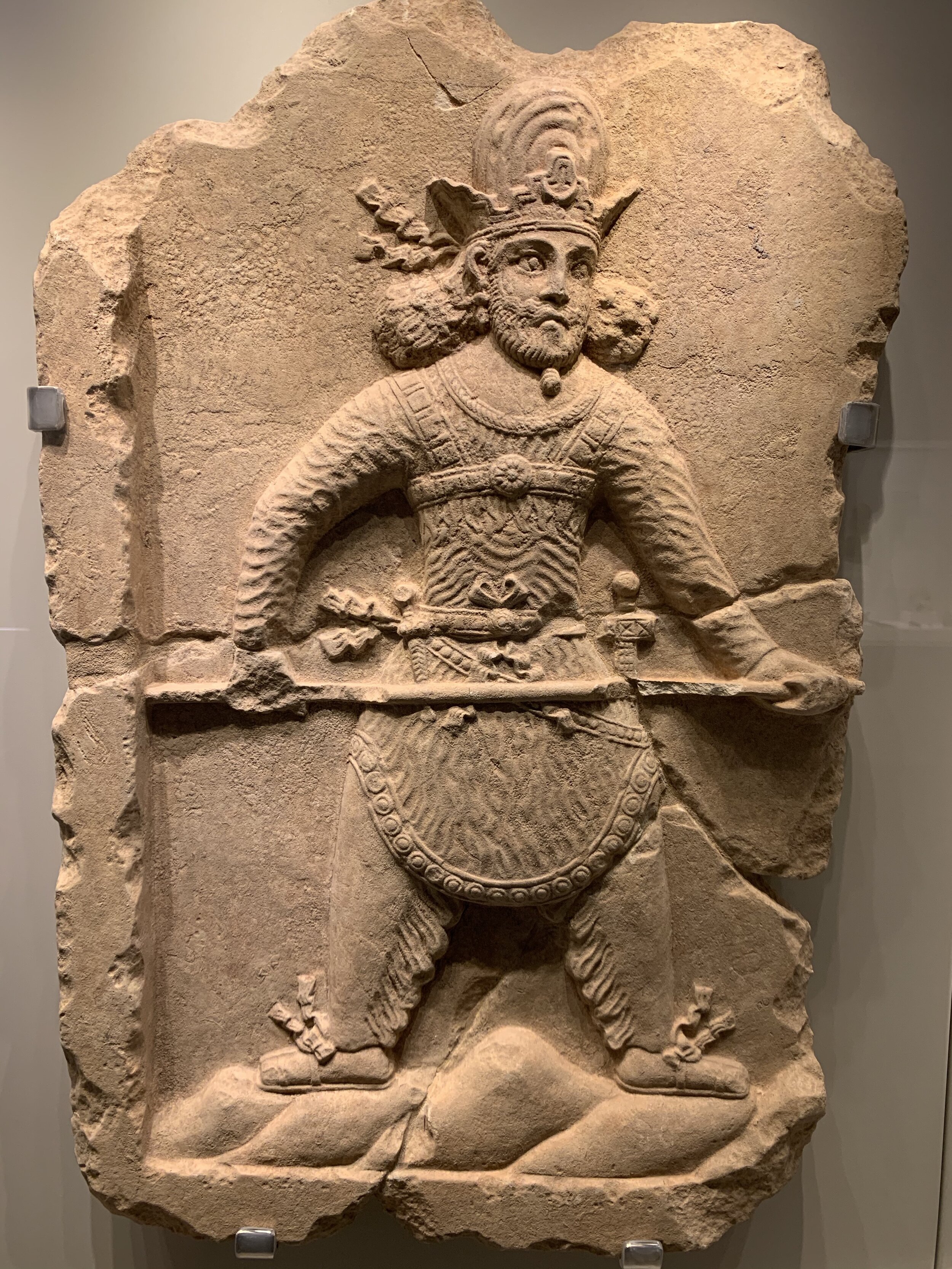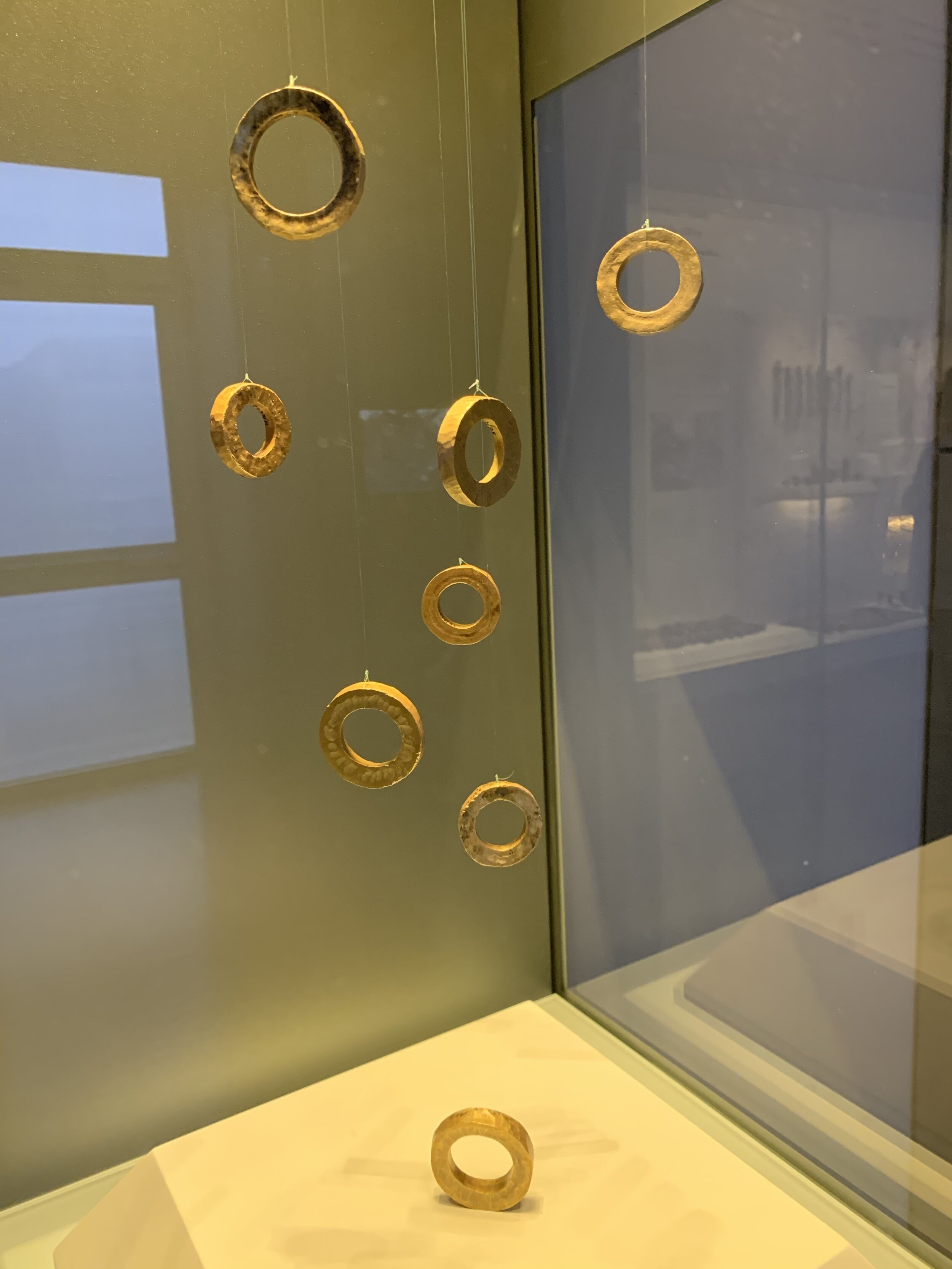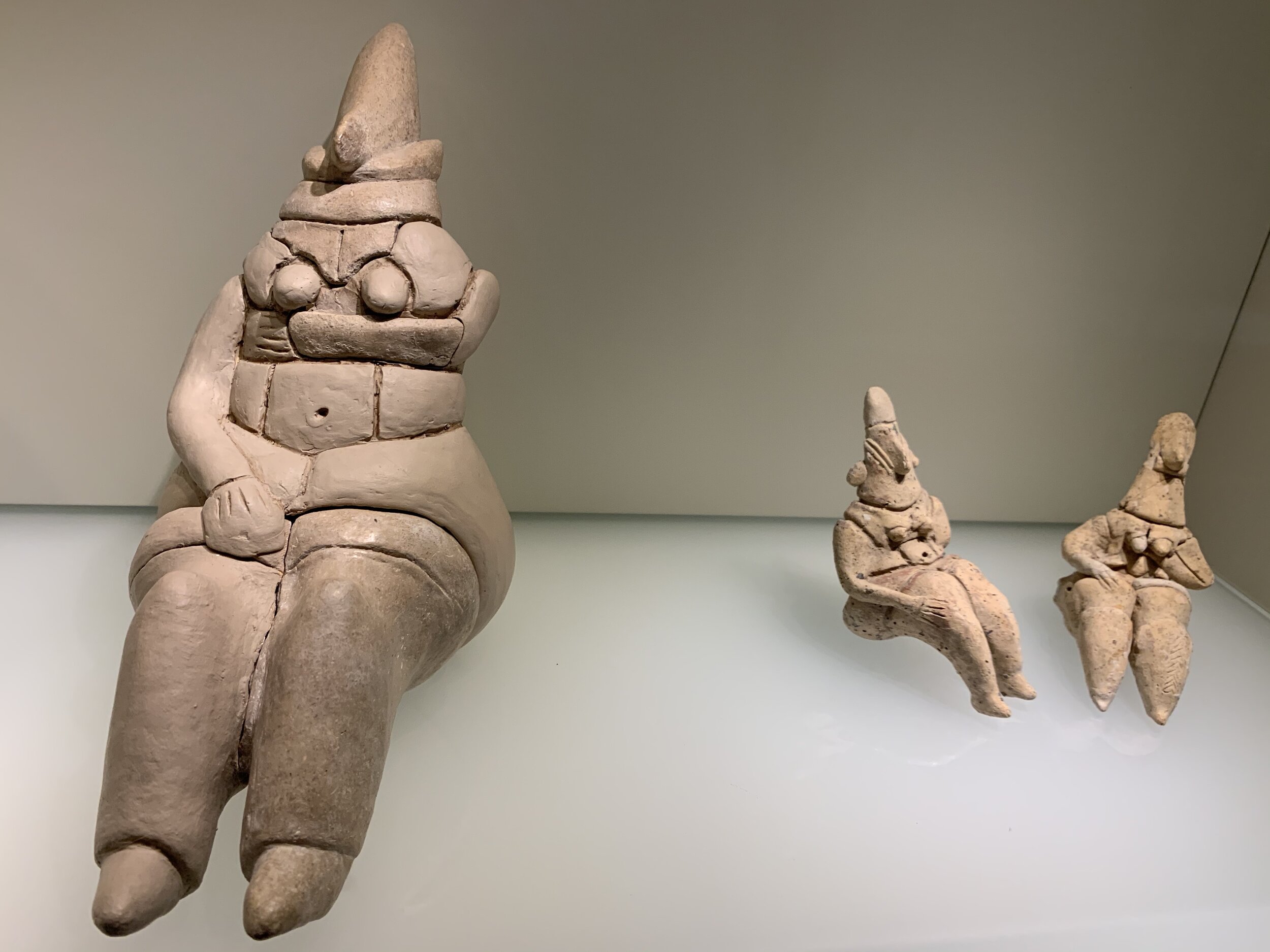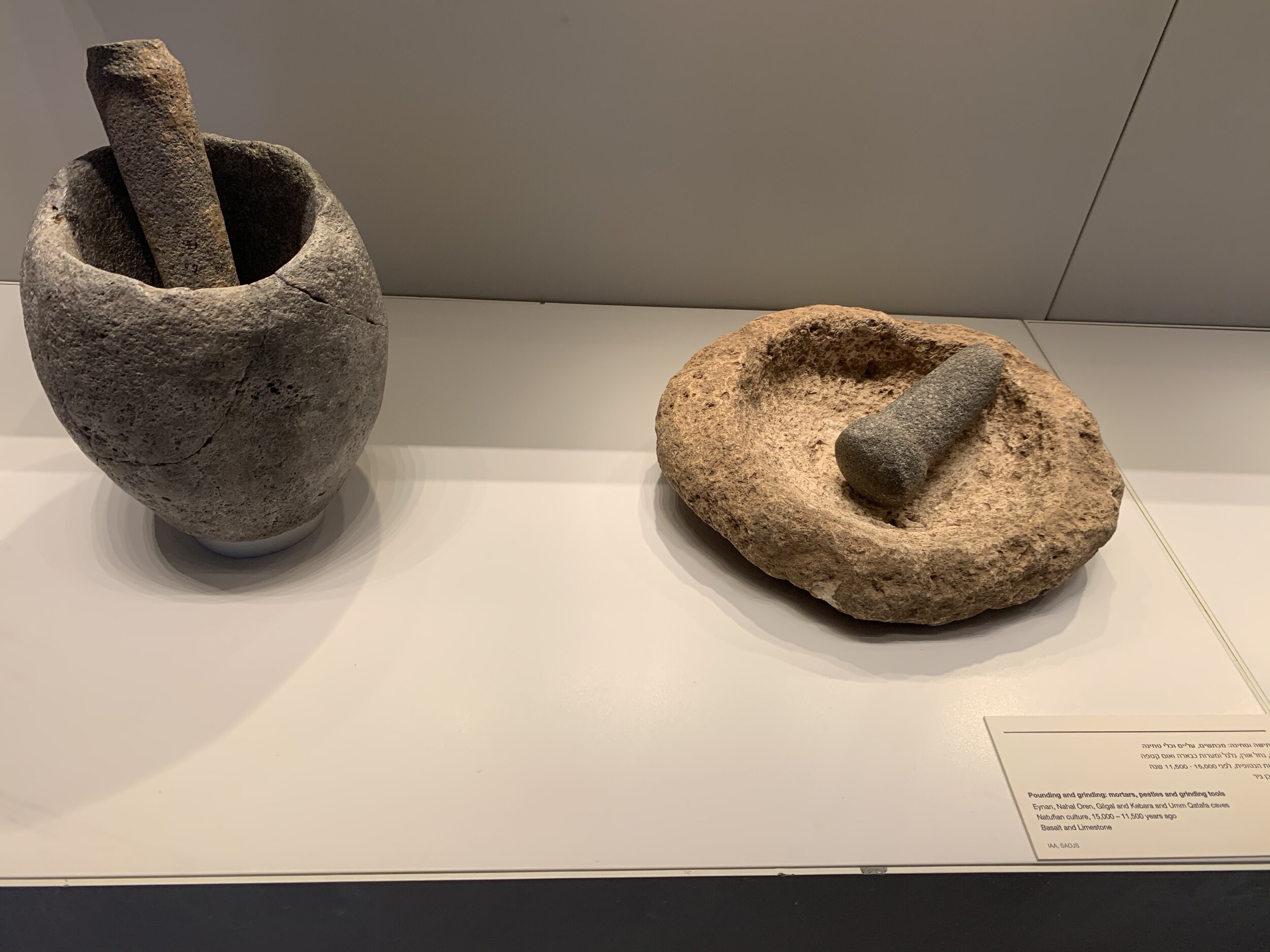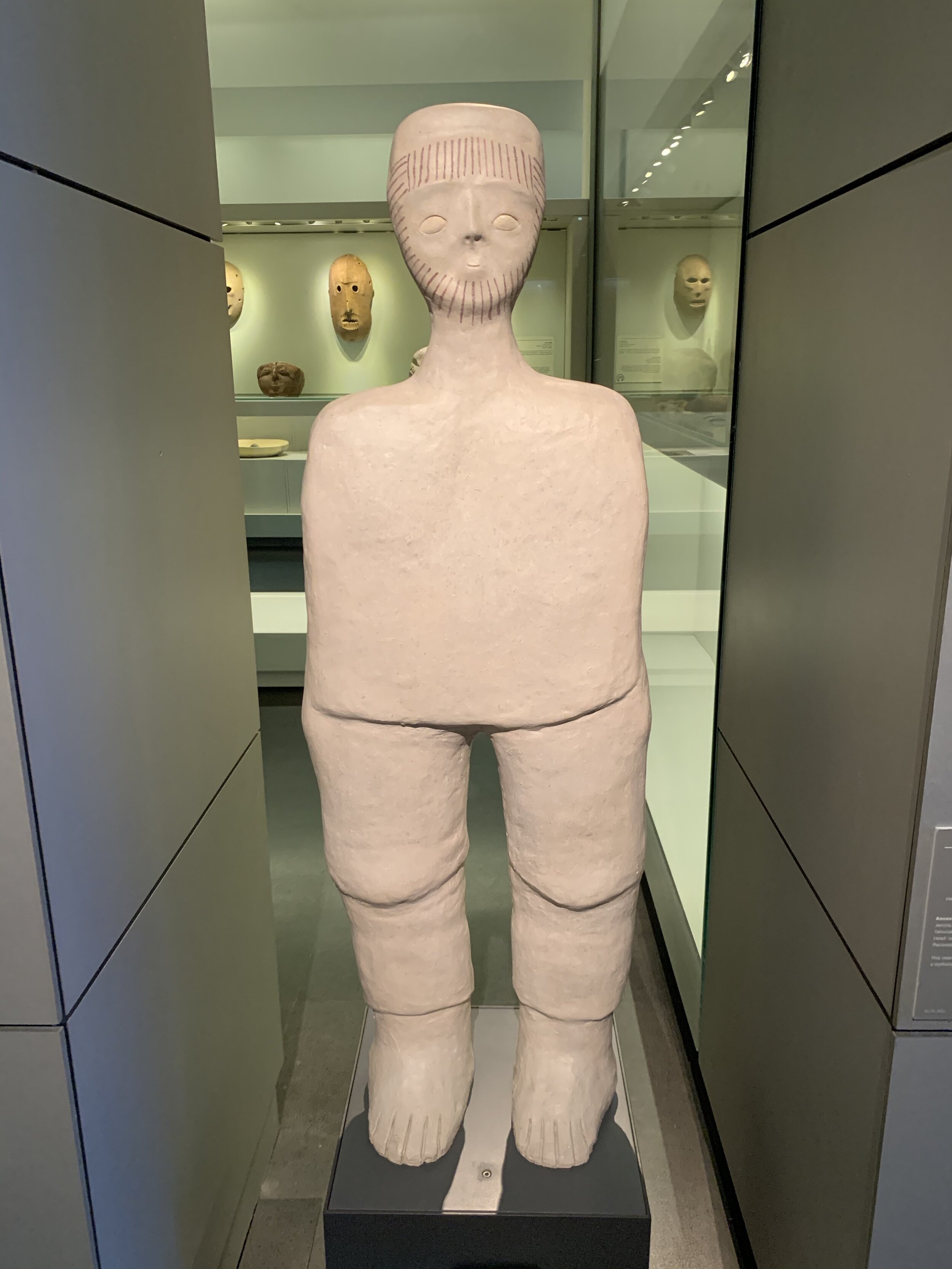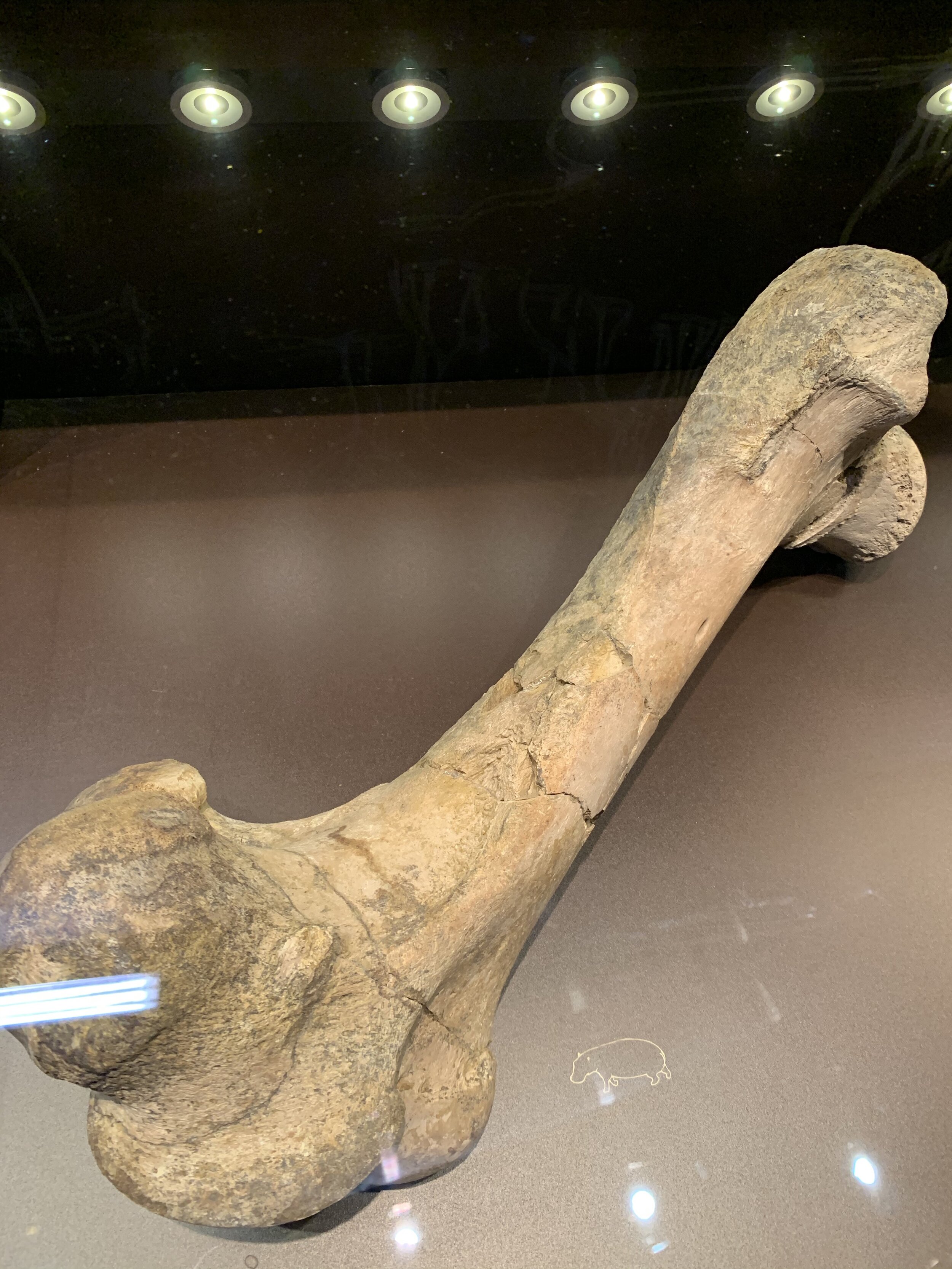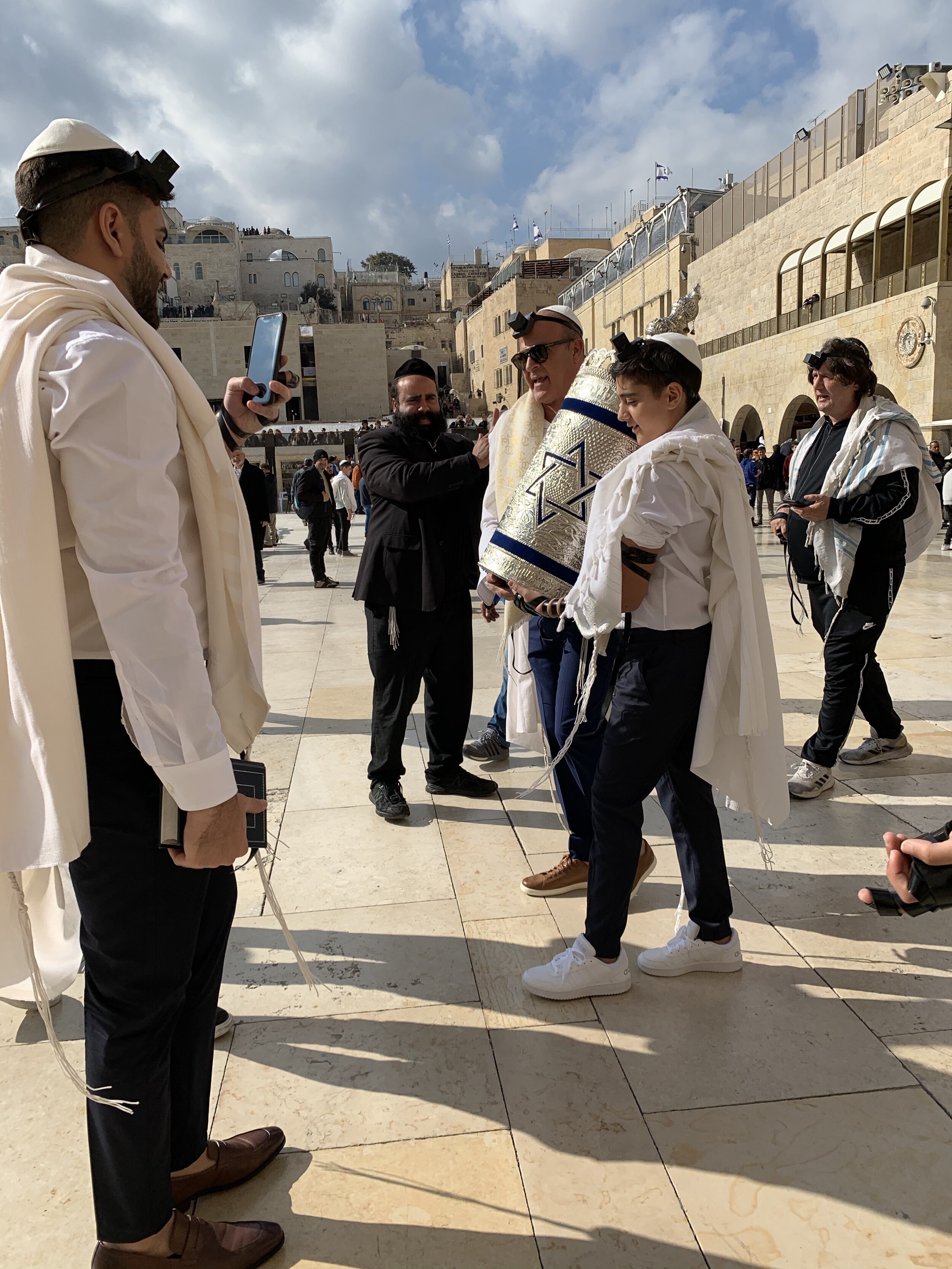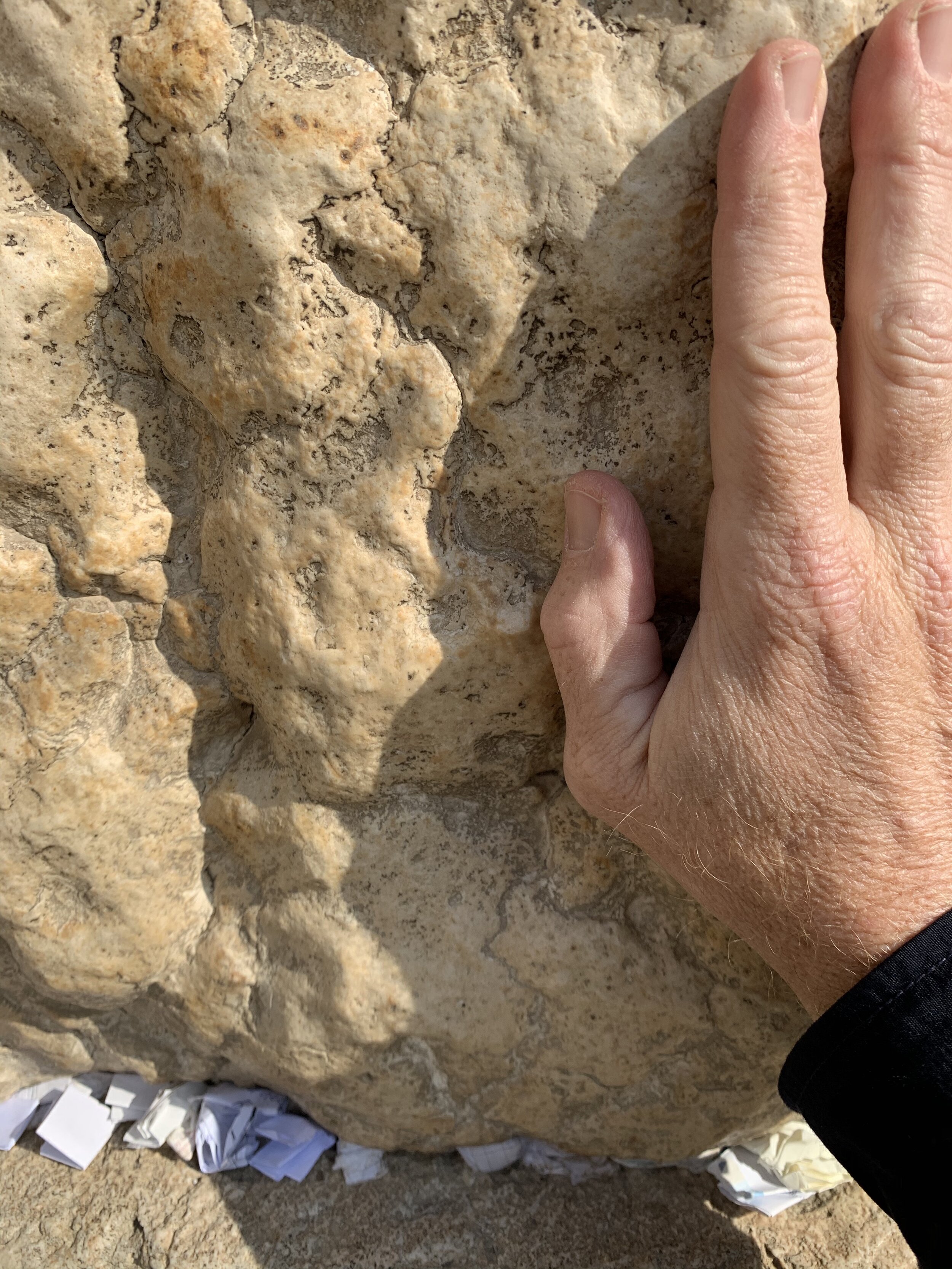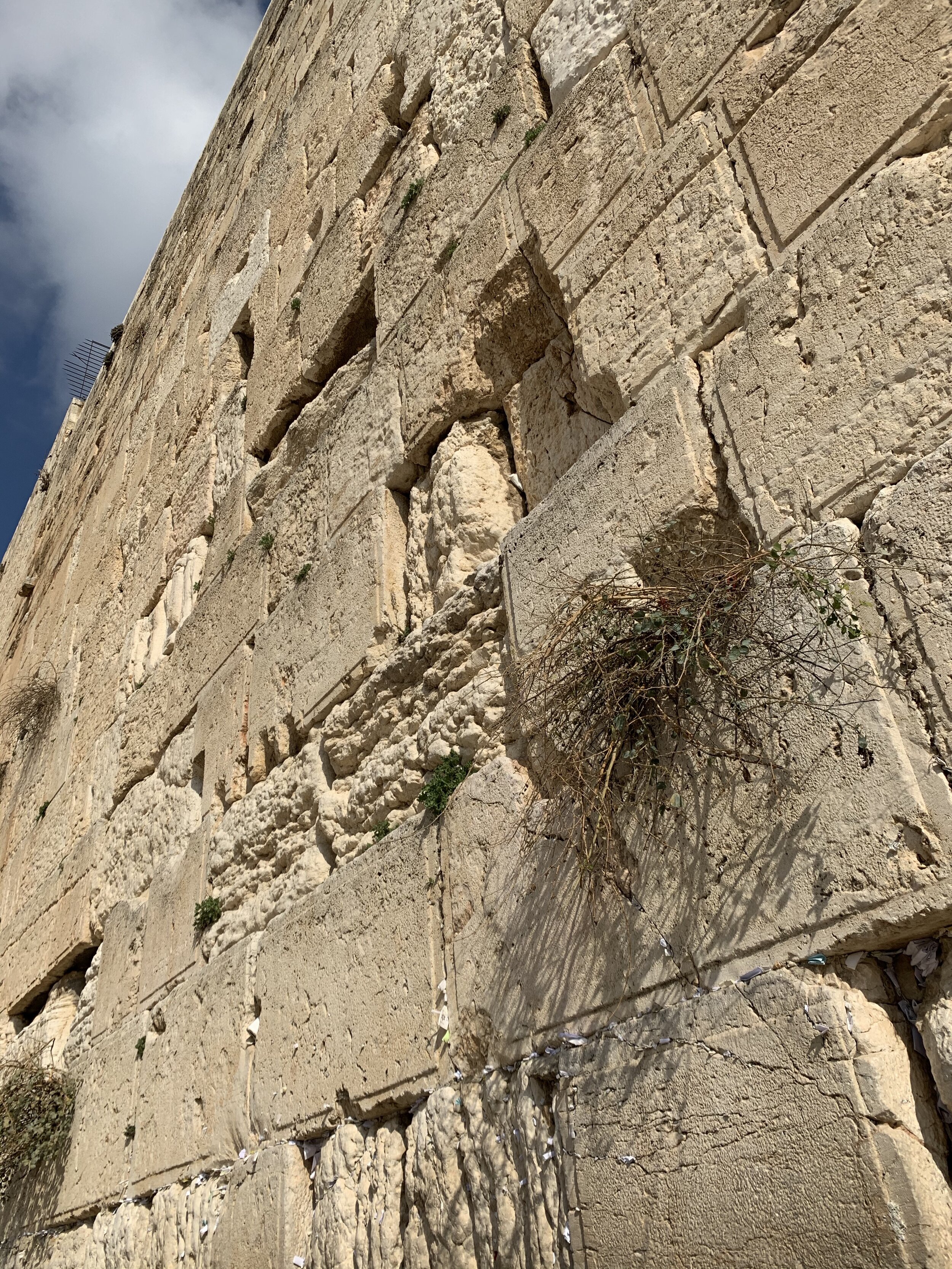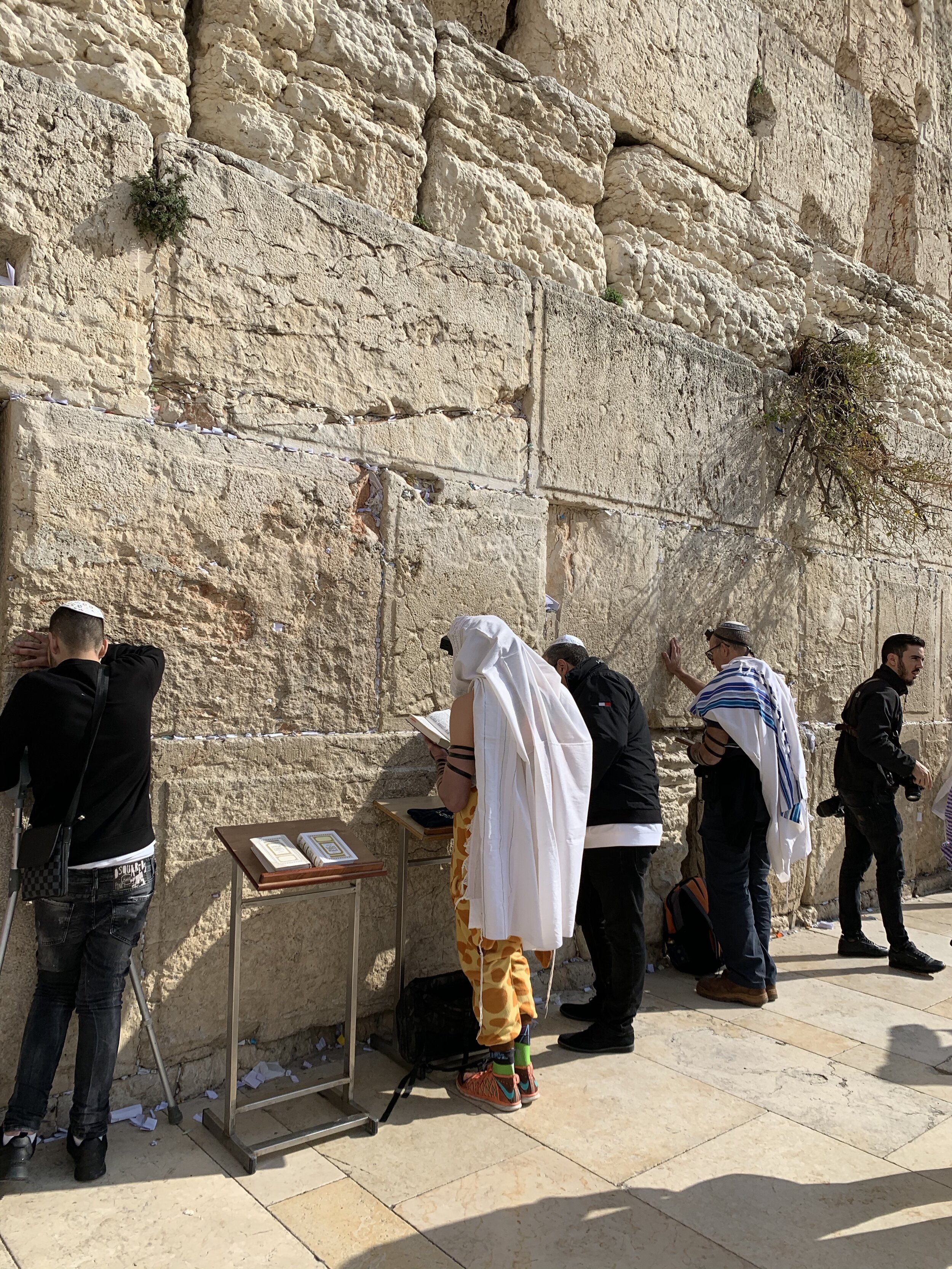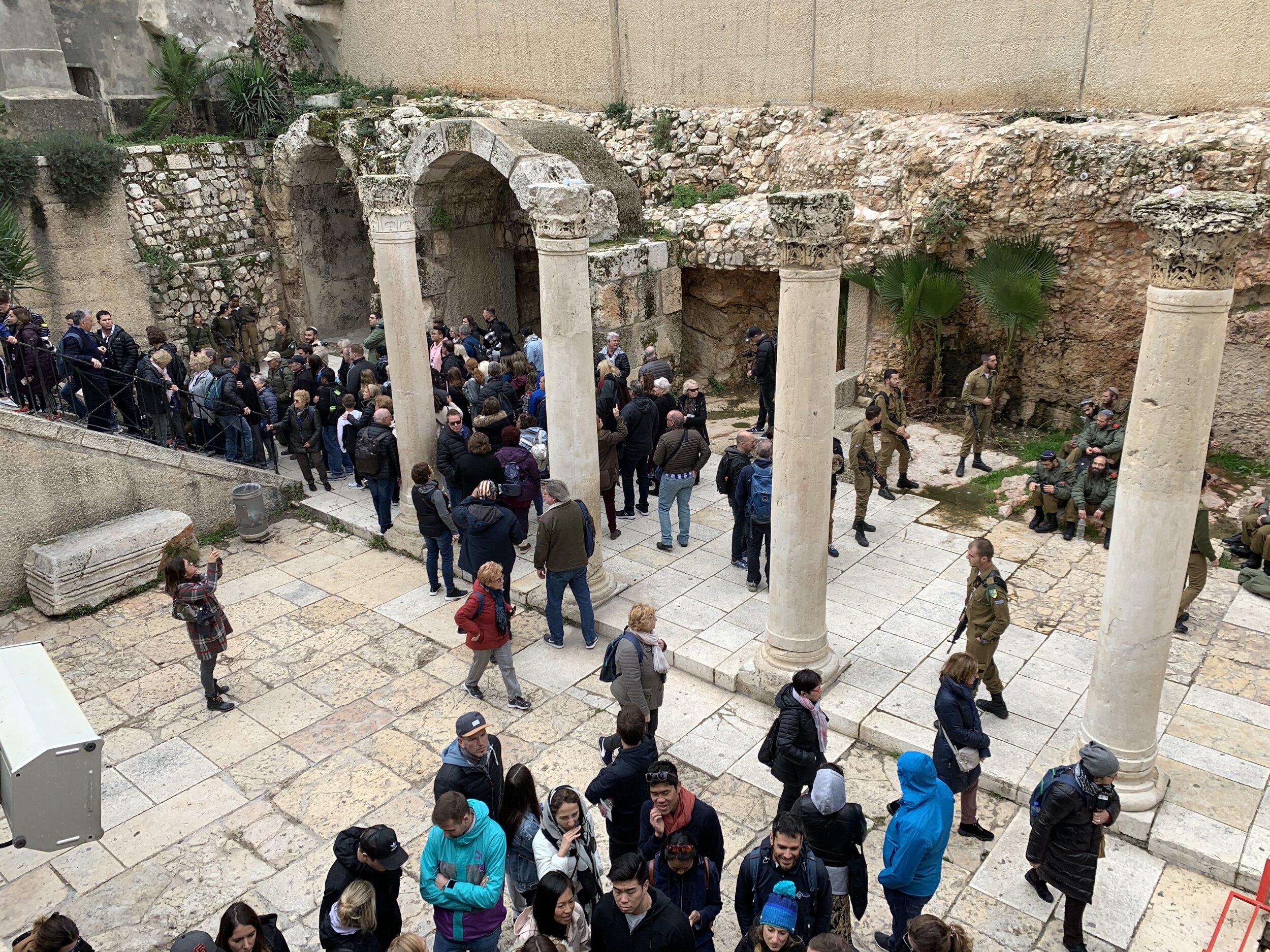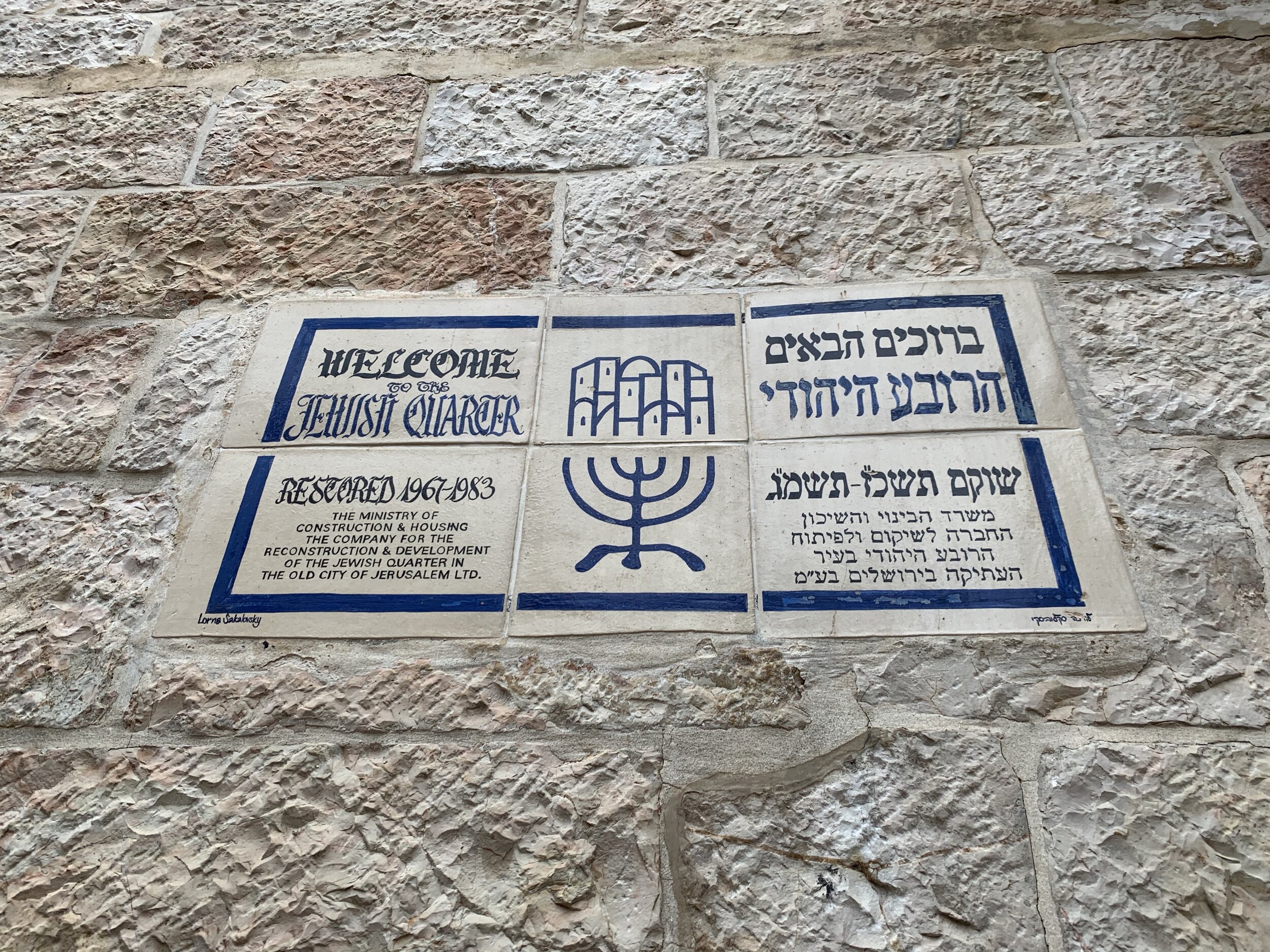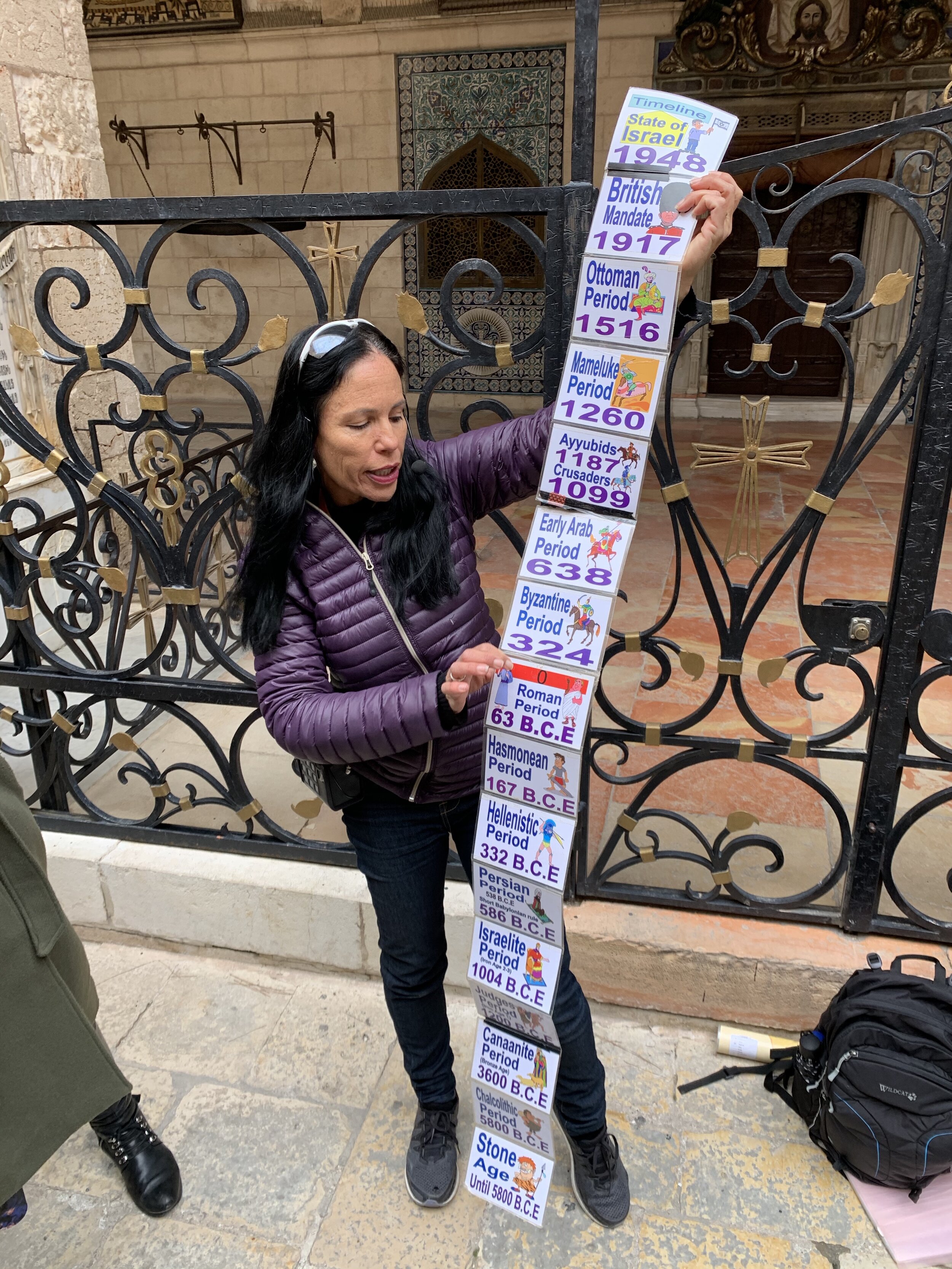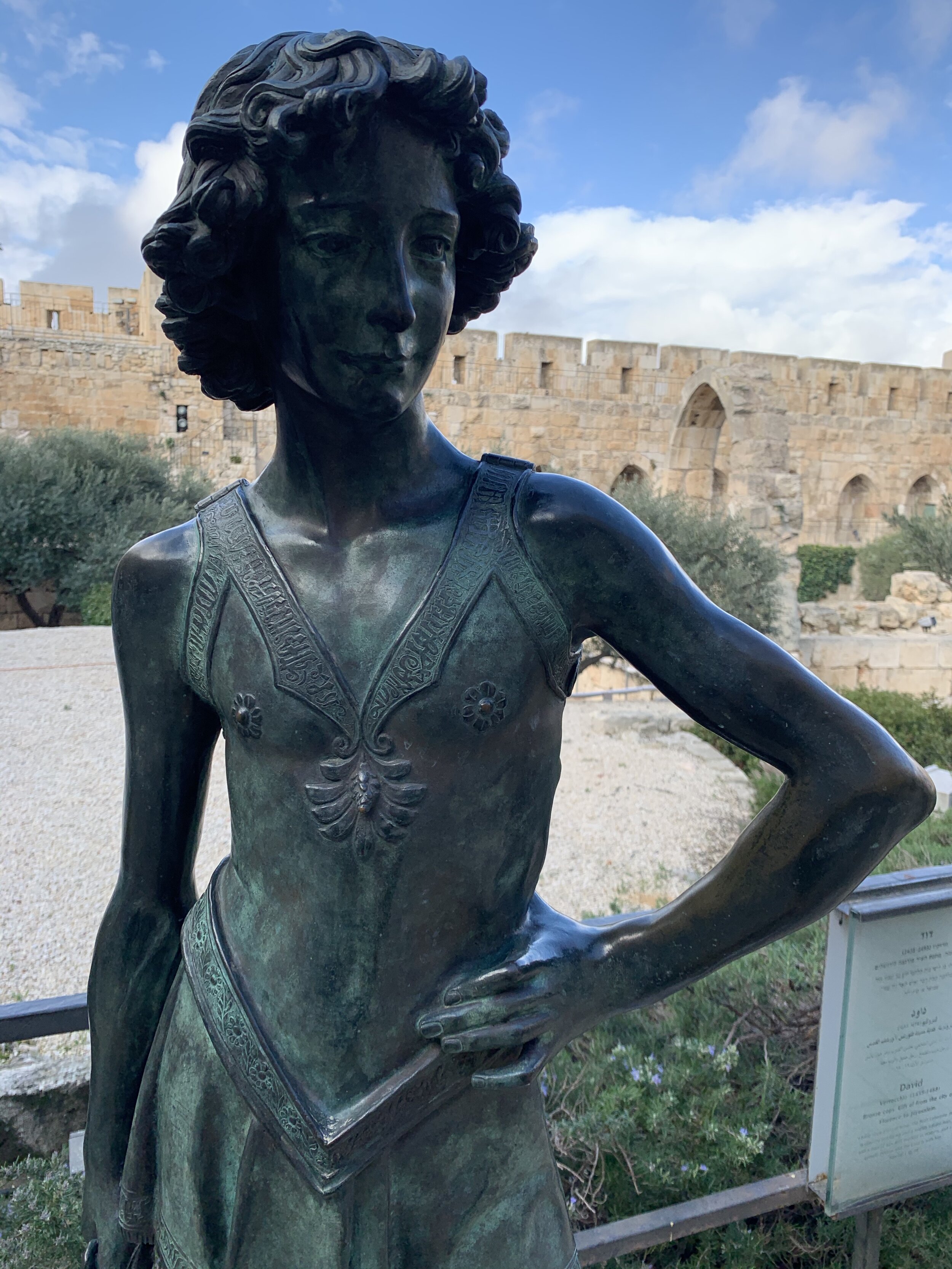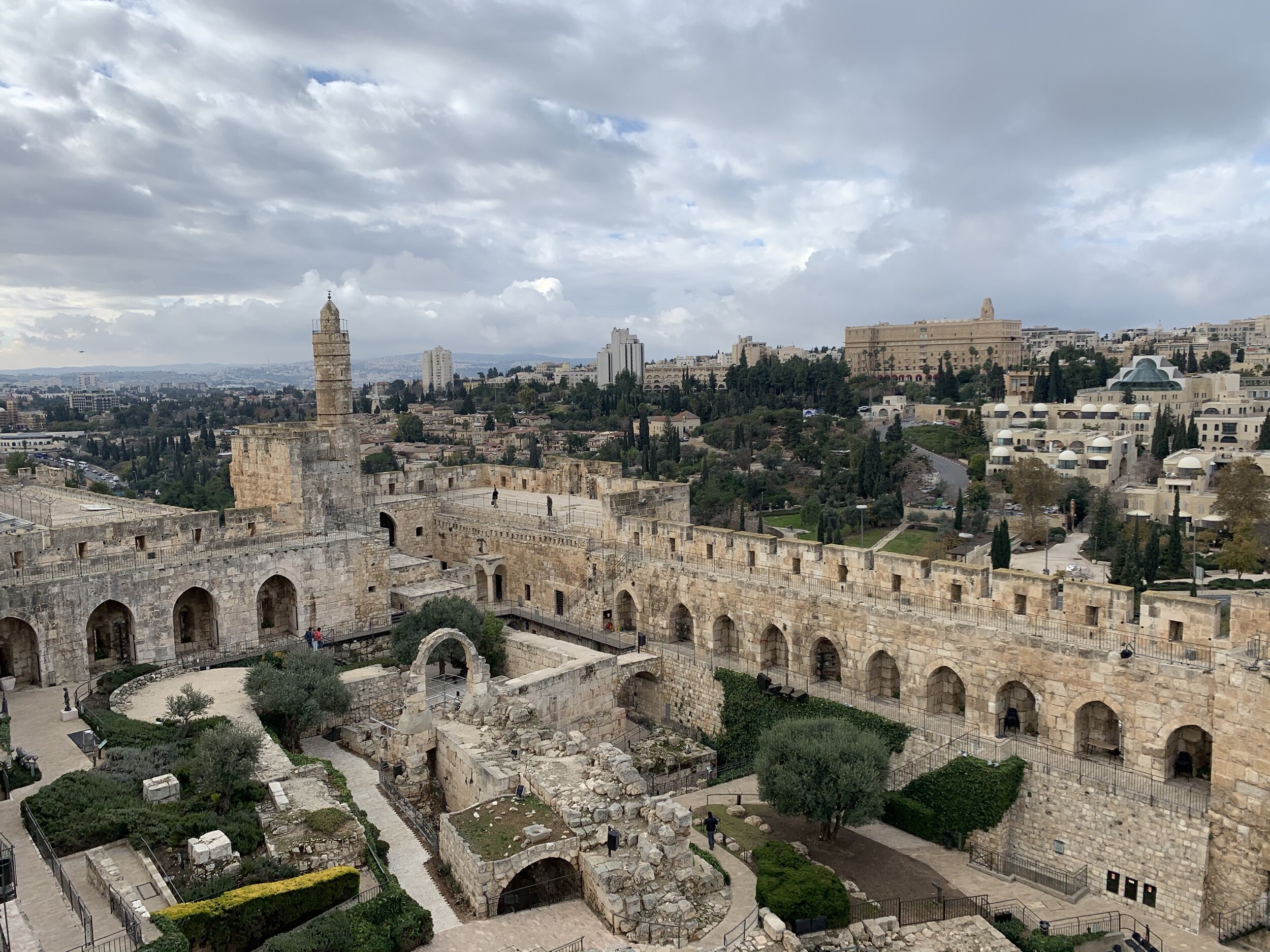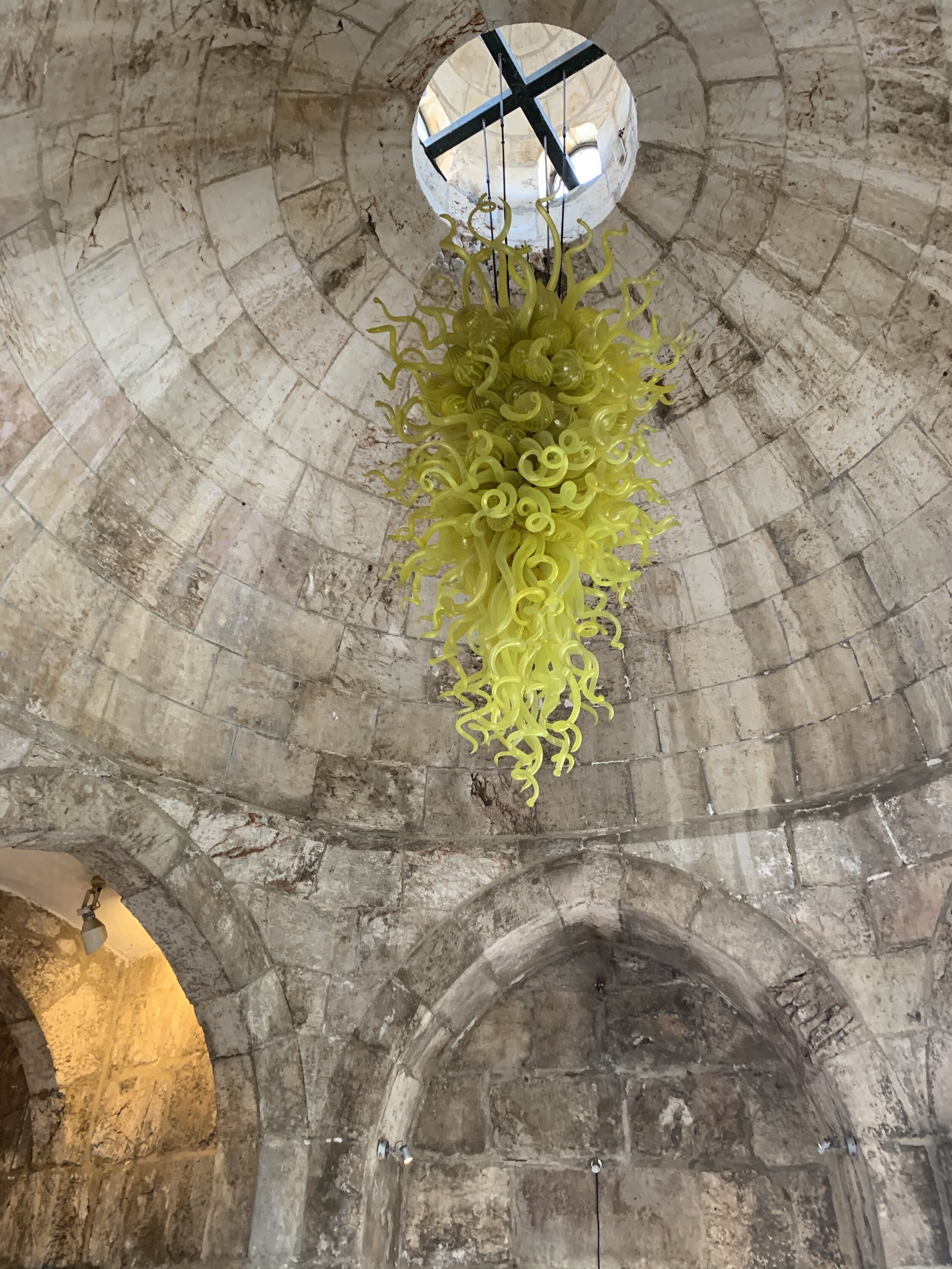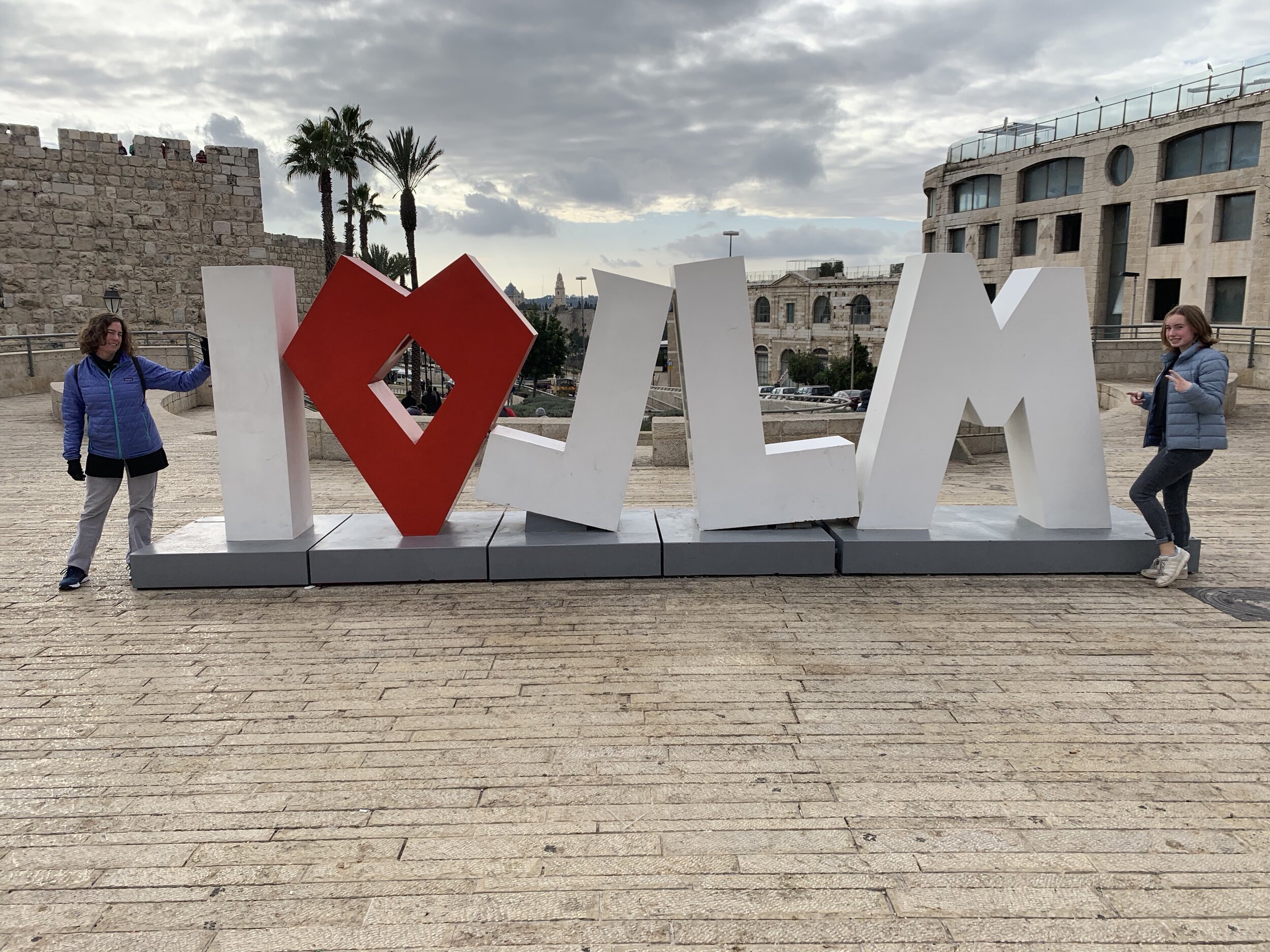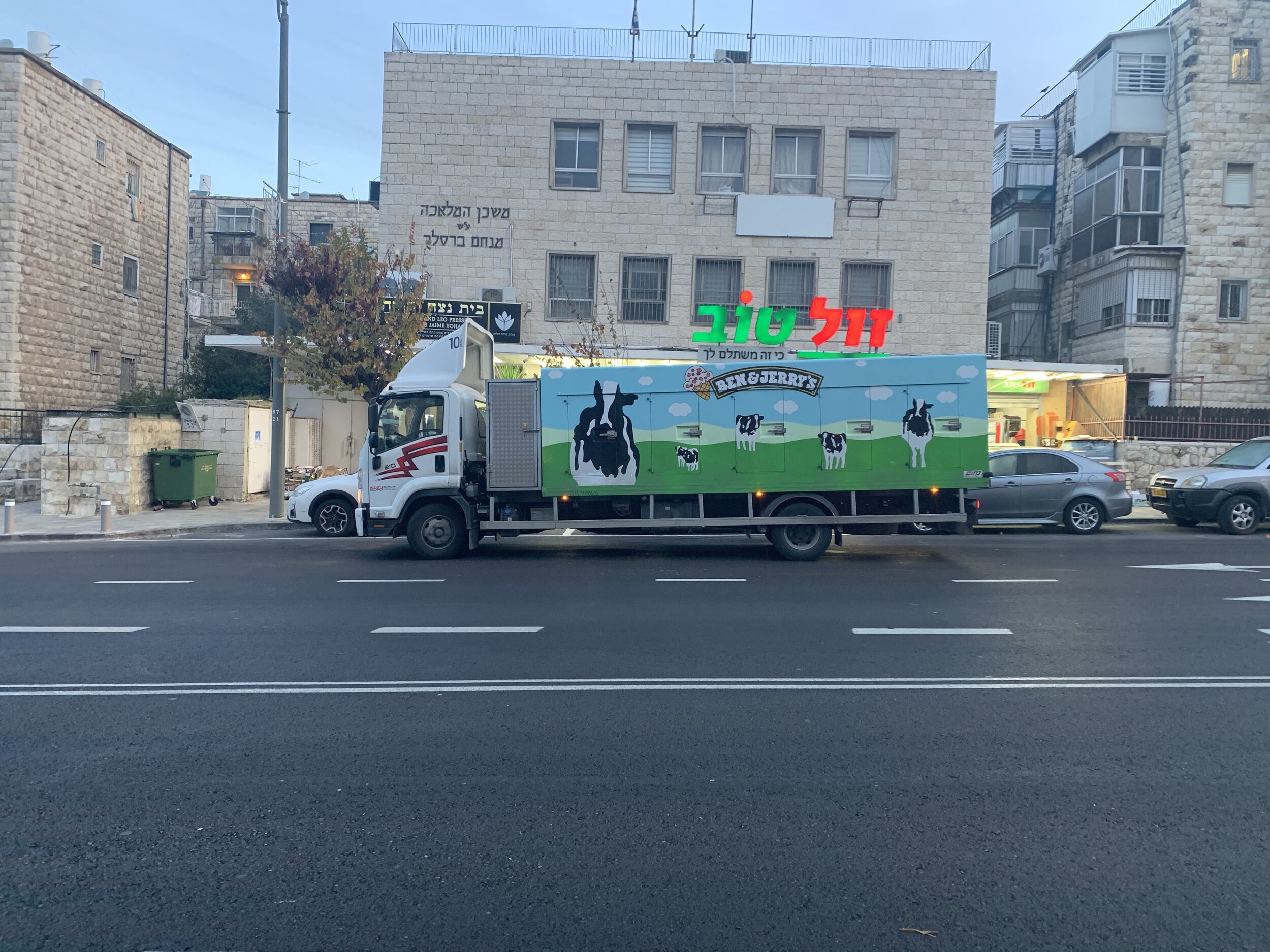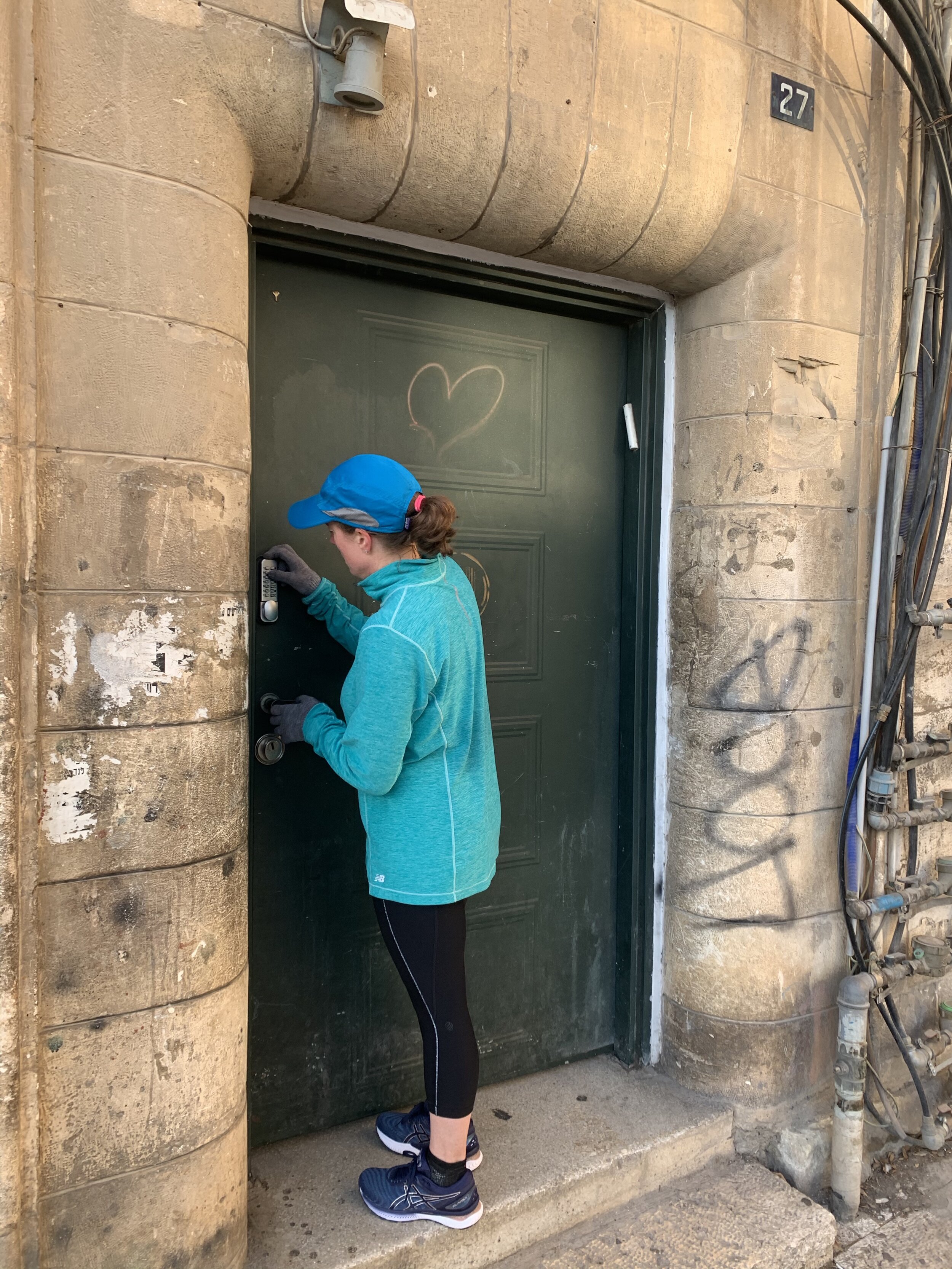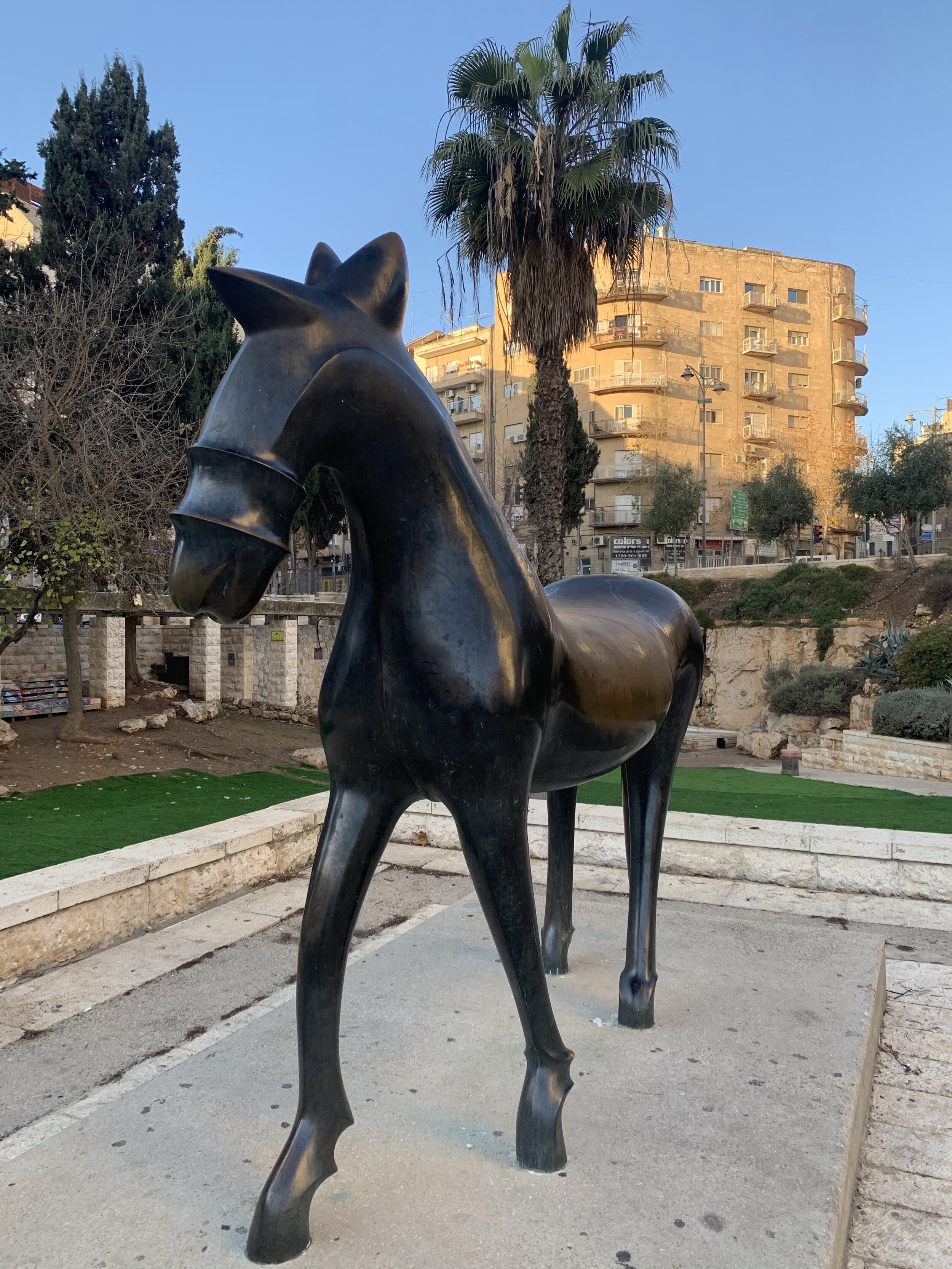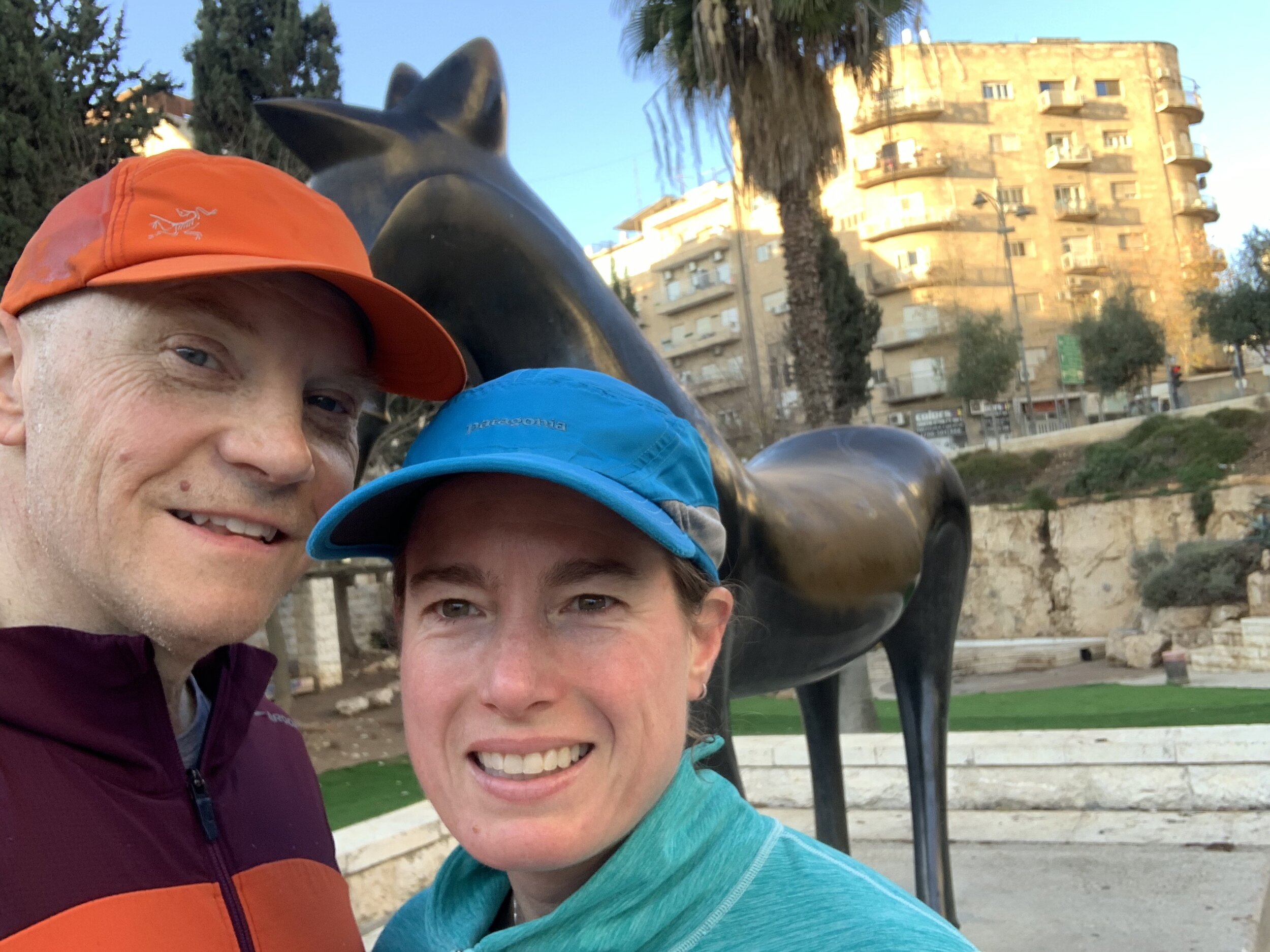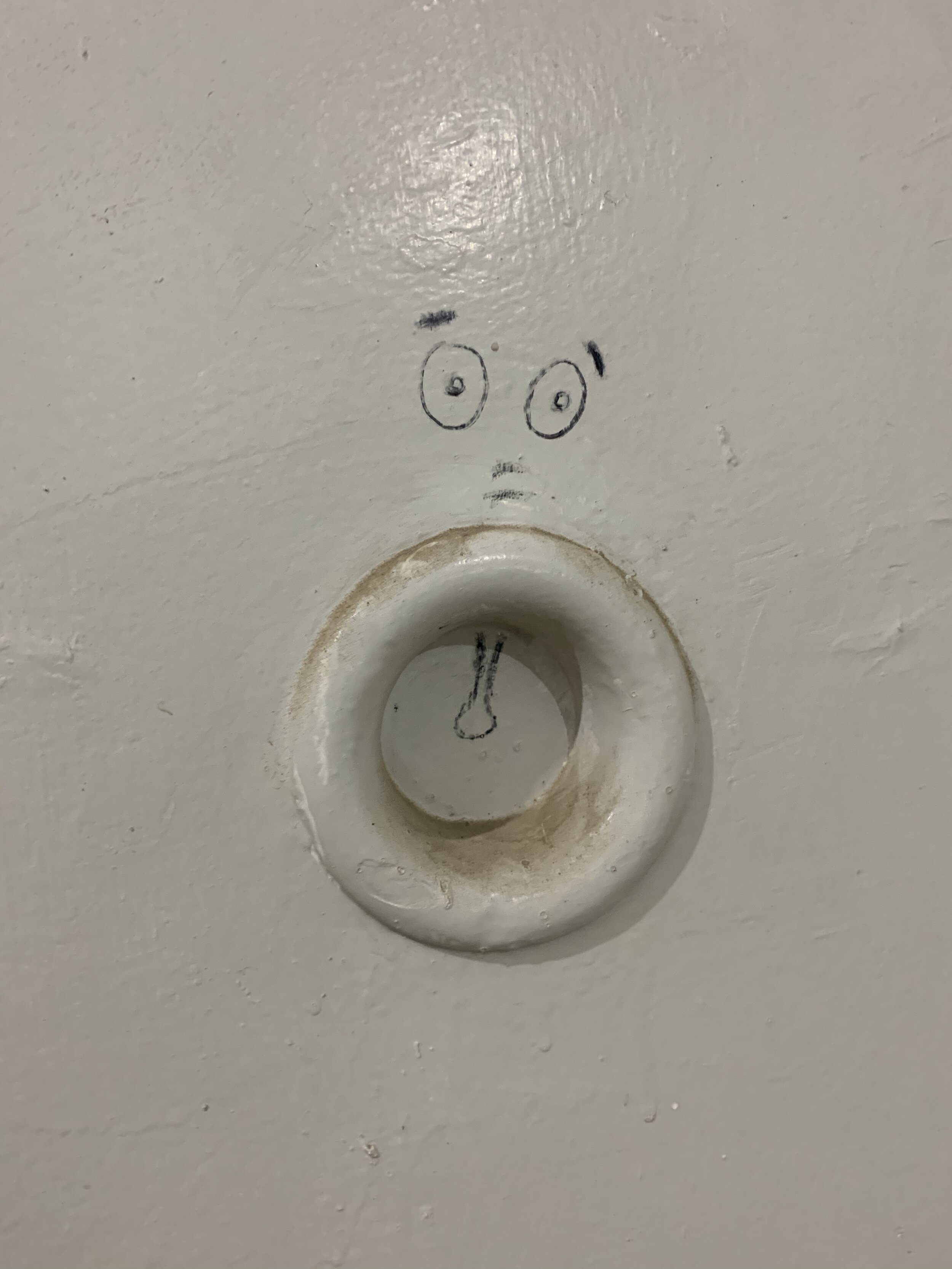We rolled into Jerusalem confident we could conquer a new city with our open-hearted interest in learning. I’d booked a centrally-located apartment that had the best reviews for attentiveness and general on-top-of-it-ness. We also wanted a place that was just a short walk to the early morning meet up for the tour we booked for the following day. We nailed it and at essentially half the price of everything else available (which was still expensive, being Israel). That partly justified the bill for that evening’s splurge meal at a restaurant recommended by our friends (Rooftop in the Mamilla Hotel), an Aaron Rodgers “Hail Mary” toss away from the Old City’s outer wall. Rooftop is one of those tasty art-on-a-plate places with a few too many people taking pics of their food to fully enjoy. The walk back and forth to our apartment with a considerable chill in the air was an even better experience. Jerusalem unfurled around us as a rewarding city to explore on foot.
That following day’s tour took us to a trifecta of places in the Judean Desert to the east of Jerusalem. Masada, Ein Gedi, and the Dead Sea. The Masada was a castle fortress built atop a natural 450-meter tall rocky plateau under the First Century reign of master builder and general megalomaniac Herod the Great (the King of Judea under the Romans). For those who saw the movie “Close Encounters of the Third Kind” or have been to Devils Tower National Monument in South Dakota (USA), imagine finding a slightly-easier-to-reach, broader natural formation atop which to build a desert home for all your peeps. Score one for antiquity’s master builders for scouting that location. That turned out to be such an enduring symbol for Israel, given the Siege of the Masada after the first Jewish-Roman war around 73 AD (or CE for “Common Era”). Also in that neighborhood is Ein Gedi - an unbelievably lush oasis, with waterfalls and bird species aplenty. Which is also within earshot of the current shores of the Dead Sea - the freakishly-salty, dwindling water resource that occupies the lowest spot on Planet Earth (aside from the position occupied by the collective soul of the lawyers defending Harvey Weinstein).
The point of heading out super early was to hike up the Snake Path leading to the top of the Masada. From there we would watch the sunrise over Jordan’s horizon on the eastern edge of the Dead Sea. We did our part by getting up and over @ 4am to the meeting place (the Abraham Hostel - more on them in the final Part of there Posts from Israel). Our driver didn’t. He showed up almost an hour late with an unintelligible excuse that boiled down to not having done so in the past four years of doing this gig. As if we cared about those times. To make our sunrise hike deadline, we endured a borderline-criminal flaunting of all known speed and safety limits. We somehow made it. Rattled, sick to our stomachs, but nonetheless ready to hit the trail. Briskly. Lest we miss the point of the 100 km sprint from Jerusalem to the base of the Masada.
Once we’d recovered, the hike was another sprint. As you can see from the pics below, we made it to the top before the sun rose. After which we took in more of the stories of the defense of that fortress and the mass suicide of the Jewish rebels before being captured by the besieging Romans. It’s the stuff of easily imagined cinematic gold. Unfortunately, that nut was cracked in the form of a miniseries for American TV. For those who remember such a thing as network television programming, you might even recall a rush to epics including the biblical kind after the massive success of Alex Haley’s “Roots” being adapted for TV in the late 1970s. “The Masada” for ABC TV came out in 1981, and was filmed at the actual site in the Judean Desert. The ramp built to film the Romans’ final successful assault on the citadel is still there today.
Much more interestingly, the details through the chapters of the Masada’s history unfold atop that amazing real fortress site. We mingled with Israeli soldiers apparently going through their various graduation ceremonies and packs of young “Birthright Israel” visitors. But just as we were trying to soak up more of the narrative and scene, we had to hoof it down for the ride to our next stop. After waiting for one lingering dood (there’s always one), we began a much less harried drive to Ein Gedi. We even blew right by the site where the Dead Sea Scrolls were found, with limited commentary from our still-sketchy yet increasingly-confident driver. Admittedly, the stroll we took around Ein Gedi’s beautiful contrasts was something of a wasted experience as we didn’t really know what to do with what we had all around us. If we’d had camels to water, it would’ve been better.
We were more fixated upon the upcoming stop at the Dead Sea. Where almost everyone changes into swimsuits and goes for a float. The salt makes it effortless, but brings with it a litany of warnings (salt water = everything stings). The other rub being that we were also encouraged to coat ourselves with mud and let it bake in the sun to a toughened layer. That Dead Sea mud is sold all across Israel. We ended up buying some just outside the Old City the next day, having neglected to do so at the source. We over-applied the mud and mostly spent the ride back to Jerusalem checking for missed patches. No offense to those who swear by mud treatments, but I’m not sure that the benefits outweigh the general grossness of the process. What am I a fan of? Soap. Washing with mud seems somewhat counterintuitive to me.
Much later that night in our apartment, I watched people walking by in the earliest hours of 2020. There was weaving and everyone looked cold (temps were in the single-digits Celsius with clear skies after those first few rainy days we’d seen up near Haifa). Earlier that evening, we’d enjoyed a simple, reassuring dinner at a plainly spectacular Italian restaurant (Pizza Flora) within shouting distance of Mahane Yehuda Market (the spirited Pike Place Market equivalent for Jerusalem). Sarah said it was the best meal she could remember since we left Seattle in mid-August. That was all we needed to end 2019 on a high note. As I watched those strangers walk by and listened to the sound of yet another poorly-functioning dryer toss about our still-damp clothes, the desire to squeeze lessons from all the glorious experiences we’ve plunged into clarified. Day by day with no shortage of missteps in between, I felt a new love for this place that we’d just met. I don’t know what 2020 will hold. We often don’t even know what the next week will offer in terms of new delights and challenges. I went back to bed for a few hours, after a final check on our slightly warmer/drier laundry. We would greet the next morning’s sunrise during a run around the Knesset District and then view some of the most holy places in the present-day world. It was a heckuva good way to meet the New Year.
That day’s primary exploration was Jerusalem’s Old City. The four Quarters therein each merit more detailed address than I will muster now. The Armenian Quarter is surely the RC Cola of them all if I were to employ a dated American soda competition metaphor. Or maybe the AMC Motors of American car companies from the same era. Why are all my comparisons stuck in the 1970s? Let’s instead go back a bit further - the Armenian Quarter is Ringo, the Christian Quarter is George, the Muslim Quarter is Paul, and the Jewish Quarter is John. Everyone has their favorite. They all contributed. More or less.
By the way, I offer that to Jared Kushner as a way to broker Mideast Peace. Or at least start the conversation. Come together. Right now. Over me.
Speaking of which, John Lennon supposedly wrote the kernel of “Come Together” as a campaign song for Timothy Leary to use in his campaign for Governor against Ronald Reagan in California. Then Dr. Leary got busted for drugs and the song became more of a battle over control (John won) in the studio than anything else. The first take was recorded in Abbey Road Studios the day after the Apollo 11 astronauts walked on the moon. In the ensuing 50 years, no one’s really figured out what the four verses of lyrics really mean. John himself called it “gobbledygook.” What does this have to do with Jerusalem? Great question. Nothing really. But if can’t be any less effective than what’s currently being employed in the pursuit of Mideast peace. I should get back to it…my apologies for the delay.
Even on an otherwise eventless Thursday, the Old City’s narrow paths and public spaces were filled with people. Security was tight, as one would hope. Getting into the areas around the Western Wall (or Wailing Wall or Kotel or Buraq) and the Temple of the Mount/Dome of the Rock required diplomatic aggressiveness to not be denied passage through a squirming mass of people. Personal space, as our tour guide reminded us unnecessarily, isn’t much of a thing in that part of the world. Especially when you think about how approximately 35,000 people still live in the single square kilometer of the Old City before you ever pull into that equation how many visitors mill about each day. The Church of the Holy Sepulchre occupies one of the holiest sites in Christiandom, as the location outside which Jesus Christ was crucified, buried and resurrected. That Church was built beginning in the 4th Century and has an ongoing sharing agreement from at least six Christian denominations. The crowds inside were intense, but they would occasionally part in ways that defied logic. Such as when our group got to the point of the Stone of Anointing (upon which Christ’s body was prepared for burial). People rub sore spots or objects on the stone’s floor-level, kitchen-countertop-island-sized expanse to soak up the healing powers of the divine. I saw a woman take a bunch of picture frames and small crosses out of her backpack to rub on the surface. After she’d finished her presumably pre-commerce sesh, I had the Stone all to myself. I was free of ailments, even though Sarah and I had been running every day while traveling. I didn’t really have anything to touch up, but how often does such an opportunity arise? So I put my elbow down for future empowered elbow-rubbing. I refrained from setting up a Jesus-powered double-fist bump, fearing it might be taken the wrong way by whatever higher powers might be monitoring such things. Not long after, the crowds converged and I moved on.
The Old City stuck with me. As does our visit the next day to the expansive Israel Museum. We saw that in part with friends of Sarah’s family who moved to Jerusalem decades ago, raised a family and still call that magical place home. They also took us to one of the Hadassah Medical Center’s hospitals where the synagogue features stained-glass windows designed and donated by the artist Marc Chagall. Throughout our time in Jerusalem, we ate too much and did our morning runs past Mahane Yehuda and through the Knesset District. The struggle to communicate with people hampered us, as it always does in a place where you’re an outsider unequipped with the dominant language. Regardless, we’re anxious to return to Jerusalem. My next post will aim to give a sense of our final morning there, before heading to Tel Aviv. I could go on, but I hope you’ll see some of what we loved about it all in the following photos. Ciao.

